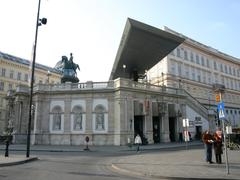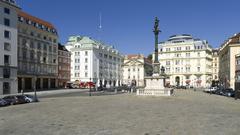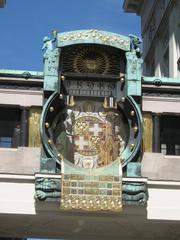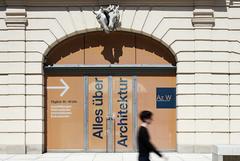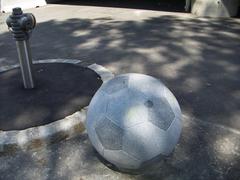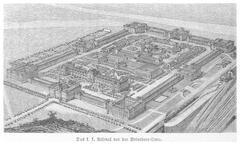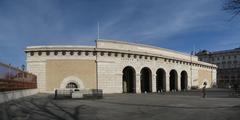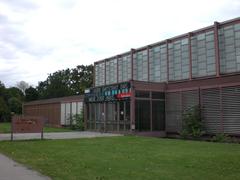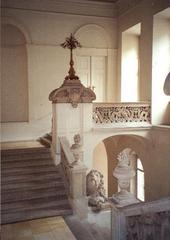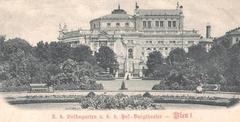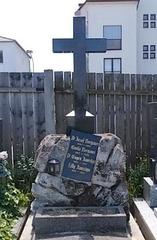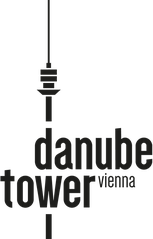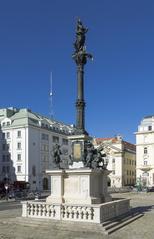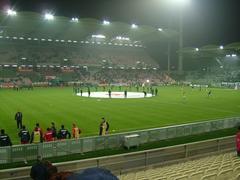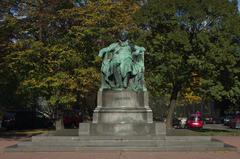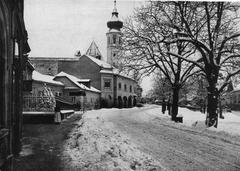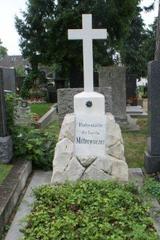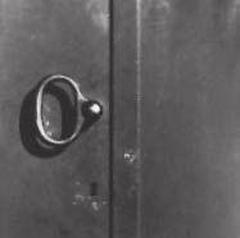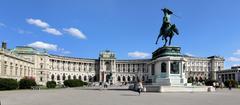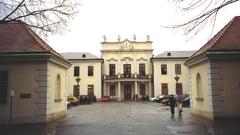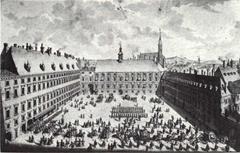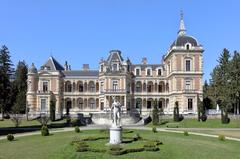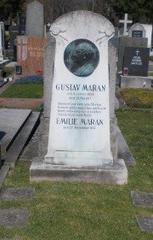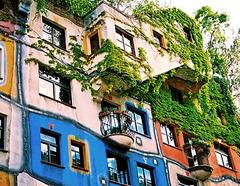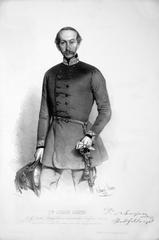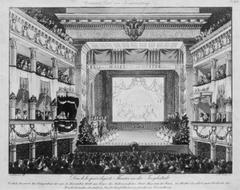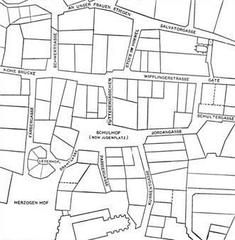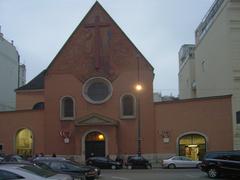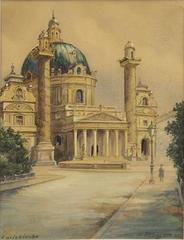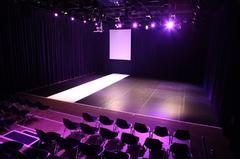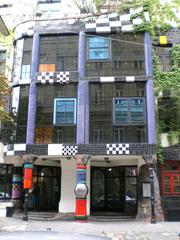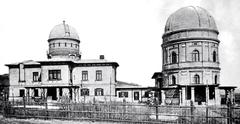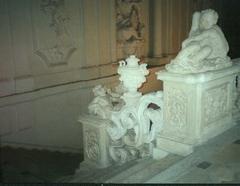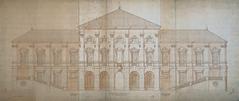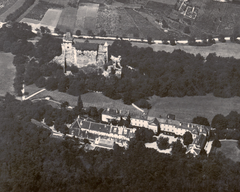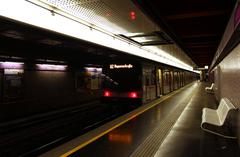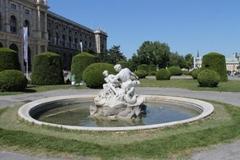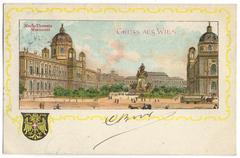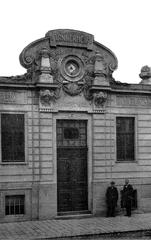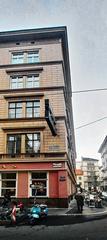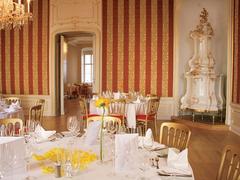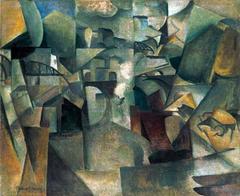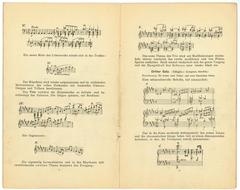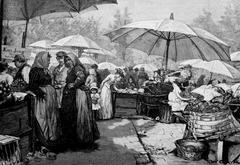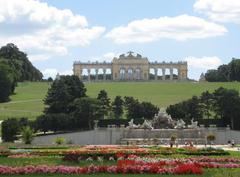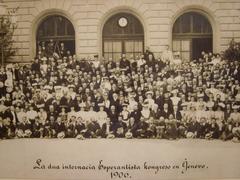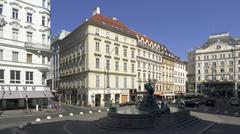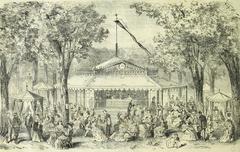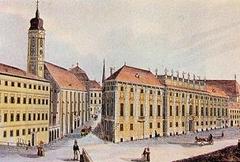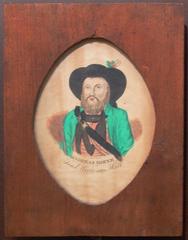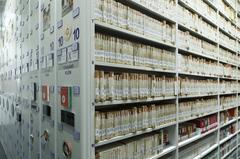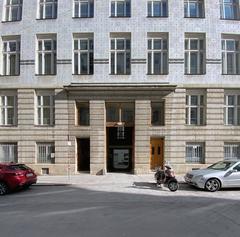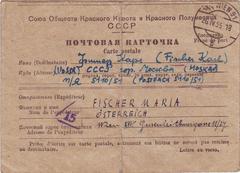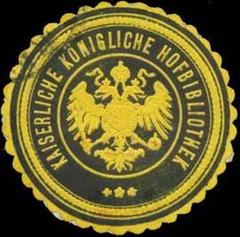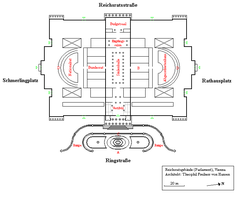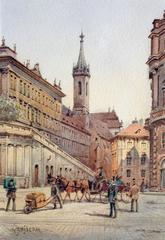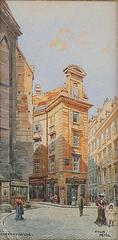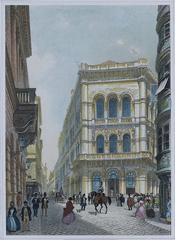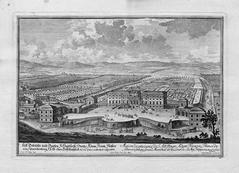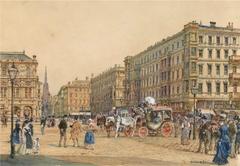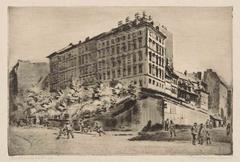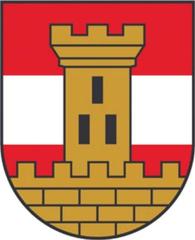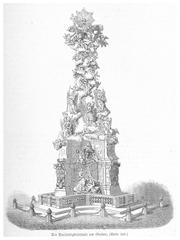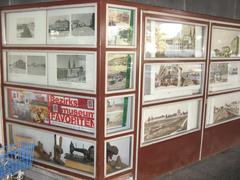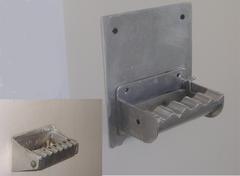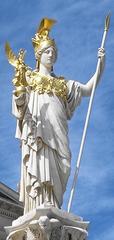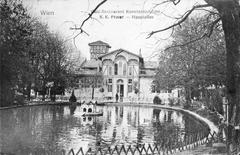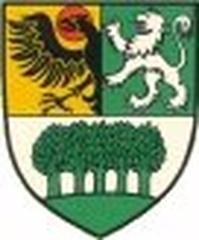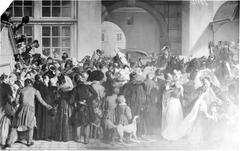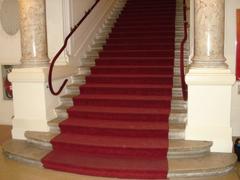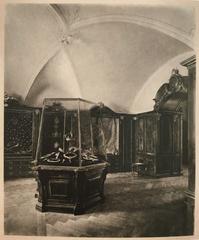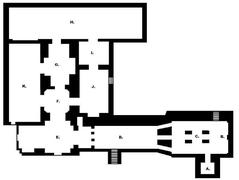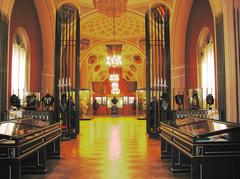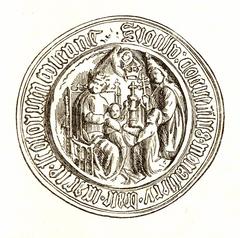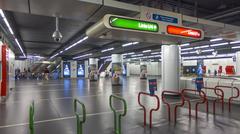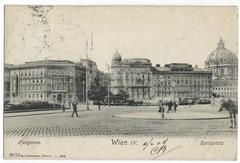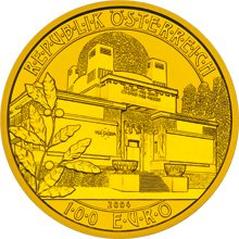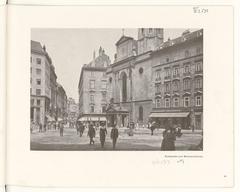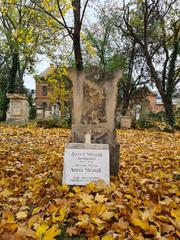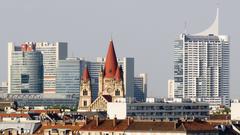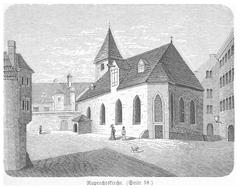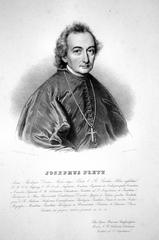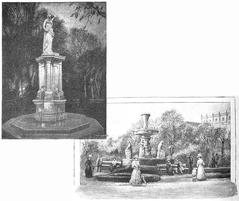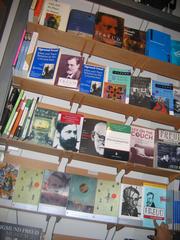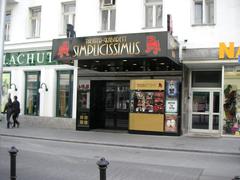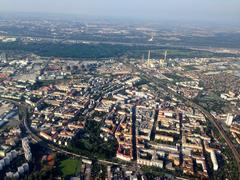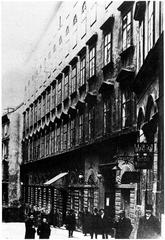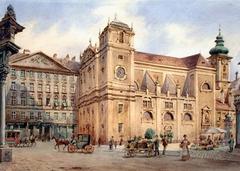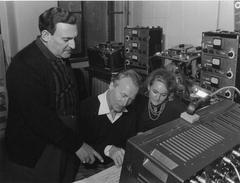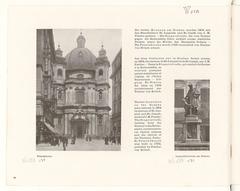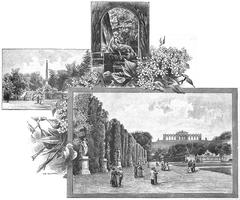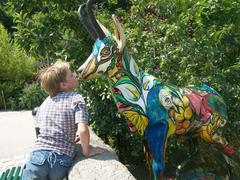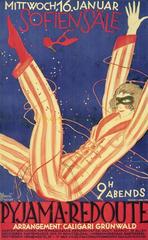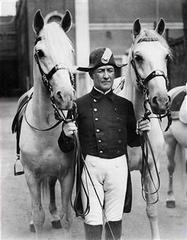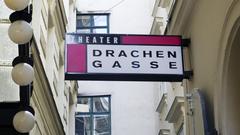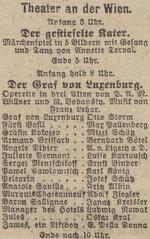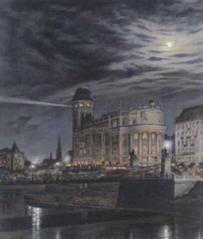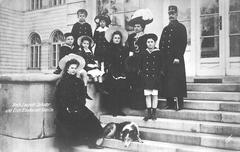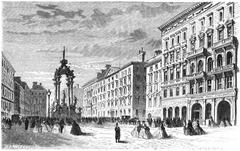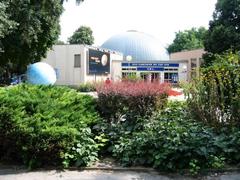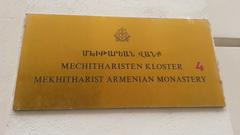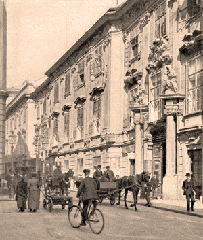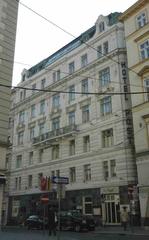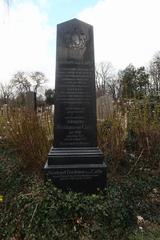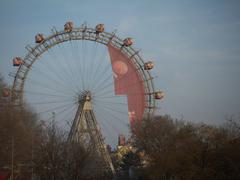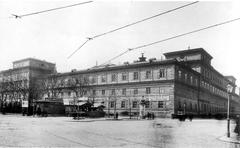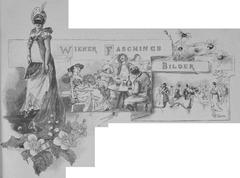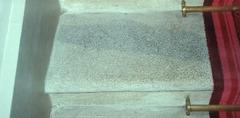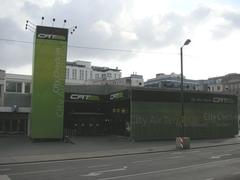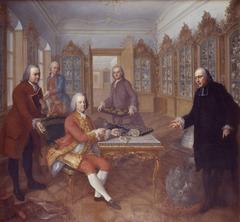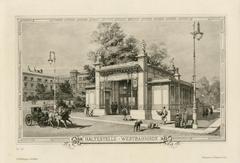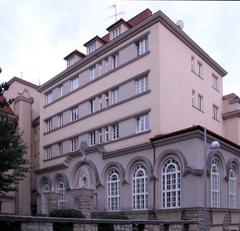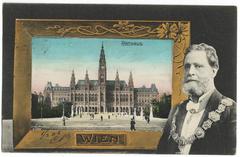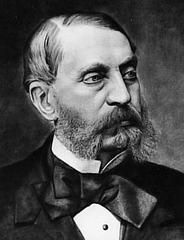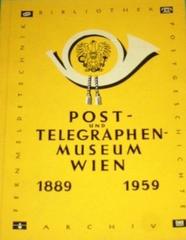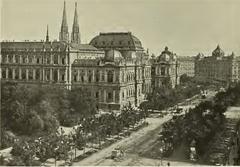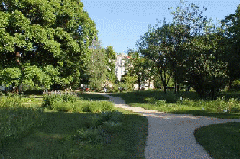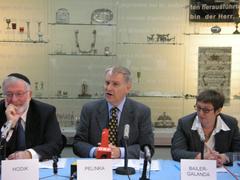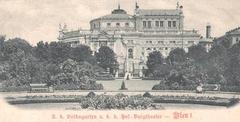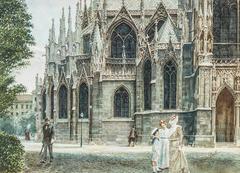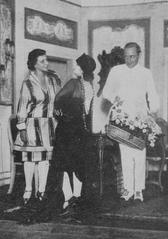
नरेन्टर्म, वियना, ऑस्ट्रिया की यात्रा के लिए एक व्यापक मार्गदर्शिका
दिनांक: 03/07/2025
परिचय
नरेन्टर्म, या “मूर्ख का टॉवर”, वियना के परिदृश्य में एक अनूठा स्मारक है - यह मनोरोग देखभाल और चिकित्सा विज्ञान में शहर की अग्रणी भूमिका का प्रमाण है। सम्राट जोसेफ II के अधीन 1784 में निर्मित, नरेन्टर्म यूरोप का पहला उद्देश्य-निर्मित मनोरोग अस्पताल था, जो प्रबुद्धता के मानवीय उपचार, वैज्ञानिक जांच और वास्तु नवाचार के आदर्शों को दर्शाता था। आज, यह विशिष्ट गोल इमारत संघीय पैथोलॉजिक-एनाटॉमिकल संग्रहालय का घर है, जिसमें पैथोलॉजिकल नमूनों का दुनिया का सबसे बड़ा और सबसे महत्वपूर्ण संग्रह है। नरेन्टर्म के आगंतुक चिकित्सा, मनोरोग और सार्वजनिक स्वास्थ्य के विकास में गहराई से उतर सकते हैं, सब कुछ एक भावपूर्ण रूप से संरक्षित ऐतिहासिक सेटिंग में (विकिपीडिया; स्प्रिंगर; वियना डायरेक्ट)।
सामग्री की तालिका
- उत्पत्ति और वास्तुशिल्प डिजाइन
- मनोरोग अस्पताल के रूप में नरेन्टर्म
- पैथोलॉजिक-एनाटॉमिकल संग्रहालय में परिवर्तन
- संग्रह की मुख्य बातें और वैज्ञानिक महत्व
- संरक्षण, नवीनीकरण और आधुनिक भूमिका
- आगंतुक जानकारी
- आगंतुक अनुभव और व्यावहारिक सुझाव
- अक्सर पूछे जाने वाले प्रश्न (FAQ)
- निष्कर्ष
- स्रोत और आगे पठन
उत्पत्ति और वास्तुशिल्प डिजाइन
प्रबुद्धता और उद्देश्य-निर्मित देखभाल
सम्राट जोसेफ II द्वारा आदेशित, नरेन्टर्म मनोरोग देखभाल में एक कट्टरपंथी बदलाव का प्रतीक था, जिसने जेल जैसी कैद को मनोरोग रोगियों के लिए एक उद्देश्य-निर्मित संस्थान से बदल दिया। वास्तुकार इसिडोर कैनवले, जिन्हें बाद में जोसेफ गेरल ने भी जोड़ा, ने 139 व्यक्तिगत कोठरियों वाले बेलनाकार, पांच-मंजिला टॉवर को डिजाइन किया - प्रत्येक में जाली वाले दरवाजे और मूल रूप से, जंजीरें और बुनियादी स्वच्छता सुविधाएं थीं। तर्कसंगत क्लासिकिस्ट सौंदर्यशास्त्र से प्रेरित गोल डिजाइन, केंद्रीकृत पर्यवेक्षण को सक्षम बनाता था, जबकि मजबूत पत्थर निर्माण सुरक्षा चिंताओं और समकालीन चिकित्सा सिद्धांतों को दर्शाता था (विकिपीडिया; प्लैनेट वियना; वियना डायरेक्ट)।
वास्तुशिल्प नवाचार
टॉवर का रूप प्रतीकात्मक और कार्यात्मक दोनों था। इसका बिना अलंकरण वाला क्लासिकिस्ट मुखौटा, मोटी दीवारें और छोटी, जाली वाली खिड़कियां व्यवस्था और तर्कसंगतता के लिए प्रबुद्धता की ड्राइव को दर्शाती थीं। इसके समय की उन्नत सुविधाओं में केंद्रीय हीटिंग के शुरुआती रूप और यूरोप के पहले बिजली के छड़ों में से एक शामिल था, जो चिकित्सीय लाभों में विश्वासित था (प्लैनेट वियना)। “गুগलहपफ” का उपनाम, एक अंगूठी के आकार के केक के बाद, इसके विशिष्ट आकार से उत्पन्न हुआ।
मनोरोग अस्पताल के रूप में नरेन्टर्म
शुरुआत में, नरेन्टर्म ने मनोरोग देखभाल के प्रति अधिक प्रगतिशील दृष्टिकोण का प्रतिनिधित्व किया, मानसिक रूप से बीमार व्यक्तियों को अपराधियों के बजाय रोगियों के रूप में देखा। इसके बावजूद, उपचार अक्सर 18वीं सदी की प्रचलित चिकित्सा पद्धतियों के अनुरूप अलगाव और शारीरिक संयम पर निर्भर करता था। एक सराय के रूप में अस्पताल का कार्य अपेक्षाकृत संक्षिप्त था; 1790 के दशक तक, बदलते दृष्टिकोणों और उभरते चिकित्सा सुधारों ने इसे एक मनोरोग संस्थान के रूप में बंद करने के लिए प्रेरित किया (विकिपीडिया)।
पैथोलॉजिक-एनाटॉमिकल संग्रहालय में परिवर्तन
स्थापना और विकास
एक सराय के रूप में अपने बंद होने के बाद, नरेन्टर्म ने एक नई भूमिका पाई। 1796 में, सम्राट फ्रांसिस II ने टॉवर में पैथोलॉजिक-एनाटॉमिकल संस्थान और इसके संग्रहालय की स्थापना की। संग्रह तेजी से बढ़ा, जिसमें संरक्षित अंग, मोम के मॉडल और चिकित्सा उपकरण शामिल थे। 1971 तक, संग्रहालय पैथोलॉजिकल नमूनों के दुनिया के सबसे महत्वपूर्ण संग्रहों में से एक बन गया था और 1980 के दशक में प्राकृतिक इतिहास संग्रहालय वियना में औपचारिक रूप से एकीकृत हो गया था (स्प्रिंगर; पबमेड)।
वैज्ञानिक और सांस्कृतिक प्रभाव
संग्रहालय की होल्डिंग्स - जो अब 50,000 से अधिक वस्तुओं की संख्या में है - बीमारी, पैथोलॉजी और चिकित्सा शिक्षा के इतिहास का दस्तावेजीकरण करती हैं। इसके दुर्लभ टेराटोलॉजिकल नमूने, 19वीं सदी के मोम के मॉडल, और ऐतिहासिक चिकित्सा उपकरण पेशेवर प्रशिक्षण और सार्वजनिक शिक्षा दोनों के लिए महत्वपूर्ण रहे हैं (वियना इटिनेररीज़)।
संग्रह की मुख्य बातें और वैज्ञानिक महत्व
उल्लेखनीय प्रदर्शनियाँ
- संरक्षित मानव अंग: तपेदिक, कैंसर और जन्मजात विकारों जैसी बीमारियों को दर्शाने वाले नमूने।
- मोम के मॉडल और मोम के चित्र: बीमारी के बाहरी अभिव्यक्तियों को दर्शाने वाले विस्तृत 19वीं सदी के शिक्षण सहायक।
- पैथोलॉजिकल कंकाल: हाइड्रोसेफेलिक कंकाल और सिफलिस वाले खोपड़ी सहित, अनुपचारित स्थितियों के प्रभावों को प्रदर्शित करते हुए (एटलस ऑब्सक्यूरा)।
- जिज्ञासाओं का कैबिनेट: 18वीं और 19वीं सदी की वैज्ञानिक जिज्ञासा को दर्शाने वाली विदेशी वस्तुओं के साथ एक “वंडरकैमर” (एटलस ऑब्सक्यूरा)।
- ऐतिहासिक उपकरण: शुरुआती सर्जिकल और नैदानिक उपकरण।
- विशेष प्रदर्शनियाँ: आवधिक विषयगत प्रदर्शनियाँ, जैसे “सुरक्षित यौन संबंध: यौन संचारित रोगों की वापसी” (म्यूसोस.कॉम)।
शैक्षिक भूमिका
संग्रहालय चिकित्सा पेशेवरों और जनता दोनों के लिए एक केंद्र के रूप में कार्य करता है, जो बीमारी, उपचार और देखभाल के इतिहास और नैतिकता पर चर्चा को बढ़ावा देता है।
संरक्षण, नवीनीकरण और आधुनिक भूमिका
चल रहे संरक्षण
नरेन्टर्म एक संरक्षित ऐतिहासिक स्मारक है। 2012 से, नवीनीकरण ने इसकी अनूठी वास्तुशिल्प विशेषताओं को संरक्षित किया है, साथ ही अभिगम्यता और प्रदर्शनी की गुणवत्ता में सुधार किया है (स्वास्थ्य यूरोप)। मूल कोठरियां और गलियारे प्रदर्शनी स्थानों के रूप में उपयोग किए जाते हैं, जो एक प्रामाणिक, इमर्सिव वातावरण बनाते हैं (एक संग्रहालय देखें)।
समकालीन प्रासंगिकता
प्राकृतिक इतिहास संग्रहालय वियना के हिस्से के रूप में, नरेन्टर्म महामारी और चिकित्सा नैतिकता जैसे विषयों पर समकालीन प्रदर्शनियों की मेजबानी करता है, जो इसके अतीत को वर्तमान चुनौतियों से जोड़ता है।
आगंतुक जानकारी
आगंतुक घंटे
- मानक घंटे: मंगलवार से रविवार, सुबह 10:00 बजे से शाम 6:00 बजे तक। सोमवार और सार्वजनिक छुट्टियों पर बंद। कुछ स्रोत नोट करते हैं कि नवीनीकरण या विशेष प्रदर्शनियों के कारण घंटे बदल सकते हैं - नवीनतम विवरण के लिए हमेशा आधिकारिक वेबसाइट देखें।
टिकट और बुकिंग
- प्रवेश: वयस्क €8; छात्र और वरिष्ठ €5; 6 वर्ष से कम उम्र के बच्चे मुफ्त प्रवेश करते हैं।
- बुकिंग: ऑन-साइट या प्राकृतिक इतिहास संग्रहालय वियना वेबसाइट के माध्यम से खरीदें। सीमित क्षमता और उच्च रुचि के कारण अग्रिम बुकिंग की अत्यधिक अनुशंसा की जाती है।
अभिगम्यता
- सुविधाएं: रैंप और लिफ्ट के माध्यम से व्हीलचेयर सुलभ; सहायता कुत्ते स्वागत योग्य हैं। कुछ ऐतिहासिक क्षेत्रों में सीमित अभिगम्यता हो सकती है - विशिष्ट आवश्यकताओं पर चर्चा करने के लिए संग्रहालय से संपर्क करें (वियना जानकारी)।
- शौचालय और क्लोकरूम: साइट पर उपलब्ध हैं। अंदर कोई कैफे नहीं है, लेकिन विश्वविद्यालय परिसर में विकल्प मौजूद हैं।
गाइडेड टूर और कार्यक्रम
- गाइडेड टूर: सप्ताहांत पर और अपॉइंटमेंट द्वारा पेश की जाती हैं। अधिकांश टूर जर्मन में होते हैं; अनुरोध पर अंग्रेजी टूर उपलब्ध हो सकते हैं।
- ऑडियो गाइड: किराए के लिए उपलब्ध।
- विशेष कार्यक्रम: अस्थायी प्रदर्शनियाँ और शैक्षिक कार्यक्रम नियमित रूप से निर्धारित किए जाते हैं - NHM वियना कार्यक्रम पृष्ठ देखें।
वहाँ पहुँचना
- पता: यूनि-कैंपस हॉफ 6, स्पिटलगासे 2, नरेन्टर्म, 1090 वियना।
- सार्वजनिक परिवहन: स्पिटलगासे या अल्सर स्ट्रास तक ट्राम लाइनें 5, 33, 43, और 44; हॉप ऑन हॉप ऑफ ब्लू/रेड लाइन्स पास में रुकती हैं।
- पार्किंग: सीमित। सार्वजनिक परिवहन की सिफारिश की जाती है।
आस-पास के आकर्षण
- सिगमंड फ्रायड संग्रहालय: फ्रायड के पूर्व अपार्टमेंट और कार्यालय का अन्वेषण करें (सिगमंड फ्रायड संग्रहालय)।
- जोसेफिनम मेडिकल संग्रहालय: ऐतिहासिक चिकित्सा संग्रह के लिए उल्लेखनीय।
- वोटिवकिर्चे: शानदार वास्तुकला के साथ नव-गोथिक चर्च।
- स्ट्रूडलहोफस्टीगे: प्रसिद्ध आर्ट नोव्यू सीढ़ी।
- वियना का यहूदी संग्रहालय और म्यूजियम जूडेंप्लात्ज़: शहर की यहूदी विरासत में अंतर्दृष्टि।
आगंतुक अनुभव और व्यावहारिक सुझाव
- वातावरण: संरक्षित कोठरियां, पत्थर के गलियारे और मंद प्रकाश व्यवस्था एक शक्तिशाली, प्रामाणिक वातावरण बनाती हैं। प्रदर्शनियां पूर्व रोगी कमरों में प्रदर्शित की जाती हैं।
- दर्शक: संग्रहालय के ग्राफिक और यथार्थवादी बीमारी प्रदर्शन इसे वयस्कों और परिपक्व किशोरों के लिए सबसे उपयुक्त बनाते हैं। यह बच्चों या संवेदनशील आगंतुकों के लिए अनुशंसित नहीं है।
- फोटोग्राफी: नमूने की गरिमा की रक्षा के लिए प्रदर्शनी स्थानों में सख्त वर्जित (अपने साहसिक कार्य को क्यूरेट करें)।
- सम्मान: प्रदर्शनियों की संवेदनशील प्रकृति के कारण सम्मानजनक व्यवहार बनाए रखें।
- भाषा: अधिकांश व्याख्या जर्मन में है; अंग्रेजी सामग्री के बारे में पूछताछ करें या अनुवाद ऐप का उपयोग करें।
- यात्रा अवधि: योजना 1-2 घंटे, खासकर यदि टूर में शामिल हों।
- मौसम: टॉवर की मोटी दीवारें गर्मियों में एक ठंडा आश्रय प्रदान करती हैं (वियना की यात्रा)।
अक्सर पूछे जाने वाले प्रश्न (FAQ)
प्रश्न: नरेन्टर्म के आगंतुक घंटे क्या हैं? A: मंगलवार से रविवार, सुबह 10:00 बजे से शाम 6:00 बजे तक। हमेशा वर्तमान घंटों के लिए आधिकारिक NHM वियना वेबसाइट पर सत्यापित करें।
प्रश्न: मैं टिकट कैसे खरीद सकता हूं? A: टिकट ऑन-साइट और प्राकृतिक इतिहास संग्रहालय वियना वेबसाइट के माध्यम से ऑनलाइन उपलब्ध हैं।
प्रश्न: क्या संग्रहालय विकलांग आगंतुकों के लिए सुलभ है? A: इमारत आम तौर पर व्हीलचेयर सुलभ है। कुछ ऐतिहासिक सुविधाओं में चुनौतियां हो सकती हैं - विवरण के लिए संग्रहालय से संपर्क करें।
प्रश्न: क्या अंग्रेजी में गाइडेड टूर उपलब्ध हैं? A: अधिकांश टूर जर्मन में होते हैं; अनुरोध पर या विशेष कार्यक्रमों के दौरान अंग्रेजी टूर की व्यवस्था की जा सकती है।
प्रश्न: क्या फोटोग्राफी अंदर की अनुमति है? A: प्रदर्शनी कमरों में फोटोग्राफी की अनुमति नहीं है।
प्रश्न: क्या नरेन्टर्म बच्चों के लिए उपयुक्त है? A: ग्राफिक चिकित्सा प्रदर्शनों के कारण संग्रहालय बच्चों के लिए अनुशंसित नहीं है।
प्रश्न: आस-पास अन्य आकर्षण क्या हैं? A: सिगमंड फ्रायड संग्रहालय, जोसेफिनम, वोटिवकिर्चे और म्यूजियम जूडेंप्लात्ज़ सभी पास में हैं।
निष्कर्ष
नरेन्टर्म इतिहास, विज्ञान और वास्तुकला के एक उल्लेखनीय संगम के रूप में खड़ा है - आगंतुकों को मनोरोग, पैथोलॉजी और चिकित्सा नैतिकता के विकास में एक दुर्लभ खिड़की प्रदान करता है। इसका अनूठा वास्तुशिल्प डिजाइन, मनोरोग देखभाल में अग्रणी भूमिका, और विश्व-प्रसिद्ध पैथोलॉजिक-एनाटॉमिकल संग्रह इसे वियना की वैज्ञानिक, सांस्कृतिक या वास्तुशिल्प विरासत में रुचि रखने वाले किसी भी व्यक्ति के लिए अवश्य देखना योग्य बनाता है। नवीनतम आगंतुक घंटों, टिकट की जानकारी और विशेष कार्यक्रमों के लिए नवीनतम जानकारी के लिए प्राकृतिक इतिहास संग्रहालय वियना वेबसाइट से परामर्श करके अपनी यात्रा की योजना बनाएं।
अधिक जानकारी के लिए वियना के ऐतिहासिक स्थलों और विज्ञान संग्रहालयों में अंतर्दृष्टि प्राप्त करें, ऑडियला ऐप डाउनलोड करें और अधिक अपडेट के लिए संबंधित सोशल मीडिया चैनलों का पालन करें। आपका अगला यादगार वियना रोमांच यहीं से शुरू होता है।
स्रोत और आगे पठन
- नरेन्टर्म (सराय), विकिपीडिया, 2025
- नरेन्टर्म में पैथोलॉजिक-एनाटॉमिकल संग्रहालय, स्प्रिंगर, 2022
- नरेन्टर्म, वियना डायरेक्ट, 2025
- नरेन्टर्म संग्रह पैथोलॉजिकल पैथोलॉजी, वियना इटिनेररीज़, 2025
- एटलस ऑब्सक्यूरा में नरेन्टर्म, 2025
- पैथोलॉजिकल-एनाटॉमिकल संग्रह, वियना पास, 2025
- नरेन्टर्म अभिगम्यता और आगंतुक जानकारी, वियना जानकारी, 2025
- मूर्खों का टॉवर मानसिक रोगी, स्वास्थ्य यूरोप, 2025
ऑडियला2024- सीक्रेट वियना, 2025
- क्यूरेट योर ओन एडवेंचर, 2025
- म्यूसोस.कॉम – वियना प्रदर्शनियां, 2025
- NHM वियना (प्राकृतिक इतिहास संग्रहालय वियना), 2025
- वियना की यात्रा – जुलाई कार्यक्रम, 2025
ऑडियला2024{“date”: “03/07/2025”, “task”: {“model”: “gpt-4.1-mini”, “query”: “Comprehensive guide to visiting Narrenturm, Vienna, Austria: history, significance, visitor tips, and everything tourists need to know for a memorable experience.”, “verbose”: False, “guidelines”: [“Keyword Research: Identify relevant keywords that potential visitors are likely to search for, such as ‘[Monument Name] visiting hours,’ ‘[Monument Name] tickets,’ and ‘[City] historical sites.’ Use these keywords strategically throughout the article, including in the title, headers, and body text, but avoid keyword stuffing.”, “Engaging and Informative Title: Craft a title that is both SEO-friendly and compelling to encourage clicks. Include the main keyword and make it clear what the article will cover.”, “Structured Content: Use headings (H1, H2, H3) to organize the content effectively. This helps with SEO and makes the article easier for readers to navigate. Include an introduction that hooks the reader, a detailed body that covers all relevant aspects, and a conclusion that summarizes the key points.”, “Comprehensive Coverage: Address common questions and topics of interest such as the history of the monument, its cultural significance, visitor information (e.g., ticket prices, opening hours), travel tips, nearby attractions, and accessibility. Include sections that might be unique to the monument, like special events, guided tours, and photographic spots.”, “Quality Content: Ensure the content is well-researched, accurate, and provides real value to readers. Use reliable sources and provide factual information. Write in a clear, engaging, and accessible style. Consider your audience and use language that is appropriate for those likely to visit the monument.”, “Visuals and Media: Incorporate high-quality images or videos of the monument. These should be optimized for the web (correct sizing, alt tags with keywords). Consider interactive elements like virtual tours or maps.”, “Internal and External Links: Include links to other related articles on your site to encourage deeper engagement (internal links). Link to official websites for the monument or credible sources for further reading (external links).”, “FAQ: Incorporate FAQ sections to target voice search queries and featured snippets”, “Visit and Stay Up to Date: End the article with a call to action, such as encouraging readers to download our mobile app Audiala, check out other related posts, or follow on social media for more updates.”], “max_sections”: 4, “publish_formats”: {“pdf”: False, “docx”: False, “markdown”: True}, “follow_guidelines”: True}, “title”: “A Comprehensive Guide to Visiting the Narrenturm, Vienna, Austria”, “report”: {“date”: “Date”, “title”: “Narrenturm Visiting Hours Tickets and Historical Sites in Vienna”, “conclusion”: “Summary and Visitor Tips for Narrenturm”, “references”: “Sources and Further Reading”, “introduction”: “Introduction to Visiting the Narrenturm in Vienna”, “table_of_contents”: “Contents Overview”}, “sources”: [”- Narrenturm (asylum), Wikipedia, 2025 https://en.wikipedia.org/wiki/Narrenturm_(asylum)”, ”- The Pathologic-Anatomical Museum at the Narrenturm, Springer, 2022 https://link.springer.com/article/10.1007/s10354-022-01001-5”, ”- Narrenturm, Vienna Direct, 2025 https://www.viennadirect.com/sights/hospital.php”, ”- Narrenturm Collection of Anatomical Pathology, Vienna Itineraries, 2025 https://www.viennaitineraries.com/Collection_of_Anatomical_Pathology.html”, ”- Narrenturm at Atlas Obscura, 2025 https://www.atlasobscura.com/places/narrenturm”, ”- Pathological-Anatomical Collection, Vienna Pass, 2025 https://www.viennapass.de/en/sights/collection-of-anatomical-pathology”, ”- Narrenturm Accessibility and Visitor Information, Vienna Info, 2025 https://www.wien.info/en/see-do/sights-from-a-to-z/pathological-museum-355212”, ”- Fools’ Tower Mental Patients, Health Europa, 2025 https://www.healtheuropa.com/fools-tower-mental-patients/88738/”], “sections”: [“Historical Background”, “Architectural and Cultural Significance”, “The Pathologic-Anatomical Collection”, “Visitor Experience”], “conclusion”: “The Narrenturm remains a vital testament to Vienna’s rich medical, architectural, and cultural heritage. From its groundbreaking role as Europe’s first dedicated psychiatric institution to its current incarnation as the Federal Pathologic-Anatomical Museum, it offers visitors a rare and profound window into the history of psychiatry, pathology, and medical education. The museum’s extensive collection of over 50,000 specimens—including preserved organs, wax models, and historical medical instruments—provides invaluable insight into the evolution of medical science and changing societal attitudes toward mental health and disease.\n\nVisitors benefit from carefully preserved historical architecture combined with modern accessibility features and educational programming, including guided tours and special exhibitions. The Narrenturm’s location within Vienna’s 9th district, close to other notable cultural and scientific institutions, makes it a compelling destination within the city’s broader historical landscape.\n\nWhether you seek to understand the complexities of past medical practices, explore architectural innovations, or simply experience a unique piece of Vienna’s “dark heritage,” the Narrenturm promises an engaging, thought-provoking, and educational visit. For the latest visiting hours, ticket information, and special events, prospective visitors should consult the official Natural History Museum Vienna website. To enhance your experience and stay up to date on Vienna’s cultural offerings, consider downloading the Audiala app and following related social media channels for news, virtual tours, and more (Vienna Itineraries; Atlas Obscura).”, “introduction”: “The Narrenturm, or “Fool’s Tower,” stands as one of Vienna’s most unique and historically significant landmarks, attracting visitors fascinated by medical history, architecture, and the evolution of psychiatric care. Established in 1784 under Emperor Joseph II, it holds the distinction of being Europe’s first purpose-built psychiatric hospital, embodying Enlightenment ideals of humane treatment and scientific inquiry. Its distinctive circular design, originally created to securely house and observe mentally ill patients, now serves as the evocative setting for the Federal Pathologic-Anatomical Museum, one of the world’s largest and most important collections of anatomical and pathological specimens. From preserved human organs and wax models to rare teratological exhibits, the museum offers an unparalleled glimpse into the history of medicine and psychiatry.\n\nToday, the Narrenturm’s preserved architecture—including its original cells with barred doors—and its extensive collection provide visitors with an immersive educational experience that reflects Vienna’s longstanding role as a hub of medical innovation and research. Located on the University of Vienna campus, the museum also hosts contemporary exhibitions addressing modern medical challenges, bridging past and present.\n\nFor visitors planning their trip, essential information such as visiting hours, ticket prices, accessibility, and nearby attractions is readily available, ensuring a well-rounded and accessible experience. Whether you are a medical professional, history enthusiast, or curious traveler, the Narrenturm offers a compelling journey through centuries of medical evolution within a uniquely preserved historical monument (Wikipedia; Springer; Vienna Direct).”, “research_data”: [{“Narrenturm Visiting Hours, Tickets, and History of Vienna’s Unique Pathological-Anatomical Museum”: ”### Introduction\n\nThe Narrenturm, or “Fool’s Tower,” is a remarkable historical site in Vienna, renowned as Europe’s first purpose-built psychiatric hospital and now home to an extensive pathological-anatomical museum. This article explores the fascinating history of the Narrenturm, its transformation into a museum, and provides essential visitor information including visiting hours, ticketing, accessibility, and nearby attractions to help you plan your visit.\n\n### Origins and Construction of the Narrenturm\n\nBuilt in 1784 under Emperor Joseph II, the Narrenturm marked a pioneering shift in European mental health care. Inspired by Joseph II’s travels and the discovery of previous confinement spaces used by Capuchin monks, the tower was designed by architect Isidore Canevale as a fortress-like circular structure with 139 individual cells. These cells, equipped with barred doors and chains, reflect 18th-century psychiatric practices. Nicknamed “Guglhupf” after a traditional Austrian cake, the building’s unique round shape remains a distinctive feature (Wikipedia).\n\n### Early Use and Changing Attitudes in Psychiatry\n\nThe Narrenturm was a response to evolving social and medical philosophies that began treating mentally ill individuals as patients rather than prisoners. Although methods such as physical restraint and isolation were used, the facility featured innovations like a lightning rod inspired by contemporary scientific interests in electricity’s therapeutic potential (Wikipedia). The tower’s use as a psychiatric hospital was relatively brief, closing by the late 1790s as psychiatric care moved toward more humane approaches.\n\n### Transformation into a Pathological-Anatomical Museum\n\nIn 1796, Emperor Francis II established the “Museum of the Pathologic-Anatomical Institute” in the Narrenturm. This museum rapidly grew to become one of Europe’s most significant collections, housing anatomical models, specimens, moulages, and medical teaching materials (Springer). By 1974, it was officially named the Federal Pathologic-Anatomical Museum in Vienna, with over 14,000 specimens, and today it contains more than 50,000 objects, including around 1,200 rare teratological specimens (PubMed).\n\n### The Collection’s Scientific and Cultural Significance\n\nThe museum’s collection provides invaluable insights into medical history and pathology, featuring rare congenital anomalies, wax models crafted by pioneers like Josef Benedikt Kuriger, and a wide array of historical medical instruments and archives (Wikipedia). This collection has been instrumental in educating medical professionals and enhancing public understanding of disease and human anatomy (Springer).\n\n### Preservation and Modern-Day Role\n\nThe Narrenturm retains much of its original architecture, including cells and barred doors, offering visitors a palpable sense of its psychiatric past (Visit a Museum). Now part of the Natural History Museum Vienna and situated on the university campus, the museum continues to expand its collection and relevance, hosting exhibitions on contemporary medical challenges such as COVID-19 (Visit a Museum).\n\n### Key Figures and Institutional Development\n\nFigures like Lorenz Biermayer and Karl Alfons Portele were pivotal in developing and preserving the collection. The museum’s integration into the Natural History Museum Vienna in the 1980s further ensured its status as a national treasure with ongoing cataloging and research efforts (Springer).\n\n### The Narrenturm in the Context of Viennese Medical History\n\nThe Narrenturm is a testament to Vienna’s long-standing role as a hub of medical innovation, reflecting the evolution of medical education and research from the 18th century to today (Springer). It offers visitors an unmatched window into the history of psychiatry, pathology, and medical education in Europe.\n\n### Visitor Information\n\nVisiting Hours: The Narrenturm museum is open Tuesday to Sunday from 10:00 AM to 6:00 PM. It is closed on Mondays and public holidays. \n\nTickets: Admission fees are €8 for adults, €5 for students and seniors, and free for children under 6. Tickets can be purchased online via the Natural History Museum Vienna official website or at the entrance.\n\nAccessibility: The museum is wheelchair accessible, with elevators and ramps available. Assistance is offered upon request.\n\nGuided Tours and Events: Guided tours are available on weekends and by appointment for groups. Special exhibitions and educational events are held regularly; check the museum’s website for current information.\n\nGetting There: Located on the university campus in Vienna’s 9th district, the Narrenturm is accessible by tram lines 43 and 44, with nearby stops at Spitalgasse or Alser Straße.\n\nNearby Attractions: Visitors can also explore the Natural History Museum Vienna, the Sigmund Freud Museum, and the historic city center, all within easy reach.\n\n### Frequently Asked Questions (FAQ)\n\nQ: What are the Narrenturm opening hours?\nA: Tuesday to Sunday, 10:00 AM to 6:00 PM. Closed on Mondays and public holidays.\n\nQ: How can I buy Narrenturm tickets?\nA: Tickets are available online through the Natural History Museum Vienna website or at the museum entrance.\n\nQ: Is the Narrenturm wheelchair accessible?\nA: Yes, the museum offers elevators, ramps, and assistance for visitors with mobility needs.\n\nQ: Are guided tours available?\nA: Yes, guided tours are offered on weekends and can be arranged for groups upon request.\n\nQ: What are some nearby attractions to visit along with the Narrenturm?\nA: The Natural History Museum Vienna, Sigmund Freud Museum, and Vienna’s historic city center are nearby.\n\n### Conclusion\n\nThe Narrenturm stands as a unique fusion of history, medical science, and museum culture. From its origin as Europe’s first psychiatric hospital to its current role housing one of the largest pathological-anatomical collections, it offers visitors a deeply engaging experience. Whether you are interested in medical history, architecture, or simply exploring Vienna’s historical sites, the Narrenturm is a must-visit destination.\n\nPlan your visit today by checking the latest ticket information and opening hours on the Natural History Museum Vienna website, and don’t forget to explore related exhibitions and nearby attractions.\n\n---\n\nExplore more about Vienna’s rich medical heritage and other historical sites on our website. Follow us on social media for the latest updates and virtual tours, and download the Audiala app for an enhanced museum experience.\n\n\n\n”, “Narrenturm Visiting Hours, Tickets, and Historical Significance in Vienna”: ”## Introduction\n\nDiscover the fascinating history and architectural marvel of the Narrenturm, Vienna’s pioneering psychiatric institution turned museum. In this guide, you’ll learn about its architectural and cultural significance, visitor information including visiting hours and ticket details, accessibility, and tips for making the most of your visit to one of Vienna’s most unique historical sites.\n\n## Architectural Design and Innovations\n\n### Pioneering Psychiatric Architecture\n\nThe Narrenturm, or “Fool’s Tower,” stands as a landmark in the history of psychiatric care and medical architecture. Erected in 1784 under the enlightened rule of Emperor Joseph II, it was the first purpose-built psychiatric institution in Europe and arguably the world (Planet Vienna; Vienna Direct). The building’s design was entrusted to architect Josef Gerl, with significant input from Joseph von Quarren, the then-director of the General Hospital. Their collaboration resulted in a structure that was both innovative and emblematic of the era’s progressive approach to mental health.\n\n### Structural Features\n\nThe Narrenturm is a five-story, cylindrical edifice, measuring approximately 30 meters in diameter. Its round shape was not only architecturally striking but also functional, facilitating centralized supervision of patients from a central courtyard. The tower originally contained 28 cells per floor, each equipped with early forms of central heating—a rarity at the time (Vienna Direct). The cells were arranged around the circumference, with a central corridor allowing for efficient monitoring and movement.\nThe building’s robust stone construction, thick walls, and small, barred windows were intended to ensure security and isolation, reflecting contemporary attitudes toward mental illness. Yet, compared to previous practices—where the mentally ill were often mistreated or displayed as curiosities—the Narrenturm represented a significant step forward in humane care (Planet Vienna).\n\n### Classicist Style and Symbolism\n\nArchitecturally, the Narrenturm is a prime example of late 18th-century Classicism. Its unadorned, utilitarian façade and symmetrical form were in line with Enlightenment ideals of rationality and order. The building’s circular plan, reminiscent of the Guglhupf cake (a local reference), became a recognizable symbol in Vienna (Vienna Direct). The tower’s design also incorporated advanced features for its time, such as one of the earliest lightning rods in Europe, underscoring the era’s fascination with scientific progress (Planet Vienna).\n\n## Cultural and Medical Significance\n\n### A Milestone in Psychiatric Care\n\nThe Narrenturm’s construction marked a turning point in the treatment of mental illness. Prior to its establishment, those suffering from psychological disorders were often confined in prisons or left to the care of families ill-equipped to manage their needs. The tower’s creation signaled a shift toward institutional care, albeit with methods that would later be deemed harsh by modern standards—such as the use of iron restraints and experimental therapies (All About Vienna).\n\nDespite its limitations, the Narrenturm was considered progressive for its time. It provided a dedicated space for the observation, study, and treatment of mental illness, laying the groundwork for future advances in psychiatry (Springer).\n\n### Pathological-Anatomical Museum\n\nSince 1971, the Narrenturm has housed the Federal Pathological-Anatomical Museum (Pathologisch-Anatomisches Bundesmuseum), which boasts a collection of over 4,000 specimens, including preserved organs, wax models (moulages), and historical medical instruments (Vienna Direct; Planet Vienna). The museum’s exhibits document the evolution of medical science, particularly in the fields of pathology and psychiatry.\nThe museum’s use of the original cells and corridors as exhibition spaces offers visitors an authentic glimpse into the building’s past. The juxtaposition of medical artifacts with the tower’s somber architecture creates a powerful, immersive experience that highlights both the advances and the darker chapters of medical history (All About Vienna).\n\n## Visitor Information\n\n### Narrenturm Visiting Hours and Tickets\n\n- Opening Hours: The museum is open Tuesday to Sunday from 10:00 AM to 6:00 PM. It is closed on Mondays and public holidays.\n- Ticket Prices: General admission costs €7; reduced tickets (students, seniors) are €5. Children under 6 enter free.\n- Guided Tours: Guided tours are available on weekends and by appointment on weekdays. Audio guides can be rented on-site.\n\n### Location and Directions\n\nThe Narrenturm is located at Lazarettgasse 14, 1090 Vienna, within walking distance of the University of Vienna and the former General Hospital (Altes AKH).\n\n- By Public Transport: Tram lines 5, 33, and 37 stop nearby at Spitalgasse or Alser Straße.\n- By Car: Limited parking is available nearby; public transport is recommended.\n\n### Accessibility\n\nThe museum is wheelchair accessible, with ramps and elevators installed during recent renovations. Assistance dogs are welcome. Special tours for visitors with disabilities can be arranged upon request (Vienna Info).\n\n### Nearby Attractions and Visitor Tips\n\n- Visit the adjacent Natural History Museum’s Anthropology Department for complementary exhibits.\n- Take advantage of photographic spots around the tower’s exterior, especially during golden hour for stunning shots.\n- Check the museum’s website or social media for special events, temporary exhibitions, and virtual tours.\n\n## Preservation and Adaptive Reuse\n\nThe Narrenturm is now a protected historic monument and forms part of the University of Vienna’s property. Ongoing renovations since 2012 have aimed to preserve its architectural integrity while enhancing accessibility and exhibition quality (Health Europa). The building’s adaptive reuse as a museum exemplifies how historical sites can be repurposed to serve educational and cultural functions, ensuring their continued relevance.\n\n## Symbolism and Public Perception\n\n### Vienna’s “Dark Heritage”\n\nThe Narrenturm occupies a unique place in Vienna’s cultural landscape. It is often cited as an example of the city’s “dark heritage”—sites that reflect the more somber aspects of its history (Springer). The tower’s reputation is further enhanced by legends of hauntings and unexplained phenomena, making it a point of interest for those fascinated by the macabre and the supernatural (All About Vienna).\n\n### Educational Value\n\nBeyond its eerie allure, the Narrenturm serves as a vital educational resource. Its exhibitions challenge visitors to confront the ethical dilemmas and evolving attitudes surrounding mental health and medical experimentation. The museum’s displays of archaic treatment devices—such as trepanation drills and restraints—invite reflection on the progress and pitfalls of medical science (All About Vienna).\n\n### Integration with Vienna’s Medical Heritage\n\nThe Narrenturm is part of a broader constellation of medical and scientific institutions in Vienna, a city renowned for its contributions to healthcare and research. Its proximity to the former General Hospital (Altes AKH) and its association with the Natural History Museum’s Anthropology Department underscore its ongoing role in the city’s intellectual and cultural life (Health Europa).\n\n## Visitor Experience and Accessibility\n\n### Authentic Atmosphere\n\nVisitors to the Narrenturm are struck by the building’s preserved historical atmosphere. The original stone walls, narrow corridors, and barred doors evoke the conditions experienced by its former inhabitants. The museum’s curatorial approach emphasizes authenticity, allowing guests to engage directly with the site’s layered history (Planet Vienna).\n\n### Accessibility and Inclusivity\n\nEfforts have been made to ensure that the museum is accessible to all. Both the exhibition and study collections are wheelchair-accessible, and special guided tours can be arranged for visitors with disabilities or special needs. Assistance dogs are permitted in the exhibition areas (Vienna Info).\n\n### Ongoing Renovations\n\nRenovation and restoration work has been ongoing since 2012, with the aim of preserving the building’s unique features while modernizing its facilities. Despite these works, the museum has remained open, attracting tens of thousands of visitors annually. The integration of the museum into the Natural History Museum’s Anthropology Department has further enhanced its research and educational capabilities (Health Europa).\n\n## Visuals and Media Suggestions\n\n- Include high-resolution images of the Narrenturm’s exterior and interior, with descriptive alt text such as “Narrenturm Fool’s Tower exterior in Vienna” and “Historic cells inside Narrenturm psychiatric museum.” \n- Embed a short video tour or virtual walkthrough of the Narrenturm to engage online visitors.\n- Use interactive maps highlighting its location relative to nearby attractions.\n\n## Frequently Asked Questions (FAQ)\n\nQ: What are the Narrenturm opening hours?\nA: The museum is open Tuesday to Sunday, 10:00 AM to 6:00 PM, and closed on Mondays and public holidays.\n\nQ: How do I purchase tickets to the Narrenturm?\nA: Tickets can be bought on-site or online through the museum’s official website.\n\nQ: Is the Narrenturm wheelchair accessible?\nA: Yes, the museum is fully wheelchair accessible and offers assistance for visitors with disabilities.\n\nQ: Are guided tours available?\nA: Guided tours are offered on weekends and by appointment during the week. Audio guides are also available.\n\nQ: Can I bring children to the museum?\nA: Children under 6 enter free; however, the museum’s content may be more suitable for older children and adults.\n\n## Conclusion\n\nThe Narrenturm stands as a testament to Vienna’s rich medical and architectural heritage, offering visitors a unique window into the history of psychiatric care and medical science. Whether you are drawn by its historical significance, architectural uniqueness, or cultural stories, the Narrenturm promises a compelling and educational experience. Plan your visit today to explore this remarkable site, and for more travel tips and updates, download the Audiala app or follow our social media channels. \n\n---\n\nFor more insights, check out our related articles on Vienna Historical Sites and Medical Museums in Europe.”, “Visiting the Narrenturm Pathologic-Anatomical Collection in Vienna: Hours, Tickets, and History”: ”## Visiting the Narrenturm Pathologic-Anatomical Collection in Vienna: Hours, Tickets, and History\n\nDiscover one of Vienna’s most unique historical sites—the Narrenturm and its renowned Pathologic-Anatomical Collection. This article covers everything you need to know about visiting this fascinating museum, including its rich history, visiting hours, ticket options, special exhibitions, and practical visitor tips.\n\n## Historical Background of the Narrenturm and Its Pathologic-Anatomical Collection\n\nThe Narrenturm, or “Madhouse Tower,” is a distinctive architectural and medical landmark in Vienna. Commissioned by Emperor Joseph II in 1784, this rotunda was one of Europe’s first purpose-built psychiatric hospitals. Its circular design, with thick stone walls and barred windows, was intended to securely house and treat individuals with mental illnesses, reflecting the Enlightenment-era approach to mental health care (Vienna Pass). The Narrenturm served as an asylum until 1866 and later underwent various uses before being repurposed as a museum in 1971, now home to the world-famous Pathologic-Anatomical Collection.\nThe transformation from psychiatric hospital to museum marked a shift from confinement to education and scientific inquiry. Today, the Narrenturm is part of the University of Vienna campus and is recognized for its architectural significance and its role in the evolution of medical and psychiatric sciences in Austria (Vienna Itineraries).\n\n## The Collection: Scope, Significance, and Highlights\n\nThe Pathologic-Anatomical Collection inside the Narrenturm is considered the largest of its kind globally, with around 45,000 objects (Vienna Itineraries). It includes preserved human organs, wax models, skeletal remains, and historical medical instruments, all carefully cataloged to showcase the history and development of human disease understanding.\n\n### Key Features and Notable Exhibits\n\n- Preserved Human Organs and Tissues: Thousands of real human specimens display diseases such as tuberculosis, syphilis, cancer, and congenital disorders.\n- 19th-Century Wax Models: These detailed models were essential teaching tools before modern imaging technology.\n- Historical Medical Instruments: The collection offers insight into the evolution of surgical and diagnostic tools.\n- Special Exhibitions: The museum regularly presents contemporary topics, such as the upcoming “Safe Sex: The Comeback of Sexually Transmitted Diseases” exhibition starting June 4, 2025 (Museos.com).\n\n## Visiting the Narrenturm: Hours, Tickets, and Location\n\n### Narrenturm Visiting Hours\nThe museum operates on limited hours and often requires advance booking or participation in guided tours. Visitors should check the official Narrenturm website or contact the museum directly for the most current opening times and tour schedules.\n\n### Ticket Information\nStandard adult admission costs €8.00, while children enter for free. Holders of the Vienna Pass or Vienna Flexi Pass enjoy complimentary access. Tickets can be purchased online or at the museum entrance, though advance booking is strongly recommended due to limited capacity.\n\n### Location and Access\n- Address: Uni-Campus Hof 6, Spitalgasse 2, Narrenturm, 1090 Vienna (Vienna Pass)\n- Public Transport: Easily reached via tram lines 5 and 33 (stop: Lazarettgasse). It is also about a 10-minute walk from Votivkirche / Altes AKH bus stop, served by Hop On Hop Off Blue and Red Lines.\n- Nearby Attractions: Close to the Sigmund Freud Museum, Jewish Museum, and Museum Judenplatz, perfect for a combined cultural itinerary.\n\n## Visitor Experience and Tips\n\n### Atmosphere and Layout\nThe Narrenturm’s circular structure creates an immersive and evocative atmosphere. Exhibits are displayed in former patient cells and corridors, with subdued lighting and preserved architectural elements enhancing the historical experience.\n\n### Audience Suitability\nDue to the graphic nature of some specimens, the museum is recommended for mature audiences and may not be suitable for young children or sensitive visitors (Vienna Pass).\n\n### Guided Tours and Interpretation\nGuided tours are highly recommended. Expert guides provide valuable context, explaining the medical, historical, and ethical aspects of the collection, making it easier for visitors without a medical background to engage deeply.\n\n### Photography and Accessibility\nPhotography policies vary; visitors should inquire upon arrival. The historic building poses some accessibility challenges; visitors with mobility impairments are advised to contact the museum ahead of time to discuss accommodations.\n\n## Frequently Asked Questions (FAQs)\n\nQ: What are the Narrenturm visiting hours?\nA: The museum has limited hours and often requires advance booking. Please check the official website or contact the museum for up-to-date information.\n\nQ: How much do tickets cost?\nA: Adult tickets are €8.00; children enter free. Vienna Pass holders have free admission.\n\nQ: Are guided tours available?\nA: Yes, guided tours are available and recommended for a fuller understanding.\n\nQ: Is the museum accessible for people with disabilities?\nA: Due to the historic nature of the building, accessibility is limited. Contact the museum in advance to discuss specific needs.\n\n## Visuals and Media Recommendations\n\nFor an enriched visit or article experience, high-quality images such as “Narrenturm Pathologic-Anatomical Collection exterior” and interior shots of exhibits are recommended. Including maps or virtual tour links, if available on the official website, can help visitors plan their trip.\n\n## Cultural and Scientific Significance\n\nThe Narrenturm’s Pathologic-Anatomical Collection is not only a repository of medical history but also a reflection of evolving societal attitudes toward disease, mental health, and ethics. Its history as a former psychiatric hospital emphasizes the progress in medical science and ethical treatment.\n\nVisitors gain a deeper appreciation of the complexities in medical history and the importance of compassion in healthcare. The Narrenturm remains a must-visit for anyone interested in Vienna’s scientific heritage and medical evolution (Vienna Itineraries).\n\n## Related Attractions and Internal Links\n\nEnhance your Vienna visit by exploring the nearby Sigmund Freud Museum, Jewish Museum Vienna, and Museum Judenplatz.\n\n## Conclusion and Call to Action\n\nThe Narrenturm Pathologic-Anatomical Collection offers a unique window into Vienna’s medical past and the evolution of human understanding of disease. Whether you are a history buff, medical professional, or curious traveler, this museum provides an intellectually stimulating and memorable experience.\n\nPlan your visit by checking the latest Narrenturm visiting hours and ticket options online. Don’t miss the upcoming special exhibitions and guided tours to get the most from your visit.\n\nFor more updates on Vienna’s cultural sites and museums, download the Audiala app and follow our social media channels. Your next fascinating Vienna adventure awaits!”, “Visiting the Narrenturm in Vienna: Hours, Tickets, and Historical Insights”: ”## Visiting the Narrenturm in Vienna: Hours, Tickets, and Historical Insights\n\n### Introduction\n\nThe Narrenturm, also known as the “Fools’ Tower,” is one of Vienna’s most fascinating historical sites. Located in the city’s 9th district on the University Campus grounds, this unique circular building dates back to the late 18th century and was one of Europe’s first purpose-built psychiatric hospitals. Today, it houses the Pathologisch-Anatomische Sammlung im Narrenturm, a medical museum managed by the Natural History Museum of Vienna (Naturhistorisches Museum Wien). This guide covers everything you need to know about visiting the Narrenturm, including visiting hours, ticket options, exhibitions, accessibility, and nearby attractions.\n\n## Arrival and Entry\n\nThe Narrenturm is easily accessible by public transportation, with tram and bus stops conveniently located on Währinger Straße. Upon arrival, visitors are immediately struck by the tower’s distinctive circular architecture, a testament to its historical purpose and age (Secret Vienna).\n\nTickets for the Narrenturm can be purchased on-site or in advance through the Naturhistorisches Museum Wien website, which also manages the collection. Due to limited opening hours, it is highly recommended to check the museum’s official website for the latest information on Narrenturm visiting hours and ticket availability. Standard opening hours are usually Wednesdays from 10:00 am to 6:00 pm but may vary because of renovations or special events (Atlas Obscura).\n\n## Navigating the Museum\n\nVisitors enter into a striking round corridor with exhibition rooms radiating from a central axis. The ground floor contains 19 exhibition rooms, where modern design contrasts with the historic stonework, providing a unique atmosphere (Secret Vienna). Photography is strictly prohibited inside to protect the dignity and privacy of the exhibits (Curate Your Own Adventure).\n\nGuided tours, typically conducted in German, are highly recommended for a deeper understanding of the exhibits. English tours may be available on request or during special events, but self-guided visits are also possible. Due to the sensitive and complex nature of the displays, guided interpretation greatly enhances the experience.\n\n## Exhibitions and Highlights\n\nThe Narrenturm’s collection focuses on the history of disease, pathology, and medical science evolution. The anatomical specimens, wax models, and preserved organs provide an extraordinary, sometimes unsettling, insight into medical challenges through the centuries (Atlas Obscura).\n\n### Notable Exhibits\n\n- Syphilitic Skulls and Wax Models: Displays of skulls affected by untreated syphilis alongside wax models that illustrate disease progression, historically used for medical education (Atlas Obscura).\n- Hydrocephalic Skeleton: A skeleton with an enlarged skull demonstrating congenital disease effects, located toward the museum’s end (Atlas Obscura).\n- Cabinet of Curiosities: A recreated “Wunderkammer” featuring exotic and unusual objects like a narwhal tusk and taxidermied monkeys reflecting 18th- and 19th-century curiosity (Atlas Obscura).\n- Historical Pathology: Rooms dedicated to poisoning, burns, tumors, and infectious diseases, with detailed panels on their medical and social histories (Secret Vienna).\n\n## Visitor Sensitivities and Age Restrictions\n\nDue to graphic and realistic depictions of disease—including preserved organs and wax models—the Narrenturm is not suitable for children. Visitors are encouraged to approach exhibits with respect and sensitivity (Secret Vienna). Photography inside the exhibition rooms is not allowed to preserve specimen dignity and privacy (Curate Your Own Adventure).\n\n## Accessibility and Facilities\n\nAs a historic 18th-century building, the Narrenturm has some accessibility limitations due to circular corridors and narrow doorways. Visitors with mobility impairments should contact the museum in advance to discuss specific needs (NHM Wien). Restrooms and cloakrooms are available, though there is no café onsite. Nearby university campus cafés and local eateries offer a variety of dining options.\n\n## Practical Tips for Visitors\n\n- Narrenturm Tickets: Advance booking is strongly recommended due to limited visiting hours and popularity.\n- Language: Most tours and materials are in German; inquire about English tours or use a translation app.\n- Visit Duration: Allocate 1–2 hours for a full visit, especially if joining a guided tour.\n- Respect: Maintain quiet and respectful behavior given the sensitive nature of the exhibits.\n- Combine with Nearby Attractions: The Narrenturm is close to other medical museums, such as the Josephinum, and to the vibrant university district, making it easy to plan a full day of exploration (Atlas Obscura).\n\n## Special Events and Temporary Exhibitions\n\nThe museum occasionally hosts thematic exhibitions and workshops in collaboration with the Natural History Museum and the University of Vienna. Topics may include pandemics and advances in medical science. Check the NHM Wien events page for current programming.\n\n## Safety and Regulations\n\nStrict hygiene protocols prohibit touching exhibits, and food or drink is not allowed inside exhibition rooms. Some areas may be closed temporarily due to renovations. Always verify current visiting hours and conditions on the official website (Atlas Obscura).\n\n## Souvenirs and Further Learning\n\nWhile the Narrenturm lacks an on-site gift shop, the main Natural History Museum offers books and souvenirs related to Vienna’s scientific and medical history. Staff can also recommend related institutions and resources.\n\n## Visuals and Media Recommendations\n\nFor an enhanced visitor experience, high-quality images of the Narrenturm’s distinctive exterior, its circular interior corridors, and key exhibits such as the syphilitic skulls and cabinet of curiosities are recommended. Including a map of the museum layout and links or QR codes to virtual tours can engage online visitors and aid planning.\n\n## Frequently Asked Questions (FAQs)\n\nQ: What are the Narrenturm visiting hours?\nA: The museum is typically open Wednesdays from 10:00 am to 6:00 pm. Hours may vary, so check the official NHM Wien website before visiting.\n\nQ: How can I buy Narrenturm tickets?\nA: Tickets can be purchased on-site or online in advance via the Naturhistorisches Museum Wien website.\n\nQ: Is photography allowed inside the Narrenturm?\nA: No, photography is strictly prohibited inside exhibition rooms to protect the dignity of specimens.\n\nQ: Is the Narrenturm accessible to visitors with mobility impairments?\nA: Due to its historic architecture, some areas may be difficult to access. Contact the museum ahead to discuss accessibility needs.\n\nQ: Are children allowed to visit?\nA: The museum advises it is not suitable for children due to graphic medical exhibits.\n\nQ: Are English-language tours available?\nA: Guided tours are mostly in German, but English tours may be available upon request or during special events.\n\n## Conclusion\n\nVisiting the Narrenturm offers a unique glimpse into Vienna’s medical history through its extraordinary collection of anatomical specimens and historical pathology. To make the most of your visit, plan ahead by checking the latest Narrenturm visiting hours and ticket information on the official NHM Wien website, consider joining a guided tour, and prepare for a respectful and thoughtful experience.\n\nFor ongoing updates, special events, and more insights into Vienna’s historical sites, download the Audiala app and follow our social media channels. Explore related articles on other Vienna historical sites and museums to enrich your cultural itinerary.\n\n---\n\nFor the most current visitor information, including ticket prices, opening hours, and special events, always refer to the official NHM Wien website before your visit.”, “table_of_contents”: ”- Introduction\n- Origins and Construction of the Narrenturm\n- Early Use and Changing Attitudes in Psychiatry\n- Transformation into a Pathological-Anatomical Museum\n- The Collection’s Scientific and Cultural Significance\n- Preservation and Modern-Day Role\n- Key Figures and Institutional Development\n- The Narrenturm in the Context of Viennese Medical History\n- Visitor Information\n - Visiting Hours\n - Tickets\n - Accessibility\n - Guided Tours and Events\n - Getting There\n - Nearby Attractions\n- Frequently Asked Questions (FAQ)\n- Conclusion”}], “initial_research”: ”# A Comprehensive Guide to Visiting the Narrenturm, Vienna, Austria\n\n## Abstract\n\nThe Narrenturm, or “Fools’ Tower,” stands as one of Vienna’s most unique and historically significant landmarks. Originally constructed in the late 18th century as Europe’s first purpose-built psychiatric hospital, it now houses the Pathologic-Anatomical Collection, offering a rare and sometimes unsettling glimpse into the history of medicine, mental health, and disease. This report provides an in-depth, unbiased, and comprehensive guide for visitors, covering the Narrenturm’s history, architectural and cultural significance, current exhibitions, practical visitor information, and essential tips for a memorable and respectful experience.\n\n---\n\n## Table of Contents\n\n1. Introduction\n2. Historical Background\n - Origins and Construction\n - Role in Medical History\n - Transition to Museum\n3. Architectural and Cultural Significance\n - Design and Structure\n - Symbolism and Societal Impact\n4. The Pathologic-Anatomical Collection\n - Scope and Highlights\n - Exhibition Philosophy\n - Notable Objects\n5. Visitor Experience\n - Atmosphere and Accessibility\n - Who Should Visit?\n - Photography and Conduct\n6. Practical Information\n - Location and Access\n - Opening Hours and Admission\n - Tours and Guided Visits\n - Facilities and Accessibility\n7. Tips for a Memorable Visit\n8. Conclusion: The Narrenturm’s Enduring Relevance\n9. References\n\n---\n\n## Introduction\n\nVienna is renowned for its imperial palaces, classical music heritage, and vibrant café culture. Yet, nestled within the city’s 9th district lies a site that diverges sharply from these familiar narratives: the Narrenturm. This imposing, circular structure—once a pioneering psychiatric institution—now serves as a museum dedicated to the history of pathology and anatomy. For travelers seeking an experience that is both intellectually stimulating and emotionally resonant, the Narrenturm offers a journey into the evolution of medical science, the treatment of mental illness, and the shifting boundaries of societal norms.\n\n---\n\n## Historical Background\n\n### Origins and Construction\n\nThe Narrenturm was commissioned by Emperor Joseph II and completed in 1784. Its construction marked a watershed moment in European medical history: it was the first building on the continent specifically designed to house psychiatric patients. The term “Narrenturm” translates to “Fools’ Tower,” reflecting the period’s terminology and attitudes toward mental illness (curateyourownadventure.com; atlasobscura.com).\nThe tower was strategically located adjacent to the Vienna General Hospital (Allgemeines Krankenhaus), which itself was part of a broader movement to modernize and centralize medical care in the Habsburg Empire. The area had long been associated with healthcare, with various hospitals for the poor and military personnel established nearby since the 17th century (secretvienna.org).\n\n### Role in Medical History\n\nThe Narrenturm’s opening represented a significant shift in the treatment of mental illness. Prior to its construction, individuals with psychiatric conditions were often confined in prisons or almshouses, with little distinction made between mental and criminal disorders. The Narrenturm, with its 139 cells arranged over five stories, was intended to provide a more humane and specialized environment for treatment—though by modern standards, the methods employed were rudimentary and sometimes harsh (curateyourownadventure.com).\nThe building’s circular design, with a central corridor connecting the cells, has been compared to the panopticon—a structure that allows for constant observation, reflecting Enlightenment-era ideas about surveillance, order, and reform.\n\n### Transition to Museum\n\nThe Narrenturm functioned as a psychiatric hospital until 1869, after which it was closed and repurposed for various uses. In 1971, it was reborn as the Pathologic-Anatomical Collection (Pathologisch-Anatomische Sammlung), under the auspices of the Natural History Museum Vienna (NHM). Today, it houses one of the world’s largest and most significant collections of pathological specimens, medical instruments, and teaching aids (samseesworld.com; tripomatic.com).\n\n---\n\n## Architectural and Cultural Significance\n\n### Design and Structure\n\nThe Narrenturm is an architectural curiosity. Its five-story, cylindrical form—sometimes affectionately called “the poundcake” by locals—was highly innovative for its time. The building contains approximately 28 cells per floor, each originally intended to house a single patient. The thick stone walls, small windows, and heavy doors were designed to ensure security and isolation, reflecting contemporary beliefs about the containment and treatment of mental illness (curateyourownadventure.com).\nThe central corridor, which connects all the cells, allowed staff to monitor patients efficiently. This design prefigured later developments in institutional architecture, such as the panopticon, and remains a powerful symbol of the intersection between care and control.\n\n### Symbolism and Societal Impact\n\nThe Narrenturm’s history mirrors broader shifts in societal attitudes toward mental health. Its very existence signaled a move toward medicalization and specialization, even as it perpetuated stigmatizing language and practices. Today, as a museum, the Narrenturm invites reflection on the progress—and the limitations—of psychiatric care, challenging visitors to consider how far we have come and how far we have yet to go (atlasobscura.com).\n\n---\n\n## The Pathologic-Anatomical Collection\n\n### Scope and Highlights\n\nThe Pathologic-Anatomical Collection at the Narrenturm is among the largest of its kind globally, comprising over 50,000 objects. The collection includes preserved organs, skeletons, wax models, medical instruments, and historical teaching aids. Its primary focus is on the manifestations of disease—both common and rare—across centuries of medical practice (samseesworld.com).\n\n#### Exhibition Rooms\n\nThe ground floor features 19 exhibition rooms, each dedicated to a specific theme or aspect of pathology. The displays are modern and thoughtfully curated, balancing scientific rigor with sensitivity to the often-disturbing nature of the material (secretvienna.org).\n\n### Exhibition Philosophy\n\nThe museum’s approach is educational rather than sensationalist. Visitors are encouraged to engage with the exhibits as windows into the history of medicine, the evolution of scientific understanding, and the lived experiences of patients. The displays are accompanied by detailed explanations, often contextualizing the specimens within broader social and historical frameworks.\n\n### Notable Objects\n\nSome of the most striking items in the collection include:\n\n- Syphilitic Skulls: These skulls, riddled with holes, graphically illustrate the ravages of untreated syphilis.\n- Jars of Preserved Fetuses: These specimens document congenital anomalies and the history of prenatal medicine.\n- Wax Models: Created for teaching purposes, these lifelike models depict the effects of diseases such as smallpox, leprosy, and sexually transmitted infections.\n- Hydrocephalic Skeleton: A particularly memorable exhibit is the skeleton of a child with hydrocephalus, whose enlarged skull is both poignant and scientifically significant (atlasobscura.com).\n- Recreated Wunderkammer: The museum also features a “cabinet of curiosities,” complete with a narwhal tusk and taxidermied monkeys, evoking the spirit of early scientific collecting.\n\n---\n\n## Visitor Experience\n\n### Atmosphere and Accessibility\n\nA visit to the Narrenturm is unlike any other museum experience in Vienna. The building’s austere architecture, combined with the often graphic nature of the exhibits, creates an atmosphere that is both contemplative and unsettling. The museum is not recommended for children or for those who may be sensitive to images of disease and death (secretvienna.org).\nThe exhibition spaces are modern and well-lit, but the historic structure means that accessibility may be limited for visitors with mobility impairments. It is advisable to contact the museum in advance to discuss specific needs.\n\n### Who Should Visit?\n\nThe Narrenturm is ideal for:\n\n- Medical professionals and students\n- Historians of science and medicine\n- Travelers interested in “dark tourism” or the macabre\n- Anyone seeking an off-the-beaten-path cultural experience in Vienna\n\nHowever, those with a low tolerance for graphic medical imagery or who are traveling with young children may wish to reconsider.\n\n### Photography and Conduct\n\nPhotography is strictly prohibited inside the museum, out of respect for the specimens and the individuals they represent (curateyourownadventure.com). Visitors are asked to behave respectfully and to approach the exhibits with a sense of reverence for the scientific and human stories they embody.\n\n---\n\n## Practical Information\n\n### Location and Access\n\n- Address: Spitalgasse 2, 1090 Vienna, Austria\n- District: 9th (Alsergrund), within the University of Vienna campus\n- Coordinates: 48°13’6.882” N, 16°21’11.311” E (tripomatic.com)\n\nThe Narrenturm is easily accessible by public transport. The nearest tram and bus stops are within walking distance, and the area is well-served by Vienna’s efficient transit network.\n\n### Opening Hours and Admission\n\n- Opening Hours:\n - Wednesday: 10:00 am – 6:00 pm\n - Thursday and Saturday: 10:00 am – 1:00 pm\n - Closed on other days and public holidays (tripomatic.com; atlasobscura.com)\n- Admission:\n - Adults: €4\n - Concessions: €2\n - Children (under 19): Free\n\nIt is advisable to check the official website for the most up-to-date information, as hours and prices may change due to renovations or special events.\n\n### Tours and Guided Visits\n\nThe Narrenturm offers guided tours, which are highly recommended for first-time visitors. These tours provide valuable context and allow for a deeper understanding of the exhibits. Tours are available in German and, by prior arrangement, in English. Group visits should be booked in advance (nhm-wien.ac.at).\n\n### Facilities and Accessibility\n\n- Restrooms: Available on site.\n- Accessibility: The historic nature of the building means that not all areas may be accessible to wheelchair users. Contact the museum in advance for specific information.\n- Cloakroom: Limited facilities; large bags may need to be checked.\n- Gift Shop: There is no dedicated shop, but publications and souvenirs may be available at the main NHM Vienna.\n\n---\n\n## Tips for a Memorable Visit\n\n1. Prepare Emotionally: The exhibits can be confronting. Approach with an open mind and a respectful attitude.\n2. Book a Guided Tour: The complexity and depth of the collection are best appreciated with expert commentary.\n3. Allow Sufficient Time: Plan for at least 1–2 hours to explore the museum thoroughly.\n4. Respect the Rules: No photography is allowed inside. Silence and decorum are expected.\n5. Combine with Nearby Attractions: The Narrenturm is close to other medical museums, such as the Josephinum, and to the vibrant university district, making it easy to plan a full day of exploration (atlasobscura.com).\n6. Check for Special Exhibitions: The museum occasionally hosts temporary exhibitions on topics such as pandemics or the history of sexually transmitted diseases (nhm.at).\n7. Dress Comfortably: The building can be cool and the floors uneven; wear comfortable shoes.\n8. Language: Most signage is in German, but English-language tours and materials are available.\n\n---\n\n## Conclusion: The Narrenturm’s Enduring Relevance\n\nThe Narrenturm is more than a museum; it is a monument to the evolving relationship between society, science, and the human body. Its walls have witnessed the suffering and resilience of countless individuals, and its collections bear silent testimony to the triumphs and tragedies of medical history. For visitors willing to engage with its challenging subject matter, the Narrenturm offers an experience that is as intellectually enriching as it is emotionally profound.\n\nIn my considered opinion, the Narrenturm stands out as one of Vienna’s most important and thought-provoking attractions. It is a must-visit for those interested in the history of medicine, the complexities of mental health, and the ways in which societies confront the unknown. While not for the faint of heart, it rewards curiosity and reflection with insights that resonate far beyond its stone walls.\n\n---\n\n## References\n\n- Curate Your Own Adventure\n- Atlas Obscura\n- Sam Sees World\n- Secret Vienna\n- Tripomatic\n- NHM Vienna Official Website\n- NHM English Website\n\n---\n\nThis report is based on information available as of July 3, 2025. For the latest updates, always consult the official museum website before planning your visit.”, “table_of_contents”: ”- Introduction\n- Origins and Construction of the Narrenturm\n- Early Use and Changing Attitudes in Psychiatry\n- Transformation into a Pathological-Anatomical Museum\n- The Collection’s Scientific and Cultural Significance\n- Preservation and Modern-Day Role\n- Key Figures and Institutional Development\n- The Narrenturm in the Context of Viennese Medical History\n- Visitor Information\n - Visiting Hours\n - Tickets\n - Accessibility\n - Guided Tours and Events\n - Getting There\n - Nearby Attractions\n- Frequently Asked Questions (FAQ)\n- Conclusion”}], “initial_research”: ”# A Comprehensive Guide to Visiting the Narrenturm, Vienna, Austria\n\n## Abstract\n\nThe Narrenturm, or “Fools’ Tower,” stands as one of Vienna’s most unique and historically significant landmarks. Originally constructed in the late 18th century as Europe’s first purpose-built psychiatric hospital, it now houses the Pathologic-Anatomical Collection, offering a rare and sometimes unsettling glimpse into the history of medicine, mental health, and disease. This report provides an in-depth, unbiased, and comprehensive guide for visitors, covering the Narrenturm’s history, architectural and cultural significance, current exhibitions, practical visitor information, and essential tips for a memorable and respectful experience.\n\n---\n\n## Table of Contents\n\n1. Introduction\n2. Historical Background\n - Origins and Construction\n - Role in Medical History\n - Transition to Museum\n3. Architectural and Cultural Significance\n - Design and Structure\n - Symbolism and Societal Impact\n4. The Pathologic-Anatomical Collection\n - Scope and Highlights\n - Exhibition Philosophy\n - Notable Objects\n5. Visitor Experience\n - Atmosphere and Accessibility\n - Who Should Visit?\n - Photography and Conduct\n6. Practical Information\n - Location and Access\n - Opening Hours and Admission\n - Tours and Guided Visits\n - Facilities and Accessibility\n7. Tips for a Memorable Visit\n8. Conclusion: The Narrenturm’s Enduring Relevance\n9. References\n\n---\n\n## Introduction\n\nVienna is renowned for its imperial palaces, classical music heritage, and vibrant café culture. Yet, nestled within the city’s 9th district lies a site that diverges sharply from these familiar narratives: the Narrenturm. This imposing, circular structure—once a pioneering psychiatric institution—now serves as a museum dedicated to the history of pathology and anatomy. For travelers seeking an experience that is both intellectually stimulating and emotionally resonant, the Narrenturm offers a journey into the evolution of medical science, the treatment of mental illness, and the shifting boundaries of societal norms.\n\n---\n\n## Historical Background\n\n### Origins and Construction\n\nThe Narrenturm was commissioned by Emperor Joseph II and completed in 1784. Its construction marked a watershed moment in European medical history: it was the first building on the continent specifically designed to house psychiatric patients. The term “Narrenturm” translates to “Fools’ Tower,” reflecting the period’s terminology and attitudes toward mental illness (curateyourownadventure.com; atlasobscura.com).\nThe tower was strategically located adjacent to the Vienna General Hospital (Allgemeines Krankenhaus), which itself was part of a broader movement to modernize and centralize medical care in the Habsburg Empire. The area had long been associated with healthcare, with various hospitals for the poor and military personnel established nearby since the 17th century (secretvienna.org).\n\n### Role in Medical History\n\nThe Narrenturm’s opening represented a significant shift in the treatment of mental illness. Prior to its construction, individuals with psychiatric conditions were often confined in prisons or almshouses, with little distinction made between mental and criminal disorders. The Narrenturm, with its 139 cells arranged over five stories, was intended to provide a more humane and specialized environment for treatment—though by modern standards, the methods employed were rudimentary and sometimes harsh (curateyourownadventure.com).\nThe building’s circular design, with a central corridor connecting the cells, has been compared to the panopticon—a structure that allows for constant observation, reflecting Enlightenment-era ideas about surveillance, order, and reform.\n\n### Transition to Museum\n\nThe Narrenturm functioned as a psychiatric hospital until 1869, after which it was closed and repurposed for various uses. In 1971, it was reborn as the Pathologic-Anatomical Collection (Pathologisch-Anatomische Sammlung), under the auspices of the Natural History Museum Vienna (NHM). Today, it houses one of the world’s largest and most significant collections of pathological specimens, medical instruments, and teaching aids (samseesworld.com; tripomatic.com).\n\n---\n\n## Architectural and Cultural Significance\n\n### Design and Structure\n\nThe Narrenturm is an architectural curiosity. Its five-story, cylindrical form—sometimes affectionately called “the poundcake” by locals—was highly innovative for its time. The building contains approximately 28 cells per floor, each originally intended to house a single patient. The thick stone walls, small windows, and heavy doors were designed to ensure security and isolation, reflecting contemporary beliefs about the containment and treatment of mental illness (curateyourownadventure.com).\nThe central corridor, which connects all the cells, allowed staff to monitor patients efficiently. This design prefigured later developments in institutional architecture, such as the panopticon, and remains a powerful symbol of the intersection between care and control.\n\n### Symbolism and Societal Impact\n\nThe Narrenturm’s history mirrors broader shifts in societal attitudes toward mental health. Its very existence signaled a move toward medicalization and specialization, even as it perpetuated stigmatizing language and practices. Today, as a museum, the Narrenturm invites reflection on the progress—and the limitations—of psychiatric care, challenging visitors to consider how far we have come and how far we have yet to go (atlasobscura.com).\n\n---\n\n## The Pathologic-Anatomical Collection\n\n### Scope and Highlights\n\nThe Pathologic-Anatomical Collection at the Narrenturm is among the largest of its kind globally, comprising over 50,000 objects. The collection includes preserved organs, skeletons, wax models, medical instruments, and historical teaching aids. Its primary focus is on the manifestations of disease—both common and rare—across centuries of medical practice (samseesworld.com).\n\n#### Exhibition Rooms\n\nThe ground floor features 19 exhibition rooms, each dedicated to a specific theme or aspect of pathology. The displays are modern and thoughtfully curated, balancing scientific rigor with sensitivity to the often-disturbing nature of the material (secretvienna.org).\n\n### Exhibition Philosophy\n\nThe museum’s approach is educational rather than sensationalist. Visitors are encouraged to engage with the exhibits as windows into the history of medicine, the evolution of scientific understanding, and the lived experiences of patients. The displays are accompanied by detailed explanations, often contextualizing the specimens within broader social and historical frameworks.\n\n### Notable Objects\n\nSome of the most striking items in the collection include:\n\n- Syphilitic Skulls: These skulls, riddled with holes, graphically illustrate the ravages of untreated syphilis.\n- Jars of Preserved Fetuses: These specimens document congenital anomalies and the history of prenatal medicine.\n- Wax Models: Created for teaching purposes, these lifelike models depict the effects of diseases such as smallpox, leprosy, and sexually transmitted infections.\n- Hydrocephalic Skeleton: A particularly memorable exhibit is the skeleton of a child with hydrocephalus, whose enlarged skull is both poignant and scientifically significant (atlasobscura.com).\n- Recreated Wunderkammer: The museum also features a “cabinet of curiosities,” complete with a narwhal tusk and taxidermied monkeys, evoking the spirit of early scientific collecting.\n\n---\n\n## Visitor Experience\n\n### Atmosphere and Accessibility\n\nA visit to the Narrenturm is unlike any other museum experience in Vienna. The building’s austere architecture, combined with the often graphic nature of the exhibits, creates an atmosphere that is both contemplative and unsettling. The museum is not recommended for children or for those who may be sensitive to images of disease and death (secretvienna.org).\nThe exhibition spaces are modern and well-lit, but the historic structure means that accessibility may be limited for visitors with mobility impairments. It is advisable to contact the museum in advance to discuss specific needs.\n\n### Who Should Visit?\n\nThe Narrenturm is ideal for:\n\n- Medical professionals and students\n- Historians of science and medicine\n- Travelers interested in “dark tourism” or the macabre\n- Anyone seeking an off-the-beaten-path cultural experience in Vienna\n\nHowever, those with a low tolerance for graphic medical imagery or who are traveling with young children may wish to reconsider.\n\n### Photography and Conduct\n\nPhotography is strictly prohibited inside the museum, out of respect for the specimens and the individuals they represent (curateyourownadventure.com). Visitors are asked to behave respectfully and to approach the exhibits with a sense of reverence for the scientific and human stories they embody.\n\n---\n\n## Practical Information\n\n### Location and Access\n\n- Address: Spitalgasse 2, 1090 Vienna, Austria\n- District: 9th (Alsergrund), within the University of Vienna campus\n- Coordinates: 48°13’6.882” N, 16°21’11.311” E (tripomatic.com)\n\nThe Narrenturm is easily accessible by public transport. The nearest tram and bus stops are within walking distance, and the area is well-served by Vienna’s efficient transit network.\n\n### Opening Hours and Admission\n\n- Opening Hours:\n - Wednesday: 10:00 am – 6:00 pm\n - Thursday and Saturday: 10:00 am – 1:00 pm\n - Closed on other days and public holidays (tripomatic.com; atlasobscura.com)\n- Admission:\n - Adults: €4\n - Concessions: €2\n - Children (under 19): Free\n\nIt is advisable to check the official website for the most up-to-date information, as hours and prices may change due to renovations or special events.\n\n### Tours and Guided Visits\n\nThe Narrenturm offers guided tours, which are highly recommended for first-time visitors. These tours provide valuable context and allow for a deeper understanding of the exhibits. Tours are available in German and, by prior arrangement, in English. Group visits should be booked in advance (nhm-wien.ac.at).\n\n### Facilities and Accessibility\n\n- Restrooms: Available on site.\n- Accessibility: The historic nature of the building means that not all areas may be accessible to wheelchair users. Contact the museum in advance for specific information.\n- Cloakroom: Limited facilities; large bags may need to be checked.\n- Gift Shop: There is no dedicated shop, but publications and souvenirs may be available at the main NHM Vienna.\n\n---\n\n## Tips for a Memorable Visit\n\n1. Prepare Emotionally: The exhibits can be confronting. Approach with an open mind and a respectful attitude.\n2. Book a Guided Tour: The complexity and depth of the collection are best appreciated with expert commentary.\n3. Allow Sufficient Time: Plan for at least 1–2 hours to explore the museum thoroughly.\n4. Respect the Rules: No photography is allowed inside. Silence and decorum are expected.\n5. Combine with Nearby Attractions: The Narrenturm is close to other medical museums, such as the Josephinum, and to the vibrant university district, making it easy to plan a full day of exploration (atlasobscura.com).\n6. Check for Special Exhibitions: The museum occasionally hosts temporary exhibitions on topics such as pandemics or the history of sexually transmitted diseases (nhm.at).\n7. Dress Comfortably: The building can be cool and the floors uneven; wear comfortable shoes.\n8. Language: Most signage is in German, but English-language tours and materials are available.\n\n---\n\n## Conclusion: The Narrenturm’s Enduring Relevance\n\nThe Narrenturm is more than a museum; it is a monument to the evolving relationship between society, science, and the human body. Its walls have witnessed the suffering and resilience of countless individuals, and its collections bear silent testimony to the triumphs and tragedies of medical history. For visitors willing to engage with its challenging subject matter, the Narrenturm offers an experience that is as intellectually enriching as it is emotionally profound.\n\nIn my considered opinion, the Narrenturm stands out as one of Vienna’s most important and thought-provoking attractions. It is a must-visit for those interested in the history of medicine, the complexities of mental health, and the ways in which societies confront the unknown. While not for the faint of heart, it rewards curiosity and reflection with insights that resonate far beyond its stone walls.\n\n---\n\n## References\n\n- Curate Your Own Adventure\n- Atlas Obscura\n- Sam Sees World\n- Secret Vienna\n- Tripomatic\n- NHM Vienna Official Website\n- NHM English Website\n\n---\n\nThis report is based on information available as of July 3, 2025. For the latest updates, always consult the official museum website before planning your visit.”, “table_of_contents”: ”- Introduction\n- Origins and Construction of the Narrenturm\n- Early Use and Changing Attitudes in Psychiatry\n- Transformation into a Pathological-Anatomical Museum\n- The Collection’s Scientific and Cultural Significance\n- Preservation and Modern-Day Role\n- Key Figures and Institutional Development\n- The Narrenturm in the Context of Viennese Medical History\n- Visitor Information\n - Visiting Hours\n - Tickets\n - Accessibility\n - Guided Tours and Events\n - Getting There\n - Nearby Attractions\n- Frequently Asked Questions (FAQ)\n- Conclusion”}], “initial_research”: ”# A Comprehensive Guide to Visiting the Narrenturm, Vienna, Austria\n\n## Abstract\n\nThe Narrenturm, or “Fools’ Tower,” stands as one of Vienna’s most unique and historically significant landmarks. Originally constructed in the late 18th century as Europe’s first purpose-built psychiatric hospital, it now houses the Pathologic-Anatomical Collection, offering a rare and sometimes unsettling glimpse into the history of medicine, mental health, and disease. This report provides an in-depth, unbiased, and comprehensive guide for visitors, covering the Narrenturm’s history, architectural and cultural significance, current exhibitions, practical visitor information, and essential tips for a memorable and respectful experience.\n\n---\n\n## Table of Contents\n\n1. Introduction\n2. Historical Background\n - Origins and Construction\n - Role in Medical History\n - Transition to Museum\n3. Architectural and Cultural Significance\n - Design and Structure\n - Symbolism and Societal Impact\n4. The Pathologic-Anatomical Collection\n - Scope and Highlights\n - Exhibition Philosophy\n - Notable Objects\n5. Visitor Experience\n - Atmosphere and Accessibility\n - Who Should Visit?\n - Photography and Conduct\n6. Practical Information\n - Location and Access\n - Opening Hours and Admission\n - Tours and Guided Visits\n - Facilities and Accessibility\n7. Tips for a Memorable Visit\n8. Conclusion: The Narrenturm’s Enduring Relevance\n9. References\n\n---\n\n## Introduction\n\nVienna is renowned for its imperial palaces, classical music heritage, and vibrant café culture. Yet, nestled within the city’s 9th district lies a site that diverges sharply from these familiar narratives: the Narrenturm. This imposing, circular structure—once a pioneering psychiatric institution—now serves as a museum dedicated to the history of pathology and anatomy. For travelers seeking an experience that is both intellectually stimulating and emotionally resonant, the Narrenturm offers a journey into the evolution of medical science, the treatment of mental illness, and the shifting boundaries of societal norms.\n\n---\n\n## Historical Background\n\n### Origins and Construction\n\nThe Narrenturm was commissioned by Emperor Joseph II and completed in 1784. Its construction marked a watershed moment in European medical history: it was the first building on the continent specifically designed to house psychiatric patients. The term “Narrenturm” translates to “Fools’ Tower,” reflecting the period’s terminology and attitudes toward mental illness (curateyourownadventure.com; atlasobscura.com).\nThe tower was strategically located adjacent to the Vienna General Hospital (Allgemeines Krankenhaus), which itself was part of a broader movement to modernize and centralize medical care in the Habsburg Empire. The area had long been associated with healthcare, with various hospitals for the poor and military personnel established nearby since the 17th century (secretvienna.org).\n\n### Role in Medical History\n\nThe Narrenturm’s opening represented a significant shift in the treatment of mental illness. Prior to its construction, individuals with psychiatric conditions were often confined in prisons or almshouses, with little distinction made between mental and criminal disorders. The Narrenturm, with its 139 cells arranged over five stories, was intended to provide a more humane and specialized environment for treatment—though by modern standards, the methods employed were rudimentary and sometimes harsh (curateyourownadventure.com).\nThe building’s circular design, with a central corridor connecting the cells, has been compared to the panopticon—a structure that allows for constant observation, reflecting Enlightenment-era ideas about surveillance, order, and reform.\n\n### Transition to Museum\n\nThe Narrenturm functioned as a psychiatric hospital until 1869, after which it was closed and repurposed for various uses. In 1971, it was reborn as the Pathologic-Anatomical Collection (Pathologisch-Anatomische Sammlung), under the auspices of the Natural History Museum Vienna (NHM). Today, it houses one of the world’s largest and most significant collections of pathological specimens, medical instruments, and teaching aids (samseesworld.com; tripomatic.com).\n\n---\n\n## Architectural and Cultural Significance\n\n### Design and Structure\n\nThe Narrenturm is an architectural curiosity. Its five-story, cylindrical form—sometimes affectionately called “the poundcake” by locals—was highly innovative for its time. The building contains approximately 28 cells per floor, each originally intended to house a single patient. The thick stone walls, small windows, and heavy doors were designed to ensure security and isolation, reflecting contemporary beliefs about the containment and treatment of mental illness (curateyourownadventure.com).\nThe central corridor, which connects all the cells, allowed staff to monitor patients efficiently. This design prefigured later developments in institutional architecture, such as the panopticon, and remains a powerful symbol of the intersection between care and control.\n\n### Symbolism and Societal Impact\n\nThe Narrenturm’s history mirrors broader shifts in societal attitudes toward mental health. Its very existence signaled a move toward medicalization and specialization, even as it perpetuated stigmatizing language and practices. Today, as a museum, the Narrenturm invites reflection on the progress—and the limitations—of psychiatric care, challenging visitors to consider how far we have come and how far we have yet to go (atlasobscura.com).\n\n---\n\n## The Pathologic-Anatomical Collection\n\n### Scope and Highlights\n\nThe Pathologic-Anatomical Collection at the Narrenturm is among the largest of its kind globally, comprising over 50,000 objects. The collection includes preserved organs, skeletons, wax models, medical instruments, and historical teaching aids. Its primary focus is on the manifestations of disease—both common and rare—across centuries of medical practice (samseesworld.com).\n\n#### Exhibition Rooms\n\nThe ground floor features 19 exhibition rooms, each dedicated to a specific theme or aspect of pathology. The displays are modern and thoughtfully curated, balancing scientific rigor with sensitivity to the often-disturbing nature of the material (secretvienna.org).\n\n### Exhibition Philosophy\n\nThe museum’s approach is educational rather than sensationalist. Visitors are encouraged to engage with the exhibits as windows into the history of medicine, the evolution of scientific understanding, and the lived experiences of patients. The displays are accompanied by detailed explanations, often contextualizing the specimens within broader social and historical frameworks.\n\n### Notable Objects\n\nSome of the most striking items in the collection include:\n\n- Syphilitic Skulls: These skulls, riddled with holes, graphically illustrate the ravages of untreated syphilis.\n- Jars of Preserved Fetuses: These specimens document congenital anomalies and the history of prenatal medicine.\n- Wax Models: Created for teaching purposes, these lifelike models depict the effects of diseases such as smallpox, leprosy, and sexually transmitted infections.\n- Hydrocephalic Skeleton: A particularly memorable exhibit is the skeleton of a child with hydrocephalus, whose enlarged skull is both poignant and scientifically significant (atlasobscura.com).\n- Recreated Wunderkammer: The museum also features a “cabinet of curiosities,” complete with a narwhal tusk and taxidermied monkeys, evoking the spirit of early scientific collecting.\n\n---\n\n## Visitor Experience\n\n### Atmosphere and Accessibility\n\nA visit to the Narrenturm is unlike any other museum experience in Vienna. The building’s austere architecture, combined with the often graphic nature of the exhibits, creates an atmosphere that is both contemplative and unsettling. The museum is not recommended for children or for those who may be sensitive to images of disease and death (secretvienna.org).\nThe exhibition spaces are modern and well-lit, but the historic structure means that accessibility may be limited for visitors with mobility impairments. It is advisable to contact the museum in advance to discuss specific needs.\n\n### Who Should Visit?\n\nThe Narrenturm is ideal for:\n\n- Medical professionals and students\n- Historians of science and medicine\n- Travelers interested in “dark tourism” or the macabre\n- Anyone seeking an off-the-beaten-path cultural experience in Vienna\n\nHowever, those with a low tolerance for graphic medical imagery or who are traveling with young children may wish to reconsider.\n\n### Photography and Conduct\n\nPhotography is strictly prohibited inside the museum, out of respect for the specimens and the individuals they represent (curateyourownadventure.com). Visitors are asked to behave respectfully and to approach the exhibits with a sense of reverence for the scientific and human stories they embody.\n\n---\n\n## Practical Information\n\n### Location and Access\n\n- Address: Spitalgasse 2, 1090 Vienna, Austria\n- District: 9th (Alsergrund), within the University of Vienna campus\n- Coordinates: 48°13’6.882” N, 16°21’11.311” E (tripomatic.com)\n\nThe Narrenturm is easily accessible by public transport. The nearest tram and bus stops are within walking distance, and the area is well-served by Vienna’s efficient transit network.\n\n### Opening Hours and Admission\n\n- Opening Hours:\n - Wednesday: 10:00 am – 6:00 pm\n - Thursday and Saturday: 10:00 am – 1:00 pm\n - Closed on other days and public holidays (tripomatic.com; atlasobscura.com)\n- Admission:\n - Adults: €4\n - Concessions: €2\n - Children (under 19): Free\n\nIt is advisable to check the official website for the most up-to-date information, as hours and prices may change due to renovations or special events.\n\n### Tours and Guided Visits\n\nThe Narrenturm offers guided tours, which are highly recommended for first-time visitors. These tours provide valuable context and allow for a deeper understanding of the exhibits. Tours are available in German and, by prior arrangement, in English. Group visits should be booked in advance (nhm-wien.ac.at).\n\n### Facilities and Accessibility\n\n- Restrooms: Available on site.\n- Accessibility: The historic nature of the building means that not all areas may be accessible to wheelchair users. Contact the museum in advance for specific information.\n- Cloakroom: Limited facilities; large bags may need to be checked.\n- Gift Shop: There is no dedicated shop, but publications and souvenirs may be available at the main NHM Vienna.\n\n---\n\n## Tips for a Memorable Visit\n\n1. Prepare Emotionally: The exhibits can be confronting. Approach with an open mind and a respectful attitude.\n2. Book a Guided Tour: The complexity and depth of the collection are best appreciated with expert commentary.\n3. Allow Sufficient Time: Plan for at least 1–2 hours to explore the museum thoroughly.\n4. Respect the Rules: No photography is allowed inside. Silence and decorum are expected.\n5. Combine with Nearby Attractions: The Narrenturm is close to other medical museums, such as the Josephinum, and to the vibrant university district, making it easy to plan a full day of exploration (atlasobscura.com).\n6. Check for Special Exhibitions: The museum occasionally hosts temporary exhibitions on topics such as pandemics or the history of sexually transmitted diseases (nhm.at).\n7. Dress Comfortably: The building can be cool and the floors uneven; wear comfortable shoes.\n8. Language: Most signage is in German, but English-language tours and materials are available.\n\n---\n\n## Conclusion: The Narrenturm’s Enduring Relevance\n\nThe Narrenturm is more than a museum; it is a monument to the evolving relationship between society, science, and the human body. Its walls have witnessed the suffering and resilience of countless individuals, and its collections bear silent testimony to the triumphs and tragedies of medical history. For visitors willing to engage with its challenging subject matter, the Narrenturm offers an experience that is as intellectually enriching as it is emotionally profound.\n\nIn my considered opinion, the Narrenturm stands out as one of Vienna’s most important and thought-provoking attractions. It is a must-visit for those interested in the history of medicine, the complexities of mental health, and the ways in which societies confront the unknown. While not for the faint of heart, it rewards curiosity and reflection with insights that resonate far beyond its stone walls.\n\n---\n\n## References\n\n- Curate Your Own Adventure\n- Atlas Obscura\n- Sam Sees World\n- Secret Vienna\n- Tripomatic\n- NHM Vienna Official Website\n- NHM English Website\n\n---\n\nThis report is based on information available as of July 3, 2025. For the latest updates, always consult the official museum website before planning your visit.”, “table_of_contents”: ”- Introduction\n- Origins and Construction of the Narrenturm\n- Early Use and Changing Attitudes in Psychiatry\n- Transformation into a Pathological-Anatomical Museum\n- The Collection’s Scientific and Cultural Significance\n- Preservation and Modern-Day Role\n- Key Figures and Institutional Development\n- The Narrenturm in the Context of Viennese Medical History\n- Visitor Information\n - Visiting Hours\n - Tickets\n - Accessibility\n - Guided Tours and Events\n - Getting There\n - Nearby Attractions\n- Frequently Asked Questions (FAQ)\n- Conclusion”}], “initial_research”: ”# A Comprehensive Guide to Visiting the Narrenturm, Vienna, Austria\n\n## Abstract\n\nThe Narrenturm, or “Fools’ Tower,” stands as one of Vienna’s most unique and historically significant landmarks. Originally constructed in the late 18th century as Europe’s first purpose-built psychiatric hospital, it now houses the Pathologic-Anatomical Collection, offering a rare and sometimes unsettling glimpse into the history of medicine, mental health, and disease. This report provides an in-depth, unbiased, and comprehensive guide for visitors, covering the Narrenturm’s history, architectural and cultural significance, current exhibitions, practical visitor information, and essential tips for a memorable and respectful experience.\n\n---\n\n## Table of Contents\n\n1. Introduction\n2. Historical Background\n - Origins and Construction\n - Role in Medical History\n - Transition to Museum\n3. Architectural and Cultural Significance\n - Design and Structure\n - Symbolism and Societal Impact\n4. The Pathologic-Anatomical Collection\n - Scope and Highlights\n - Exhibition Philosophy\n - Notable Objects\n5. Visitor Experience\n - Atmosphere and Accessibility\n - Who Should Visit?\n - Photography and Conduct\n6. Practical Information\n - Location and Access\n - Opening Hours and Admission\n - Tours and Guided Visits\n - Facilities and Accessibility\n7. Tips for a Memorable Visit\n8. Conclusion: The Narrenturm’s Enduring Relevance\n9. References\n\n---\n\n## Introduction\n\nVienna is renowned for its imperial palaces, classical music heritage, and vibrant café culture. Yet, nestled within the city’s 9th district lies a site that diverges sharply from these familiar narratives: the Narrenturm. This imposing, circular structure—once a pioneering psychiatric institution—now serves as a museum dedicated to the history of pathology and anatomy. For travelers seeking an experience that is both intellectually stimulating and emotionally resonant, the Narrenturm offers a journey into the evolution of medical science, the treatment of mental illness, and the shifting boundaries of societal norms.\n\n---\n\n## Historical Background\n\n### Origins and Construction\n\nThe Narrenturm was commissioned by Emperor Joseph II and completed in 1784. Its construction marked a watershed moment in European medical history: it was the first building on the continent specifically designed to house psychiatric patients. The term “Narrenturm” translates to “Fools’ Tower,” reflecting the period’s terminology and attitudes toward mental illness (curateyourownadventure.com; atlasobscura.com).\nThe tower was strategically located adjacent to the Vienna General Hospital (Allgemeines Krankenhaus), which itself was part of a broader movement to modernize and centralize medical care in the Habsburg Empire. The area had long been associated with healthcare, with various hospitals for the poor and military personnel established nearby since the 17th century (secretvienna.org).\n\n### Role in Medical History\n\nThe Narrenturm’s opening represented a significant shift in the treatment of mental illness. Prior to its construction, individuals with psychiatric conditions were often confined in prisons or almshouses, with little distinction made between mental and criminal disorders. The Narrenturm, with its 139 cells arranged over five stories, was intended to provide a more humane and specialized environment for treatment—though by modern standards, the methods employed were rudimentary and sometimes harsh (curateyourownadventure.com).\nThe building’s circular design, with a central corridor connecting the cells, has been compared to the panopticon—a structure that allows for constant observation, reflecting Enlightenment-era ideas about surveillance, order, and reform.\n\n### Transition to Museum\n\nThe Narrenturm functioned as a psychiatric hospital until 1869, after which it was closed and repurposed for various uses. In 1971, it was reborn as the Pathologic-Anatomical Collection (Pathologisch-Anatomische Sammlung), under the auspices of the Natural History Museum Vienna (NHM). Today, it houses one of the world’s largest and most significant collections of pathological specimens, medical instruments, and teaching aids (samseesworld.com; tripomatic.com).\n\n---\n\n## Architectural and Cultural Significance\n\n### Design and Structure\n\nThe Narrenturm is an architectural curiosity. Its five-story, cylindrical form—sometimes affectionately called “the poundcake” by locals—was highly innovative for its time. The building contains approximately 28 cells per floor, each originally intended to house a single patient. The thick stone walls, small windows, and heavy doors were designed to ensure security and isolation, reflecting contemporary beliefs about the containment and treatment of mental illness (curateyourownadventure.com).\nThe central corridor, which connects all the cells, allowed staff to monitor patients efficiently. This design prefigured later developments in institutional architecture, such as the panopticon, and remains a powerful symbol of the intersection between care and control.\n\n### Symbolism and Societal Impact\n\nThe Narrenturm’s history mirrors broader shifts in societal attitudes toward mental health. Its very existence signaled a move toward medicalization and specialization, even as it perpetuated stigmatizing language and practices. Today, as a museum, the Narrenturm invites reflection on the progress—and the limitations—of psychiatric care, challenging visitors to consider how far we have come and how far we have yet to go (atlasobscura.com).\n\n---\n\n## The Pathologic-Anatomical Collection\n\n### Scope and Highlights\n\nThe Pathologic-Anatomical Collection at the Narrenturm is among the largest of its kind globally, comprising over 50,000 objects. The collection includes preserved organs, skeletons, wax models, medical instruments, and historical teaching aids. Its primary focus is on the manifestations of disease—both common and rare—across centuries of medical practice (samseesworld.com).\n\n#### Exhibition Rooms\n\nThe ground floor features 19 exhibition rooms, each dedicated to a specific theme or aspect of pathology. The displays are modern and thoughtfully curated, balancing scientific rigor with sensitivity to the often-disturbing nature of the material (secretvienna.org).\n\n### Exhibition Philosophy\n\nThe museum’s approach is educational rather than sensationalist. Visitors are encouraged to engage with the exhibits as windows into the history of medicine, the evolution of scientific understanding, and the lived experiences of patients. The displays are accompanied by detailed explanations, often contextualizing the specimens within broader social and historical frameworks.\n\n### Notable Objects\n\nSome of the most striking items in the collection include:\n\n- Syphilitic Skulls: These skulls, riddled with holes, graphically illustrate the ravages of untreated syphilis.\n- Jars of Preserved Fetuses: These specimens document congenital anomalies and the history of prenatal medicine.\n- Wax Models: Created for teaching purposes, these lifelike models depict the effects of diseases such as smallpox, leprosy, and sexually transmitted infections.\n- Hydrocephalic Skeleton: A particularly memorable exhibit is the skeleton of a child with hydrocephalus, whose enlarged skull is both poignant and scientifically significant (atlasobscura.com).\n- Recreated Wunderkammer: The museum also features a “cabinet of curiosities,” complete with a narwhal tusk and taxidermied monkeys, evoking the spirit of early scientific collecting.\n\n---\n\n## Visitor Experience\n\n### Atmosphere and Accessibility\n\nA visit to the Narrenturm is unlike any other museum experience in Vienna. The building’s austere architecture, combined with the often graphic nature of the exhibits, creates an atmosphere that is both contemplative and unsettling. The museum is not recommended for children or for those who may be sensitive to images of disease and death (secretvienna.org).\nThe exhibition spaces are modern and well-lit, but the historic structure means that accessibility may be limited for visitors with mobility impairments. It is advisable to contact the museum in advance to discuss specific needs.\n\n### Who Should Visit?\n\nThe Narrenturm is ideal for:\n\n- Medical professionals and students\n- Historians of science and medicine\n- Travelers interested in “dark tourism” or the macabre\n- Anyone seeking an off-the-beaten-path cultural experience in Vienna\n\nHowever, those with a low tolerance for graphic medical imagery or who are traveling with young children may wish to reconsider.\n\n### Photography and Conduct\n\nPhotography is strictly prohibited inside the museum, out of respect for the specimens and the individuals they represent (curateyourownadventure.com). Visitors are asked to behave respectfully and to approach the exhibits with a sense of reverence for the scientific and human stories they embody.\n\n---\n\n## Practical Information\n\n### Location and Access\n\n- Address: Spitalgasse 2, 1090 Vienna, Austria\n- District: 9th (Alsergrund), within the University of Vienna campus\n- Coordinates: 48°13’6.882” N, 16°21’11.311” E (tripomatic.com)\n\nThe Narrenturm is easily accessible by public transport. The nearest tram and bus stops are within walking distance, and the area is well-served by Vienna’s efficient transit network.\n\n### Opening Hours and Admission\n\n- Opening Hours:\n - Wednesday: 10:00 am – 6:00 pm\n - Thursday and Saturday: 10:00 am – 1:00 pm\n - Closed on other days and public holidays (tripomatic.com; atlasobscura.com)\n- Admission:\n - Adults: €4\n - Concessions: €2\n - Children (under 19): Free\n\nIt is advisable to check the official website for the most up-to-date information, as hours and prices may change due to renovations or special events.\n\n### Tours and Guided Visits\n\nThe Narrenturm offers guided tours, which are highly recommended for first-time visitors. These tours provide valuable context and allow for a deeper understanding of the exhibits. Tours are available in German and, by prior arrangement, in English. Group visits should be booked in advance (nhm-wien.ac.at).\n\n### Facilities and Accessibility\n\n- Restrooms: Available on site.\n- Accessibility: The historic nature of the building means that not all areas may be accessible to wheelchair users. Contact the museum in advance for specific information.\n- Cloakroom: Limited facilities; large bags may need to be checked.\n- Gift Shop: There is no dedicated shop, but publications and souvenirs may be available at the main NHM Vienna.\n\n---\n\n## Tips for a Memorable Visit\n\n1. Prepare Emotionally: The exhibits can be confronting. Approach with an open mind and a respectful attitude.\n2. Book a Guided Tour: The complexity and depth of the collection are best appreciated with expert commentary.\n3. Allow Sufficient Time: Plan for at least 1–2 hours to explore the museum thoroughly.\n4. Respect the Rules: No photography is allowed inside. Silence and decorum are expected.\n5. Combine with Nearby Attractions: The Narrenturm is close to other medical museums, such as the Josephinum, and to the vibrant university district, making it easy to plan a full day of exploration (atlasobscura.com).\n6. Check for Special Exhibitions: The museum occasionally hosts temporary exhibitions on topics such as pandemics or the history of sexually transmitted diseases (nhm.at).\n7. Dress Comfortably: The building can be cool and the floors uneven; wear comfortable shoes.\n8. Language: Most signage is in German, but English-language tours and materials are available.\n\n---\n\n## Conclusion: The Narrenturm’s Enduring Relevance\n\nThe Narrenturm is more than a museum; it is a monument to the evolving relationship between society, science, and the human body. Its walls have witnessed the suffering and resilience of countless individuals, and its collections bear silent testimony to the triumphs and tragedies of medical history. For visitors willing to engage with its challenging subject matter, the Narrenturm offers an experience that is as intellectually enriching as it is emotionally profound.\n\nIn my considered opinion, the Narrenturm stands out as one of Vienna’s most important and thought-provoking attractions. It is a must-visit for those interested in the history of medicine, the complexities of mental health, and the ways in which societies confront the unknown. While not for the faint of heart, it rewards curiosity and reflection with insights that resonate far beyond its stone walls.\n\n---\n\n## References\n\n- Curate Your Own Adventure\n- Atlas Obscura\n- Sam Sees World\n- Secret Vienna\n- Tripomatic\n- NHM Vienna Official Website\n- NHM English Website\n\n---\n\nThis report is based on information available as of July 3, 2025. For the latest updates, always consult the official museum website before planning your visit.”, “table_of_contents”: ”- Introduction\n- Origins and Construction of the Narrenturm\n- Early Use and Changing Attitudes in Psychiatry\n- Transformation into a Pathological-Anatomical Museum\n- The Collection’s Scientific and Cultural Significance\n- Preservation and Modern-Day Role\n- Key Figures and Institutional Development\n- The Narrenturm in the Context of Viennese Medical History\n- Visitor Information\n - Visiting Hours\n - Tickets\n - Accessibility\n - Guided Tours and Events\n - Getting There\n - Nearby Attractions\n- Frequently Asked Questions (FAQ)\n- Conclusion”}], “initial_research”: ”# A Comprehensive Guide to Visiting the Narrenturm, Vienna, Austria\n\n## Abstract\n\nThe Narrenturm, or “Fools’ Tower,” stands as one of Vienna’s most unique and historically significant landmarks. Originally constructed in the late 18th century as Europe’s first purpose-built psychiatric hospital, it now houses the Pathologic-Anatomical Collection, offering a rare and sometimes unsettling glimpse into the history of medicine, mental health, and disease. This report provides an in-depth, unbiased, and comprehensive guide for visitors, covering the Narrenturm’s history, architectural and cultural significance, current exhibitions, practical visitor information, and essential tips for a memorable and respectful experience.\n\n---\n\n## Table of Contents\n\n1. Introduction\n2. Historical Background\n - Origins and Construction\n - Role in Medical History\n - Transition to Museum\n3. Architectural and Cultural Significance\n - Design and Structure\n - Symbolism and Societal Impact\n4. The Pathologic-Anatomical Collection\n - Scope and Highlights\n - Exhibition Philosophy\n - Notable Objects\n5. Visitor Experience\n - Atmosphere and Accessibility\n - Who Should Visit?\n - Photography and Conduct\n6. Practical Information\n - Location and Access\n - Opening Hours and Admission\n - Tours and Guided Visits\n - Facilities and Accessibility\n7. Tips for a Memorable Visit\n8. Conclusion: The Narrenturm’s Enduring Relevance\n9. References\n\n---\n\n## Introduction\n\nVienna is renowned for its imperial palaces, classical music heritage, and vibrant café culture. Yet, nestled within the city’s 9th district lies a site that diverges sharply from these familiar narratives: the Narrenturm. This imposing, circular structure—once a pioneering psychiatric institution—now serves as a museum dedicated to the history of pathology and anatomy. For travelers seeking an experience that is both intellectually stimulating and emotionally resonant, the Narrenturm offers a journey into the evolution of medical science, the treatment of mental illness, and the shifting boundaries of societal norms.\n\n---\n\n## Historical Background\n\n### Origins and Construction\n\nThe Narrenturm was commissioned by Emperor Joseph II and completed in 1784. Its construction marked a watershed moment in European medical history: it was the first building on the continent specifically designed to house psychiatric patients. The term “Narrenturm” translates to “Fools’ Tower,” reflecting the period’s terminology and attitudes toward mental illness (curateyourownadventure.com; atlasobscura.com).\nThe tower was strategically located adjacent to the Vienna General Hospital (Allgemeines Krankenhaus), which itself was part of a broader movement to modernize and centralize medical care in the Habsburg Empire. The area had long been associated with healthcare, with various hospitals for the poor and military personnel established nearby since the 17th century (secretvienna.org).\n\n### Role in Medical History\n\nThe Narrenturm’s opening represented a significant shift in the treatment of mental illness. Prior to its construction, individuals with psychiatric conditions were often confined in prisons or almshouses, with little distinction made between mental and criminal disorders. The Narrenturm, with its 139 cells arranged over five stories, was intended to provide a more humane and specialized environment for treatment—though by modern standards, the methods employed were rudimentary and sometimes harsh (curateyourownadventure.com).\nThe building’s circular design, with a central corridor connecting the cells, has been compared to the panopticon—a structure that allows for constant observation, reflecting Enlightenment-era ideas about surveillance, order, and reform.\n\n### Transition to Museum\n\nThe Narrenturm functioned as a psychiatric hospital until 1869, after which it was closed and repurposed for various uses. In 1971, it was reborn as the Pathologic-Anatomical Collection (Pathologisch-Anatomische Sammlung), under the auspices of the Natural History Museum Vienna (NHM). Today, it houses one of the world’s largest and most significant collections of pathological specimens, medical instruments, and teaching aids (samseesworld.com; tripomatic.com).\n\n---\n\n## Architectural and Cultural Significance\n\n### Design and Structure\n\nThe Narrenturm is an architectural curiosity. Its five-story, cylindrical form—sometimes affectionately called “the poundcake” by locals—was highly innovative for its time. The building contains approximately 28 cells per floor, each originally intended to house a single patient. The thick stone walls, small windows, and heavy doors were designed to ensure security and isolation, reflecting contemporary beliefs about the containment and treatment of mental illness (curateyourownadventure.com).\nThe central corridor, which connects all the cells, allowed staff to monitor patients efficiently. This design prefigured later developments in institutional architecture, such as the panopticon, and remains a powerful symbol of the intersection between care and control.\n\n### Symbolism and Societal Impact\n\nThe Narrenturm’s history mirrors broader shifts in societal attitudes toward mental health. Its very existence signaled a move toward medicalization and specialization, even as it perpetuated stigmatizing language and practices. Today, as a museum, the Narrenturm invites reflection on the progress—and the limitations—of psychiatric care, challenging visitors to consider how far we have come and how far we have yet to go (atlasobscura.com).\n\n---\n\n## The Pathologic-Anatomical Collection\n\n### Scope and Highlights\n\nThe Pathologic-Anatomical Collection at the Narrenturm is among the largest of its kind globally, comprising over 50,000 objects. The collection includes preserved organs, skeletons, wax models, medical instruments, and historical teaching aids. Its primary focus is on the manifestations of disease—both common and rare—across centuries of medical practice (samseesworld.com).\n\n#### Exhibition Rooms\n\nThe ground floor features 19 exhibition rooms, each dedicated to a specific theme or aspect of pathology. The displays are modern and thoughtfully curated, balancing scientific rigor with sensitivity to the often-disturbing nature of the material (secretvienna.org).\n\n### Exhibition Philosophy\n\nThe museum’s approach is educational rather than sensationalist. Visitors are encouraged to engage with the exhibits as windows into the history of medicine, the evolution of scientific understanding, and the lived experiences of patients. The displays are accompanied by detailed explanations, often contextualizing the specimens within broader social and historical frameworks.\n\n### Notable Objects\n\nSome of the most striking items in the collection include:\n\n- Syphilitic Skulls: These skulls, riddled with holes, graphically illustrate the ravages of untreated syphilis.\n- Jars of Preserved Fetuses: These specimens document congenital anomalies and the history of prenatal medicine.\n- Wax Models: Created for teaching purposes, these lifelike models depict the effects of diseases such as smallpox, leprosy, and sexually transmitted infections.\n- Hydrocephalic Skeleton: A particularly memorable exhibit is the skeleton of a child with hydrocephalus, whose enlarged skull is both poignant and scientifically significant (atlasobscura.com).\n- Recreated Wunderkammer: The museum also features a “cabinet of curiosities,” complete with a narwhal tusk and taxidermied monkeys, evoking the spirit of early scientific collecting.\n\n---\n\n## Visitor Experience\n\n### Atmosphere and Accessibility\n\nA visit to the Narrenturm is unlike any other museum experience in Vienna. The building’s austere architecture, combined with the often graphic nature of the exhibits, creates an atmosphere that is both contemplative and unsettling. The museum is not recommended for children or for those who may be sensitive to images of disease and death (secretvienna.org).\nThe exhibition spaces are modern and well-lit, but the historic structure means that accessibility may be limited for visitors with mobility impairments. It is advisable to contact the museum in advance to discuss specific needs.\n\n### Who Should Visit?\n\nThe Narrenturm is ideal for:\n\n- Medical professionals and students\n- Historians of science and medicine\n- Travelers interested in “dark tourism” or the macabre\n- Anyone seeking an off-the-beaten-path cultural experience in Vienna\n\nHowever, those with a low tolerance for graphic medical imagery or who are traveling with young children may wish to reconsider.\n\n### Photography and Conduct\n\nPhotography is strictly prohibited inside the museum, out of respect for the specimens and the individuals they represent (curateyourownadventure.com). Visitors are asked to behave respectfully and to approach the exhibits with a sense of reverence for the scientific and human stories they embody.\n\n---\n\n## Practical Information\n\n### Location and Access\n\n- Address: Spitalgasse 2, 1090 Vienna, Austria\n- District: 9th (Alsergrund), within the University of Vienna campus\n- Coordinates: 48°13’6.882” N, 16°21’11.311” E (tripomatic.com)\n\nThe Narrenturm is easily accessible by public transport. The nearest tram and bus stops are within walking distance, and the area is well-served by Vienna’s efficient transit network.\n\n### Opening Hours and Admission\n\n- Opening Hours:\n - Wednesday: 10:00 am – 6:00 pm\n - Thursday and Saturday: 10:00 am – 1:00 pm\n - Closed on other days and public holidays (tripomatic.com; atlasobscura.com)\n- Admission:\n - Adults: €4\n - Concessions: €2\n - Children (under 19): Free\n\nIt is advisable to check the official website for the most up-to-date information, as hours and prices may change due to renovations or special events.\n\n### Tours and Guided Visits\n\nThe Narrenturm offers guided tours, which are highly recommended for first-time visitors. These tours provide valuable context and allow for a deeper understanding of the exhibits. Tours are available in German and, by prior arrangement, in English. Group visits should be booked in advance (nhm-wien.ac.at).\n\n### Facilities and Accessibility\n\n- Restrooms: Available on site.\n- Accessibility: The historic nature of the building means that not all areas may be accessible to wheelchair users. Contact the museum in advance for specific information.\n- Cloakroom: Limited facilities; large bags may need to be checked.\n- Gift Shop: There is no dedicated shop, but publications and souvenirs may be available at the main NHM Vienna.\n\n---\n\n## Tips for a Memorable Visit\n\n1. Prepare Emotionally: The exhibits can be confronting. Approach with an open mind and a respectful attitude.\n2. Book a Guided Tour: The complexity and depth of the collection are best appreciated with expert commentary.\n3. Allow Sufficient Time: Plan for at least 1–2 hours to explore the museum thoroughly.\n4. Respect the Rules: No photography is allowed inside. Silence and decorum are expected.\n5. Combine with Nearby Attractions: The Narrenturm is close to other medical museums, such as the Josephinum, and to the vibrant university district, making it easy to plan a full day of exploration (atlasobscura.com).\n6. Check for Special Exhibitions: The museum occasionally hosts temporary exhibitions on topics such as pandemics or the history of sexually transmitted diseases (nhm.at).\n7. Dress Comfortably: The building can be cool and the floors uneven; wear comfortable shoes.\n8. Language: Most signage is in German, but English-language tours and materials are available.\n\n---\n\n## Conclusion: The Narrenturm’s Enduring Relevance\n\nThe Narrenturm is more than a museum; it is a monument to the evolving relationship between society, science, and the human body. Its walls have witnessed the suffering and resilience of countless individuals, and its collections bear silent testimony to the triumphs and tragedies of medical history. For visitors willing to engage with its challenging subject matter, the Narrenturm offers an experience that is as intellectually enriching as it is emotionally profound.\n\nIn my considered opinion, the Narrenturm stands out as one of Vienna’s most important and thought-provoking attractions. It is a must-visit for those interested in the history of medicine, the complexities of mental health, and the ways in which societies confront the unknown. While not for the faint of heart, it rewards curiosity and reflection with insights that resonate far beyond its stone walls.\n\n---\n\n## References\n\n- Curate Your Own Adventure\n- Atlas Obscura\n- Sam Sees World\n- Secret Vienna\n- Tripomatic\n- NHM Vienna Official Website\n- NHM English Website\n\n---\n\nThis report is based on information available as of July 3, 2025. For the latest updates, always consult the official museum website before planning your visit.”, “table_of_contents”: ”- Introduction\n- Origins and Construction of the Narrenturm\n- Early Use and Changing Attitudes in Psychiatry\n- Transformation into a Pathological-Anatomical Museum\n- The Collection’s Scientific and Cultural Significance\n- Preservation and Modern-Day Role\n- Key Figures and Institutional Development\n- The Narrenturm in the Context of Viennese Medical History\n- Visitor Information\n - Visiting Hours\n - Tickets\n - Accessibility\n - Guided Tours and Events\n - Getting There\n - Nearby Attractions\n- Frequently Asked Questions (FAQ)\n- Conclusion”}], “initial_research”: ”# A Comprehensive Guide to Visiting the Narrenturm, Vienna, Austria\n\n## Abstract\n\nThe Narrenturm, or “Fools’ Tower,” stands as one of Vienna’s most unique and historically significant landmarks. Originally constructed in the late 18th century as Europe’s first purpose-built psychiatric hospital, it now houses the Pathologic-Anatomical Collection, offering a rare and sometimes unsettling glimpse into the history of medicine, mental health, and disease. This report provides an in-depth, unbiased, and comprehensive guide for visitors, covering the Narrenturm’s history, architectural and cultural significance, current exhibitions, practical visitor information, and essential tips for a memorable and respectful experience.\n\n---\n\n## Table of Contents\n\n1. Introduction\n2. Historical Background\n - Origins and Construction\n - Role in Medical History\n - Transition to Museum\n3. Architectural and Cultural Significance\n - Design and Structure\n - Symbolism and Societal Impact\n4. The Pathologic-Anatomical Collection\n - Scope and Highlights\n - Exhibition Philosophy\n - Notable Objects\n5. Visitor Experience\n - Atmosphere and Accessibility\n - Who Should Visit?\n - Photography and Conduct\n6. Practical Information\n - Location and Access\n - Opening Hours and Admission\n - Tours and Guided Visits\n - Facilities and Accessibility\n7. Tips for a Memorable Visit\n8. Conclusion: The Narrenturm’s Enduring Relevance\n9. References\n\n---\n\n## Introduction\n\nVienna is renowned for its imperial palaces, classical music heritage, and vibrant café culture. Yet, nestled within the city’s 9th district lies a site that diverges sharply from these familiar narratives: the Narrenturm. This imposing, circular structure—once a pioneering psychiatric institution—now serves as a museum dedicated to the history of pathology and anatomy. For travelers seeking an experience that is both intellectually stimulating and emotionally resonant, the Narrenturm offers a journey into the evolution of medical science, the treatment of mental illness, and the shifting boundaries of societal norms.\n\n---\n\n## Historical Background\n\n### Origins and Construction\n\nThe Narrenturm was commissioned by Emperor Joseph II and completed in 1784. Its construction marked a watershed moment in European medical history: it was the first building on the continent specifically designed to house psychiatric patients. The term “Narrenturm” translates to “Fools’ Tower,” reflecting the period’s terminology and attitudes toward mental illness (curateyourownadventure.com; atlasobscura.com).\nThe tower was strategically located adjacent to the Vienna General Hospital (Allgemeines Krankenhaus), which itself was part of a broader movement to modernize and centralize medical care in the Habsburg Empire. The area had long been associated with healthcare, with various hospitals for the poor and military personnel established nearby since the 17th century (secretvienna.org).\n\n### Role in Medical History\n\nThe Narrenturm’s opening represented a significant shift in the treatment of mental illness. Prior to its construction, individuals with psychiatric conditions were often confined in prisons or almshouses, with little distinction made between mental and criminal disorders. The Narrenturm, with its 139 cells arranged over five stories, was intended to provide a more humane and specialized environment for treatment—though by modern standards, the methods employed were rudimentary and sometimes harsh (curateyourownadventure.com).\nThe building’s circular design, with a central corridor connecting the cells, has been compared to the panopticon—a structure that allows for constant observation, reflecting Enlightenment-era ideas about surveillance, order, and reform.\n\n### Transition to Museum\n\nThe Narrenturm functioned as a psychiatric hospital until 1869, after which it was closed and repurposed for various uses. In 1971, it was reborn as the Pathologic-Anatomical Collection (Pathologisch-Anatomische Sammlung), under the auspices of the Natural History Museum Vienna (NHM). Today, it houses one of the world’s largest and most significant collections of pathological specimens, medical instruments, and teaching aids (samseesworld.com; tripomatic.com).\n\n---\n\n## Architectural and Cultural Significance\n\n### Design and Structure\n\nThe Narrenturm is an architectural curiosity. Its five-story, cylindrical form—sometimes affectionately called “the poundcake” by locals—was highly innovative for its time. The building contains approximately 28 cells per floor, each originally intended to house a single patient. The thick stone walls, small windows, and heavy doors were designed to ensure security and isolation, reflecting contemporary beliefs about the containment and treatment of mental illness (curateyourownadventure.com).\nThe central corridor, which connects all the cells, allowed staff to monitor patients efficiently. This design prefigured later developments in institutional architecture, such as the panopticon, and remains a powerful symbol of the intersection between care and control.\n\n### Symbolism and Societal Impact\n\nThe Narrenturm’s history mirrors broader shifts in societal attitudes toward mental health. Its very existence signaled a move toward medicalization and specialization, even as it perpetuated stigmatizing language and practices. Today, as a museum, the Narrenturm invites reflection on the progress—and the limitations—of psychiatric care, challenging visitors to consider how far we have come and how far we have yet to go (atlasobscura.com).\n\n---\n\n## The Pathologic-Anatomical Collection\n\n### Scope and Highlights\n\nThe Pathologic-Anatomical Collection at the Narrenturm is among the largest of its kind globally, comprising over 50,000 objects. The collection includes preserved organs, skeletons, wax models, medical instruments, and historical teaching aids. Its primary focus is on the manifestations of disease—both common and rare—across centuries of medical practice (samseesworld.com).\n\n#### Exhibition Rooms\n\nThe ground floor features 19 exhibition rooms, each dedicated to a specific theme or aspect of pathology. The displays are modern and thoughtfully curated, balancing scientific rigor with sensitivity to the often-disturbing nature of the material (secretvienna.org).\n\n### Exhibition Philosophy\n\nThe museum’s approach is educational rather than sensationalist. Visitors are encouraged to engage with the exhibits as windows into the history of medicine, the evolution of scientific understanding, and the lived experiences of patients. The displays are accompanied by detailed explanations, often contextualizing the specimens within broader social and historical frameworks.\n\n### Notable Objects\n\nSome of the most striking items in the collection include:\n\n- Syphilitic Skulls: These skulls, riddled with holes, graphically illustrate the ravages of untreated syphilis.\n- Jars of Preserved Fetuses: These specimens document congenital anomalies and the history of prenatal medicine.\n- Wax Models: Created for teaching purposes, these lifelike models depict the effects of diseases such as smallpox, leprosy, and sexually transmitted infections.\n- Hydrocephalic Skeleton: A particularly memorable exhibit is the skeleton of a child with hydrocephalus, whose enlarged skull is both poignant and scientifically significant (atlasobscura.com).\n- Recreated Wunderkammer: The museum also features a “cabinet of curiosities,” complete with a narwhal tusk and taxidermied monkeys, evoking the spirit of early scientific collecting.\n\n---\n\n## Visitor Experience\n\n### Atmosphere and Accessibility\n\nA visit to the Narrenturm is unlike any other museum experience in Vienna. The building’s austere architecture, combined with the often graphic nature of the exhibits, creates an atmosphere that is both contemplative and unsettling. The museum is not recommended for children or for those who may be sensitive to images of disease and death (secretvienna.org).\nThe exhibition spaces are modern and well-lit, but the historic structure means that accessibility may be limited for visitors with mobility impairments. It is advisable to contact the museum in advance to discuss specific needs.\n\n### Who Should Visit?\n\nThe Narrenturm is ideal for:\n\n- Medical professionals and students\n- Historians of science and medicine\n- Travelers interested in “dark tourism” or the macabre\n- Anyone seeking an off-the-beaten-path cultural experience in Vienna\n\nHowever, those with a low tolerance for graphic medical imagery or who are traveling with young children may wish to reconsider.\n\n### Photography and Conduct\n\nPhotography is strictly prohibited inside the museum, out of respect for the specimens and the individuals they represent (curateyourownadventure.com). Visitors are asked to behave respectfully and to approach the exhibits with a sense of reverence for the scientific and human stories they embody.\n\n---\n\n## Practical Information\n\n### Location and Access\n\n- Address: Spitalgasse 2, 1090 Vienna, Austria\n- District: 9th (Alsergrund), within the University of Vienna campus\n- Coordinates: 48°13’6.882” N, 16°21’11.311” E (tripomatic.com)\n\nThe Narrenturm is easily accessible by public transport. The nearest tram and bus stops are within walking distance, and the area is well-served by Vienna’s efficient transit network.\n\n### Opening Hours and Admission\n\n- Opening Hours:\n - Wednesday: 10:00 am – 6:00 pm\n - Thursday and Saturday: 10:00 am – 1:00 pm\n - Closed on other days and public holidays (tripomatic.com; atlasobscura.com)\n- Admission:\n - Adults: €4\n - Concessions: €2\n - Children (under 19): Free\n\nIt is advisable to check the official website for the most up-to-date information, as hours and prices may change due to renovations or special events.\n\n### Tours and Guided Visits\n\nThe Narrenturm offers guided tours, which are highly recommended for first-time visitors. These tours provide valuable context and allow for a deeper understanding of the exhibits. Tours are available in German and, by prior arrangement, in English. Group visits should be booked in advance (nhm-wien.ac.at).\n\n### Facilities and Accessibility\n\n- Restrooms: Available on site.\n- Accessibility: The historic nature of the building means that not all areas may be accessible to wheelchair users. Contact the museum in advance for specific information.\n- Cloakroom: Limited facilities; large bags may need to be checked.\n- Gift Shop: There is no dedicated shop, but publications and souvenirs may be available at the main NHM Vienna.\n\n---\n\n## Tips for a Memorable Visit\n\n1. Prepare Emotionally: The exhibits can be confronting. Approach with an open mind and a respectful attitude.\n2. Book a Guided Tour: The complexity and depth of the collection are best appreciated with expert commentary.\n3. Allow Sufficient Time: Plan for at least 1–2 hours to explore the museum thoroughly.\n4. Respect the Rules: No photography is allowed inside. Silence and decorum are expected.\n5. Combine with Nearby Attractions: The Narrenturm is close to other medical museums, such as the Josephinum, and to the vibrant university district, making it easy to plan a full day of exploration (atlasobscura.com).\n6. Check for Special Exhibitions: The museum occasionally hosts temporary exhibitions on topics such as pandemics or the history of sexually transmitted diseases (nhm.at).\n7. Dress Comfortably: The building can be cool and the floors uneven; wear comfortable shoes.\n8. Language: Most signage is in German, but English-language tours and materials are available.\n\n---\n\n## Conclusion: The Narrenturm’s Enduring Relevance\n\nThe Narrenturm is more than a museum; it is a monument to the evolving relationship between society, science, and the human body. Its walls have witnessed the suffering and resilience of countless individuals, and its collections bear silent testimony to the triumphs and tragedies of medical history. For visitors willing to engage with its challenging subject matter, the Narrenturm offers an experience that is as intellectually enriching as it is emotionally profound.\n\nIn my considered opinion, the Narrenturm stands out as one of Vienna’s most important and thought-provoking attractions. It is a must-visit for those interested in the history of medicine, the complexities of mental health, and the ways in which societies confront the unknown. While not for the faint of heart, it rewards curiosity and reflection with insights that resonate far beyond its stone walls.\n\n---\n\n## References\n\n- Curate Your Own Adventure\n- Atlas Obscura\n- Sam Sees World\n- Secret Vienna\n- Tripomatic\n- NHM Vienna Official Website\n- NHM English Website\n\n---\n\nThis report is based on information available as of July 3, 2025. For the latest updates, always consult the official museum website before planning your visit.”, “table_of_contents”: ”- Introduction\n- Origins and Construction of the Narrenturm\n- Early Use and Changing Attitudes in Psychiatry\n- Transformation into a Pathological-Anatomical Museum\n- The Collection’s Scientific and Cultural Significance\n- Preservation and Modern-Day Role\n- Key Figures and Institutional Development\n- The Narrenturm in the Context of Viennese Medical History\n- Visitor Information\n - Visiting Hours\n - Tickets\n - Accessibility\n - Guided Tours and Events\n - Getting There\n - Nearby Attractions\n- Frequently Asked Questions (FAQ)\n- Conclusion”}], “initial_research”: ”# A Comprehensive Guide to Visiting the Narrenturm, Vienna, Austria\n\n## Abstract\n\nThe Narrenturm, or “Fools’ Tower,” stands as one of Vienna’s most unique and historically significant landmarks. Originally constructed in the late 18th century as Europe’s first purpose-built psychiatric hospital, it now houses the Pathologic-Anatomical Collection, offering a rare and sometimes unsettling glimpse into the history of medicine, mental health, and disease. This report provides an in-depth, unbiased, and comprehensive guide for visitors, covering the Narrenturm’s history, architectural and cultural significance, current exhibitions, practical visitor information, and essential tips for a memorable and respectful experience.\n\n---\n\n## Table of Contents\n\n1. Introduction\n2. Historical Background\n - Origins and Construction\n - Role in Medical History\n - Transition to Museum\n3. Architectural and Cultural Significance\n - Design and Structure\n - Symbolism and Societal Impact\n4. The Pathologic-Anatomical Collection\n - Scope and Highlights\n - Exhibition Philosophy\n - Notable Objects\n5. Visitor Experience\n - Atmosphere and Accessibility\n - Who Should Visit?\n - Photography and Conduct\n6. Practical Information\n - Location and Access\n - Opening Hours and Admission\n - Tours and Guided Visits\n - Facilities and Accessibility\n7. Tips for a Memorable Visit\n8. Conclusion: The Narrenturm’s Enduring Relevance\n9. References\n\n---\n\n## Introduction\n\nVienna is renowned for its imperial palaces, classical music heritage, and vibrant café culture. Yet, nestled within the city’s 9th district lies a site that diverges sharply from these familiar narratives: the Narrenturm. This imposing, circular structure—once a pioneering psychiatric institution—now serves as a museum dedicated to the history of pathology and anatomy. For travelers seeking an experience that is both intellectually stimulating and emotionally resonant, the Narrenturm offers a journey into the evolution of medical science, the treatment of mental illness, and the shifting boundaries of societal norms.\n\n---\n\n## Historical Background\n\n### Origins and Construction\n\nThe Narrenturm was commissioned by Emperor Joseph II and completed in 1784. Its construction marked a watershed moment in European medical history: it was the first building on the continent specifically designed to house psychiatric patients. The term “Narrenturm” translates to “Fools’ Tower,” reflecting the period’s terminology and attitudes toward mental illness (curateyourownadventure.com; atlasobscura.com).\nThe tower was strategically located adjacent to the Vienna General Hospital (Allgemeines Krankenhaus), which itself was part of a broader movement to modernize and centralize medical care in the Habsburg Empire. The area had long been associated with healthcare, with various hospitals for the poor and military personnel established nearby since the 17th century (secretvienna.org).\n\n### Role in Medical History\n\nThe Narrenturm’s opening represented a significant shift in the treatment of mental illness. Prior to its construction, individuals with psychiatric conditions were often confined in prisons or almshouses, with little distinction made between mental and criminal disorders. The Narrenturm, with its 139 cells arranged over five stories, was intended to provide a more humane and specialized environment for treatment—though by modern standards, the methods employed were rudimentary and sometimes harsh (curateyourownadventure.com).\nThe building’s circular design, with a central corridor connecting the cells, has been compared to the panopticon—a structure that allows for constant observation, reflecting Enlightenment-era ideas about surveillance, order, and reform.\n\n### Transition to Museum\n\nThe Narrenturm functioned as a psychiatric hospital until 1869, after which it was closed and repurposed for various uses. In 1971, it was reborn as the Pathologic-Anatomical Collection (Pathologisch-Anatomische Sammlung), under the auspices of the Natural History Museum Vienna (NHM). Today, it houses one of the world’s largest and most significant collections of pathological specimens, medical instruments, and teaching aids (samseesworld.com; tripomatic.com).\n\n---\n\n## Architectural and Cultural Significance\n\n### Design and Structure\n\nThe Narrenturm is an architectural curiosity. Its five-story, cylindrical form—sometimes affectionately called “the poundcake” by locals—was highly innovative for its time. The building contains approximately 28 cells per floor, each originally intended to house a single patient. The thick stone walls, small windows, and heavy doors were designed to ensure security and isolation, reflecting contemporary beliefs about the containment and treatment of mental illness (curateyourownadventure.com).\nThe central corridor, which connects all the cells, allowed staff to monitor patients efficiently. This design prefigured later developments in institutional architecture, such as the panopticon, and remains a powerful symbol of the intersection between care and control.\n\n### Symbolism and Societal Impact\n\nThe Narrenturm’s history mirrors broader shifts in societal attitudes toward mental health. Its very existence signaled a move toward medicalization and specialization, even as it perpetuated stigmatizing language and practices. Today, as a museum, the Narrenturm invites reflection on the progress—and the limitations—of psychiatric care, challenging visitors to consider how far we have come and how far we have yet to go (atlasobscura.com).\n\n---\n\n## The Pathologic-Anatomical Collection\n\n### Scope and Highlights\n\nThe Pathologic-Anatomical Collection at the Narrenturm is among the largest of its kind globally, comprising over 50,000 objects. The collection includes preserved organs, skeletons, wax models, medical instruments, and historical teaching aids. Its primary focus is on the manifestations of disease—both common and rare—across centuries of medical practice (samseesworld.com).\n\n#### Exhibition Rooms\n\nThe ground floor features 19 exhibition rooms, each dedicated to a specific theme or aspect of pathology. The displays are modern and thoughtfully curated, balancing scientific rigor with sensitivity to the often-disturbing nature of the material (secretvienna.org).\n\n### Exhibition Philosophy\n\nThe museum’s approach is educational rather than sensationalist. Visitors are encouraged to engage with the exhibits as windows into the history of medicine, the evolution of scientific understanding, and the lived experiences of patients. The displays are accompanied by detailed explanations, often contextualizing the specimens within broader social and historical frameworks.\n\n### Notable Objects\n\nSome of the most striking items in the collection include:\n\n- Syphilitic Skulls: These skulls, riddled with holes, graphically illustrate the ravages of untreated syphilis.\n- Jars of Preserved Fetuses: These specimens document congenital anomalies and the history of prenatal medicine.\n- Wax Models: Created for teaching purposes, these lifelike models depict the effects of diseases such as smallpox, leprosy, and sexually transmitted infections.\n- Hydrocephalic Skeleton: A particularly memorable exhibit is the skeleton of a child with hydrocephalus, whose enlarged skull is both poignant and scientifically significant (atlasobscura.com).\n- Recreated Wunderkammer: The museum also features a “cabinet of curiosities,” complete with a narwhal tusk and taxidermied monkeys, evoking the spirit of early scientific collecting.\n\n---\n\n## Visitor Experience\n\n### Atmosphere and Accessibility\n\nA visit to the Narrenturm is unlike any other museum experience in Vienna. The building’s austere architecture, combined with the often graphic nature of the exhibits, creates an atmosphere that is both contemplative and unsettling. The museum is not recommended for children or for those who may be sensitive to images of disease and death (secretvienna.org).\nThe exhibition spaces are modern and well-lit, but the historic structure means that accessibility may be limited for visitors with mobility impairments. It is advisable to contact the museum in advance to discuss specific needs.\n\n### Who Should Visit?\n\nThe Narrenturm is ideal for:\n\n- Medical professionals and students\n- Historians of science and medicine\n- Travelers interested in “dark tourism” or the macabre\n- Anyone seeking an off-the-beaten-path cultural experience in Vienna\n\nHowever, those with a low tolerance for graphic medical imagery or who are traveling with young children may wish to reconsider.\n\n### Photography and Conduct\n\nPhotography is strictly prohibited inside the museum, out of respect for the specimens and the individuals they represent (curateyourownadventure.com). Visitors are asked to behave respectfully and to approach the exhibits with a sense of reverence for the scientific and human stories they embody.\n\n---\n\n## Practical Information\n\n### Location and Access\n\n- Address: Spitalgasse 2, 1090 Vienna, Austria\n- District: 9th (Alsergrund), within the University of Vienna campus\n- Coordinates: 48°13’6.882” N, 16°21’11.311” E (tripomatic.com)\n\nThe Narrenturm is easily accessible by public transport. The nearest tram and bus stops are within walking distance, and the area is well-served by Vienna’s efficient transit network.\n\n### Opening Hours and Admission\n\n- Opening Hours:\n - Wednesday: 10:00 am – 6:00 pm\n - Thursday and Saturday: 10:00 am – 1:00 pm\n - Closed on other days and public holidays (tripomatic.com; atlasobscura.com)\n- Admission:\n - Adults: €4\n - Concessions: €2\n - Children (under 19): Free\n\nIt is advisable to check the official website for the most up-to-date information, as hours and prices may change due to renovations or special events.\n\n### Tours and Guided Visits\n\nThe Narrenturm offers guided tours, which are highly recommended for first-time visitors. These tours provide valuable context and allow for a deeper understanding of the exhibits. Tours are available in German and, by prior arrangement, in English. Group visits should be booked in advance (nhm-wien.ac.at).\n\n### Facilities and Accessibility\n\n- Restrooms: Available on site.\n- Accessibility: The historic nature of the building means that not all areas may be accessible to wheelchair users. Contact the museum in advance for specific information.\n- Cloakroom: Limited facilities; large bags may need to be checked.\n- Gift Shop: There is no dedicated shop, but publications and souvenirs may be available at the main NHM Vienna.\n\n---\n\n## Tips for a Memorable Visit\n\n1. Prepare Emotionally: The exhibits can be confronting. Approach with an open mind and a respectful attitude.\n2. Book a Guided Tour: The complexity and depth of the collection are best appreciated with expert commentary.\n3. Allow Sufficient Time: Plan for at least 1–2 hours to explore the museum thoroughly.\n4. Respect the Rules: No photography is allowed inside. Silence and decorum are expected.\n5. Combine with Nearby Attractions: The Narrenturm is close to other medical museums, such as the Josephinum, and to the vibrant university district, making it easy to plan a full day of exploration (atlasobscura.com).\n6. Check for Special Exhibitions: The museum occasionally hosts temporary exhibitions on topics such as pandemics or the history of sexually transmitted diseases (nhm.at).\n7. Dress Comfortably: The building can be cool and the floors uneven; wear comfortable shoes.\n8. Language: Most signage is in German, but English-language tours and materials are available.\n\n---\n\n## Conclusion: The Narrenturm’s Enduring Relevance\n\nThe Narrenturm is more than a museum; it is a monument to the evolving relationship between society, science, and the human body. Its walls have witnessed the suffering and resilience of countless individuals, and its collections bear silent testimony to the triumphs and tragedies of medical history. For visitors willing to engage with its challenging subject matter, the Narrenturm offers an experience that is as intellectually enriching as it is emotionally profound.\n\nIn my considered opinion, the Narrenturm stands out as one of Vienna’s most important and thought-provoking attractions. It is a must-visit for those interested in the history of medicine, the complexities of mental health, and the ways in which societies confront the unknown. While not for the faint of heart, it rewards curiosity and reflection with insights that resonate far beyond its stone walls.\n\n---\n\n## References\n\n- Curate Your Own Adventure\n- Atlas Obscura\n- Sam Sees World\n- Secret Vienna\n- Tripomatic\n- NHM Vienna Official Website\n- NHM English Website\n\n---\n\nThis report is based on information available as of July 3, 2025. For the latest updates, always consult the official museum website before planning your visit.”, “table_of_contents”: ”- Introduction\n- Origins and Construction of the Narrenturm\n- Early Use and Changing Attitudes in Psychiatry\n- Transformation into a Pathological-Anatomical Museum\n- The Collection’s Scientific and Cultural Significance\n- Preservation and Modern-Day Role\n- Key Figures and Institutional Development\n- The Narrenturm in the Context of Viennese Medical History\n- Visitor Information\n - Visiting Hours\n - Tickets\n - Accessibility\n - Guided Tours and Events\n - Getting There\n - Nearby Attractions\n- Frequently Asked Questions (FAQ)\n- Conclusion”}], “initial_research”: ”# A Comprehensive Guide to Visiting the Narrenturm, Vienna, Austria\n\n## Abstract\n\nThe Narrenturm, or “Fools’ Tower,” stands as one of Vienna’s most unique and historically significant landmarks. Originally constructed in the late 18th century as Europe’s first purpose-built psychiatric hospital, it now houses the Pathologic-Anatomical Collection, offering a rare and sometimes unsettling glimpse into the history of medicine, mental health, and disease. This report provides an in-depth, unbiased, and comprehensive guide for visitors, covering the Narrenturm’s history, architectural and cultural significance, current exhibitions, practical visitor information, and essential tips for a memorable and respectful experience.\n\n---\n\n## Table of Contents\n\n1. Introduction\n2. Historical Background\n - Origins and Construction\n - Role in Medical History\n - Transition to Museum\n3. Architectural and Cultural Significance\n - Design and Structure\n - Symbolism and Societal Impact\n4. The Pathologic-Anatomical Collection\n - Scope and Highlights\n - Exhibition Philosophy\n - Notable Objects\n5. Visitor Experience\n - Atmosphere and Accessibility\n - Who Should Visit?\n - Photography and Conduct\n6. Practical Information\n - Location and Access\n - Opening Hours and Admission\n - Tours and Guided Visits\n - Facilities and Accessibility\n7. Tips for a Memorable Visit\n8. Conclusion: The Narrenturm’s Enduring Relevance\n9. References\n\n---\n\n## Introduction\n\nVienna is renowned for its imperial palaces, classical music heritage, and vibrant café culture. Yet, nestled within the city’s 9th district lies a site that diverges sharply from these familiar narratives: the Narrenturm. This imposing, circular structure—once a pioneering psychiatric institution—now serves as a museum dedicated to the history of pathology and anatomy. For travelers seeking an experience that is both intellectually stimulating and emotionally resonant, the Narrenturm offers a journey into the evolution of medical science, the treatment of mental illness, and the shifting boundaries of societal norms.\n\n---\n\n## Historical Background\n\n### Origins and Construction\n\nThe Narrenturm was commissioned by Emperor Joseph II and completed in 1784. Its construction marked a watershed moment in European medical history: it was the first building on the continent specifically designed to house psychiatric patients. The term “Narrenturm” translates to “Fools’ Tower,” reflecting the period’s terminology and attitudes toward mental illness (curateyourownadventure.com; atlasobscura.com).\nThe tower was strategically located adjacent to the Vienna General Hospital (Allgemeines Krankenhaus), which itself was part of a broader movement to modernize and centralize medical care in the Habsburg Empire. The area had long been associated with healthcare, with various hospitals for the poor and military personnel established nearby since the 17th century (secretvienna.org).\n\n### Role in Medical History\n\nThe Narrenturm’s opening represented a significant shift in the treatment of mental illness. Prior to its construction, individuals with psychiatric conditions were often confined in prisons or almshouses, with little distinction made between mental and criminal disorders. The Narrenturm, with its 139 cells arranged over five stories, was intended to provide a more humane and specialized environment for treatment—though by modern standards, the methods employed were rudimentary and sometimes harsh (curateyourownadventure.com).\nThe building’s circular design, with a central corridor connecting the cells, has been compared to the panopticon—a structure that allows for constant observation, reflecting Enlightenment-era ideas about surveillance, order, and reform.\n\n### Transition to Museum\n\nThe Narrenturm functioned as a psychiatric hospital until 1869, after which it was closed and repurposed for various uses. In 1971, it was reborn as the Pathologic-Anatomical Collection (Pathologisch-Anatomische Sammlung), under the auspices of the Natural History Museum Vienna (NHM). Today, it houses one of the world’s largest and most significant collections of pathological specimens, medical instruments, and teaching aids (samseesworld.com; tripomatic.com).\n\n---\n\n## Architectural and Cultural Significance\n\n### Design and Structure\n\nThe Narrenturm is an architectural curiosity. Its five-story, cylindrical form—sometimes affectionately called “the poundcake” by locals—was highly innovative for its time. The building contains approximately 28 cells per floor, each originally intended to house a single patient. The thick stone walls, small windows, and heavy doors were designed to ensure security and isolation, reflecting contemporary beliefs about the containment and treatment of mental illness (curateyourownadventure.com).\nThe central corridor, which connects all the cells, allowed staff to monitor patients efficiently. This design prefigured later developments in institutional architecture, such as the panopticon, and remains a powerful symbol of the intersection between care and control.\n\n### Symbolism and Societal Impact\n\nThe Narrenturm’s history mirrors broader shifts in societal attitudes toward mental health. Its very existence signaled a move toward medicalization and specialization, even as it perpetuated stigmatizing language and practices. Today, as a museum, the Narrenturm invites reflection on the progress—and the limitations—of psychiatric care, challenging visitors to consider how far we have come and how far we have yet to go (atlasobscura.com).\n\n---\n\n## The Pathologic-Anatomical Collection\n\n### Scope and Highlights\n\nThe Pathologic-Anatomical Collection at the Narrenturm is among the largest of its kind globally, comprising over 50,000 objects. The collection includes preserved organs, skeletons, wax models, medical instruments, and historical teaching aids. Its primary focus is on the manifestations of disease—both common and rare—across centuries of medical practice (samseesworld.com).\n\n#### Exhibition Rooms\n\nThe ground floor features 19 exhibition rooms, each dedicated to a specific theme or aspect of pathology. The displays are modern and thoughtfully curated, balancing scientific rigor with sensitivity to the often-disturbing nature of the material (secretvienna.org).\n\n### Exhibition Philosophy\n\nThe museum’s approach is educational rather than sensationalist. Visitors are encouraged to engage with the exhibits as windows into the history of medicine, the evolution of scientific understanding, and the lived experiences of patients. The displays are accompanied by detailed explanations, often contextualizing the specimens within broader social and historical frameworks.\n\n### Notable Objects\n\nSome of the most striking items in the collection include:\n\n- Syphilitic Skulls: These skulls, riddled with holes, graphically illustrate the ravages of untreated syphilis.\n- Jars of Preserved Fetuses: These specimens document congenital anomalies and the history of prenatal medicine.\n- Wax Models: Created for teaching purposes, these lifelike models depict the effects of diseases such as smallpox, leprosy, and sexually transmitted infections.\n- Hydrocephalic Skeleton: A particularly memorable exhibit is the skeleton of a child with hydrocephalus, whose enlarged skull is both poignant and scientifically significant (atlasobscura.com).\n- Recreated Wunderkammer: The museum also features a “cabinet of curiosities,” complete with a narwhal tusk and taxidermied monkeys, evoking the spirit of early scientific collecting.\n\n---\n\n## Visitor Experience\n\n### Atmosphere and Accessibility\n\nA visit to the Narrenturm is unlike any other museum experience in Vienna. The building’s austere architecture, combined with the often graphic nature of the exhibits, creates an atmosphere that is both contemplative and unsettling. The museum is not recommended for children or for those who may be sensitive to images of disease and death (secretvienna.org).\nThe exhibition spaces are modern and well-lit, but the historic structure means that accessibility may be limited for visitors with mobility impairments. It is advisable to contact the museum in advance to discuss specific needs.\n\n### Who Should Visit?\n\nThe Narrenturm is ideal for:\n\n- Medical professionals and students\n- Historians of science and medicine\n- Travelers interested in “dark tourism” or the macabre\n- Anyone seeking an off-the-beaten-path cultural experience in Vienna\n\nHowever, those with a low tolerance for graphic medical imagery or who are traveling with young children may wish to reconsider.\n\n### Photography and Conduct\n\nPhotography is strictly prohibited inside the museum, out of respect for the specimens and the individuals they represent (curateyourownadventure.com). Visitors are asked to behave respectfully and to approach the exhibits with a sense of reverence for the scientific and human stories they embody.\n\n---\n\n## Practical Information\n\n### Location and Access\n\n- Address: Spitalgasse 2, 1090 Vienna, Austria\n- District: 9th (Alsergrund), within the University of Vienna campus\n- Coordinates: 48°13’6.882” N, 16°21’11.311” E (tripomatic.com)\n\nThe Narrenturm is easily accessible by public transport. The nearest tram and bus stops are within walking distance, and the area is well-served by Vienna’s efficient transit network.\n\n### Opening Hours and Admission\n\n- Opening Hours:\n - Wednesday: 10:00 am – 6:00 pm\n - Thursday and Saturday: 10:00 am – 1:00 pm\n - Closed on other days and public holidays (tripomatic.com; atlasobscura.com)\n- Admission:\n - Adults: €4\n - Concessions: €2\n - Children (under 19): Free\n\nIt is advisable to check the official website for the most up-to-date information, as hours and prices may change due to renovations or special events.\n\n### Tours and Guided Visits\n\nThe Narrenturm offers guided tours, which are highly recommended for first-time visitors. These tours provide valuable context and allow for a deeper understanding of the exhibits. Tours are available in German and, by prior arrangement, in English. Group visits should be booked in advance (nhm-wien.ac.at).\n\n### Facilities and Accessibility\n\n- Restrooms: Available on site.\n- Accessibility: The historic nature of the building means that not all areas may be accessible to wheelchair users. Contact the museum in advance for specific information.\n- Cloakroom: Limited facilities; large bags may need to be checked.\n- Gift Shop: There is no dedicated shop, but publications and souvenirs may be available at the main NHM Vienna.\n\n---\n\n## Tips for a Memorable Visit\n\n1. Prepare Emotionally: The exhibits can be confronting. Approach with an open mind and a respectful attitude.\n2. Book a Guided Tour: The complexity and depth of the collection are best appreciated with expert commentary.\n3. Allow Sufficient Time: Plan for at least 1–2 hours to explore the museum thoroughly.\n4. Respect the Rules: No photography is allowed inside. Silence and decorum are expected.\n5. Combine with Nearby Attractions: The Narrenturm is close to other medical museums, such as the Josephinum, and to the vibrant university district, making it easy to plan a full day of exploration (atlasobscura.com).\n6. Check for Special Exhibitions: The museum occasionally hosts temporary exhibitions on topics such as pandemics or the history of sexually transmitted diseases (nhm.at).\n7. Dress Comfortably: The building can be cool and the floors uneven; wear comfortable shoes.\n8. Language: Most signage is in German, but English-language tours and materials are available.\n\n---\n\n## Conclusion: The Narrenturm’s Enduring Relevance\n\nThe Narrenturm is more than a museum; it is a monument to the evolving relationship between society, science, and the human body. Its walls have witnessed the suffering and resilience of countless individuals, and its collections bear silent testimony to the triumphs and tragedies of medical history. For visitors willing to engage with its challenging subject matter, the Narrenturm offers an experience that is as intellectually enriching as it is emotionally profound.\n\nIn my considered opinion, the Narrenturm stands out as one of Vienna’s most important and thought-provoking attractions. It is a must-visit for those interested in the history of medicine, the complexities of mental health, and the ways in which societies confront the unknown. While not for the faint of heart, it rewards curiosity and reflection with insights that resonate far beyond its stone walls.\n\n---\n\n## References\n\n- Curate Your Own Adventure\n- Atlas Obscura\n- Sam Sees World\n- Secret Vienna\n- Tripomatic\n- NHM Vienna Official Website\n- NHM English Website\n\n---\n\nThis report is based on information available as of July 3, 2025. For the latest updates, always consult the official museum website before planning your visit.”, “table_of_contents”: ”- Introduction\n- Origins and Construction of the Narrenturm\n- Early Use and Changing Attitudes in Psychiatry\n- Transformation into a Pathological-Anatomical Museum\n- The Collection’s Scientific and Cultural Significance\n- Preservation and Modern-Day Role\n- Key Figures and Institutional Development\n- The Narrenturm in the Context of Viennese Medical History\n- Visitor Information\n - Visiting Hours\n - Tickets\n - Accessibility\n - Guided Tours and Events\n - Getting There\n - Nearby Attractions\n- Frequently Asked Questions (FAQ)\n- Conclusion”}], “initial_research”: ”# A Comprehensive Guide to Visiting the Narrenturm, Vienna, Austria\n\n## Abstract\n\nThe Narrenturm, or “Fools’ Tower,” stands as one of Vienna’s most unique and historically significant landmarks. Originally constructed in the late 18th century as Europe’s first purpose-built psychiatric hospital, it now houses the Pathologic-Anatomical Collection, offering a rare and sometimes unsettling glimpse into the history of medicine, mental health, and disease. This report provides an in-depth, unbiased, and comprehensive guide for visitors, covering the Narrenturm’s history, architectural and cultural significance, current exhibitions, practical visitor information, and essential tips for a memorable and respectful experience.\n\n---\n\n## Table of Contents\n\n1. Introduction\n2. Historical Background\n - Origins and Construction\n - Role in Medical History\n - Transition to Museum\n3. Architectural and Cultural Significance\n - Design and Structure\n - Symbolism and Societal Impact\n4. The Pathologic-Anatomical Collection\n - Scope and Highlights\n - Exhibition Philosophy\n - Notable Objects\n5. Visitor Experience\n - Atmosphere and Accessibility\n - Who Should Visit?\n - Photography and Conduct\n6. Practical Information\n - Location and Access\n - Opening Hours and Admission\n - Tours and Guided Visits\n - Facilities and Accessibility\n7. Tips for a Memorable Visit\n8. Conclusion: The Narrenturm’s Enduring Relevance\n9. References\n\n---\n\n## Introduction\n\nVienna is renowned for its imperial palaces, classical music heritage, and vibrant café culture. Yet, nestled within the city’s 9th district lies a site that diverges sharply from these familiar narratives: the Narrenturm. This imposing, circular structure—once a pioneering psychiatric institution—now serves as a museum dedicated to the history of pathology and anatomy. For travelers seeking an experience that is both intellectually stimulating and emotionally resonant, the Narrenturm offers a journey into the evolution of medical science, the treatment of mental illness, and the shifting boundaries of societal norms.\n\n---\n\n## Historical Background\n\n### Origins and Construction\n\nThe Narrenturm was commissioned by Emperor Joseph II and completed in 1784. Its construction marked a watershed moment in European medical history: it was the first building on the continent specifically designed to house psychiatric patients. The term “Narrenturm” translates to “Fools’ Tower,” reflecting the period’s terminology and attitudes toward mental illness (curateyourownadventure.com; atlasobscura.com).\nThe tower was strategically located adjacent to the Vienna General Hospital (Allgemeines Krankenhaus), which itself was part of a broader movement to modernize and centralize medical care in the Habsburg Empire. The area had long been associated with healthcare, with various hospitals for the poor and military personnel established nearby since the 17th century (secretvienna.org).\n\n### Role in Medical History\n\nThe Narrenturm’s opening represented a significant shift in the treatment of mental illness. Prior to its construction, individuals with psychiatric conditions were often confined in prisons or almshouses, with little distinction made between mental and criminal disorders. The Narrenturm, with its 139 cells arranged over five stories, was intended to provide a more humane and specialized environment for treatment—though by modern standards, the methods employed were rudimentary and sometimes harsh (curateyourownadventure.com).\nThe building’s circular design, with a central corridor connecting the cells, has been compared to the panopticon—a structure that allows for constant observation, reflecting Enlightenment-era ideas about surveillance, order, and reform.\n\n### Transition to Museum\n\nThe Narrenturm functioned as a psychiatric hospital until 1869, after which it was closed and repurposed for various uses. In 1971, it was reborn as the Pathologic-Anatomical Collection (Pathologisch-Anatomische Sammlung), under the auspices of the Natural History Museum Vienna (NHM). Today, it houses one of the world’s largest and most significant collections of pathological specimens, medical instruments, and teaching aids (samseesworld.com; tripomatic.com).\n\n---\n\n## Architectural and Cultural Significance\n\n### Design and Structure\n\nThe Narrenturm is an architectural curiosity. Its five-story, cylindrical form—sometimes affectionately called “the poundcake” by locals—was highly innovative for its time. The building contains approximately 28 cells per floor, each originally intended to house a single patient. The thick stone walls, small windows, and heavy doors were designed to ensure security and isolation, reflecting contemporary beliefs about the containment and treatment of mental illness (curateyourownadventure.com).\nThe central corridor, which connects all the cells, allowed staff to monitor patients efficiently. This design prefigured later developments in institutional architecture, such as the panopticon, and remains a powerful symbol of the intersection between care and control.\n\n### Symbolism and Societal Impact\n\nThe Narrenturm’s history mirrors broader shifts in societal attitudes toward mental health. Its very existence signaled a move toward medicalization and specialization, even as it perpetuated stigmatizing language and practices. Today, as a museum, the Narrenturm invites reflection on the progress—and the limitations—of psychiatric care, challenging visitors to consider how far we have come and how far we have yet to go (atlasobscura.com).\n\n---\n\n## The Pathologic-Anatomical Collection\n\n### Scope and Highlights\n\nThe Pathologic-Anatomical Collection at the Narrenturm is among the largest of its kind globally, comprising over 50,000 objects. The collection includes preserved organs, skeletons, wax models, medical instruments, and historical teaching aids. Its primary focus is on the manifestations of disease—both common and rare—across centuries of medical practice (samseesworld.com).\n\n#### Exhibition Rooms\n\nThe ground floor features 19 exhibition rooms, each dedicated to a specific theme or aspect of pathology. The displays are modern and thoughtfully curated, balancing scientific rigor with sensitivity to the often-disturbing nature of the material (secretvienna.org).\n\n### Exhibition Philosophy\n\nThe museum’s approach is educational rather than sensationalist. Visitors are encouraged to engage with the exhibits as windows into the history of medicine, the evolution of scientific understanding, and the lived experiences of patients. The displays are accompanied by detailed explanations, often contextualizing the specimens within broader social and historical frameworks.\n\n### Notable Objects\n\nSome of the most striking items in the collection include:\n\n- Syphilitic Skulls: These skulls, riddled with holes, graphically illustrate the ravages of untreated syphilis.\n- Jars of Preserved Fetuses: These specimens document congenital anomalies and the history of prenatal medicine.\n- Wax Models: Created for teaching purposes, these lifelike models depict the effects of diseases such as smallpox, leprosy, and sexually transmitted infections.\n- Hydrocephalic Skeleton: A particularly memorable exhibit is the skeleton of a child with hydrocephalus, whose enlarged skull is both poignant and scientifically significant (atlasobscura.com).\n- Recreated Wunderkammer: The museum also features a “cabinet of curiosities,” complete with a narwhal tusk and taxidermied monkeys, evoking the spirit of early scientific collecting.\n\n---\n\n## Visitor Experience\n\n### Atmosphere and Accessibility\n\nA visit to the Narrenturm is unlike any other museum experience in Vienna. The building’s austere architecture, combined with the often graphic nature of the exhibits, creates an atmosphere that is both contemplative and unsettling. The museum is not recommended for children or for those who may be sensitive to images of disease and death (secretvienna.org).\nThe exhibition spaces are modern and well-lit, but the historic structure means that accessibility may be limited for visitors with mobility impairments. It is advisable to contact the museum in advance to discuss specific needs.\n\n### Who Should Visit?\n\nThe Narrenturm is ideal for:\n\n- Medical professionals and students\n- Historians of science and medicine\n- Travelers interested in “dark tourism” or the macabre\n- Anyone seeking an off-the-beaten-path cultural experience in Vienna\n\nHowever, those with a low tolerance for graphic medical imagery or who are traveling with young children may wish to reconsider.\n\n### Photography and Conduct\n\nPhotography is strictly prohibited inside the museum, out of respect for the specimens and the individuals they represent (curateyourownadventure.com). Visitors are asked to behave respectfully and to approach the exhibits with a sense of reverence for the scientific and human stories they embody.\n\n---\n\n## Practical Information\n\n### Location and Access\n\n- Address: Spitalgasse 2, 1090 Vienna, Austria\n- District: 9th (Alsergrund), within the University of Vienna campus\n- Coordinates: 48°13’6.882” N, 16°21’11.311” E (tripomatic.com)\n\nThe Narrenturm is easily accessible by public transport. The nearest tram and bus stops are within walking distance, and the area is well-served by Vienna’s efficient transit network.\n\n### Opening Hours and Admission\n\n- Opening Hours:\n - Wednesday: 10:00 am – 6:00 pm\n - Thursday and Saturday: 10:00 am – 1:00 pm\n - Closed on other days and public holidays (tripomatic.com; atlasobscura.com)\n- Admission:\n - Adults: €4\n - Concessions: €2\n - Children (under 19): Free\n\nIt is advisable to check the official website for the most up-to-date information, as hours and prices may change due to renovations or special events.\n\n### Tours and Guided Visits\n\nThe Narrenturm offers guided tours, which are highly recommended for first-time visitors. These tours provide valuable context and allow for a deeper understanding of the exhibits. Tours are available in German and, by prior arrangement, in English. Group visits should be booked in advance (nhm-wien.ac.at).\n\n### Facilities and Accessibility\n\n- Restrooms: Available on site.\n- Accessibility: The historic nature of the building means that not all areas may be accessible to wheelchair users. Contact the museum in advance for specific information.\n- Cloakroom: Limited facilities; large bags may need to be checked.\n- Gift Shop: There is no dedicated shop, but publications and souvenirs may be available at the main NHM Vienna.\n\n---\n\n## Tips for a Memorable Visit\n\n1. Prepare Emotionally: The exhibits can be confronting. Approach with an open mind and a respectful attitude.\n2. Book a Guided Tour: The complexity and depth of the collection are best appreciated with expert commentary.\n3. Allow Sufficient Time: Plan for at least 1–2 hours to explore the museum thoroughly.\n4. Respect the Rules: No photography is allowed inside. Silence and decorum are expected.\n5. Combine with Nearby Attractions: The Narrenturm is close to other medical museums, such as the Josephinum, and to the vibrant university district, making it easy to plan a full day of exploration (atlasobscura.com).\n6. Check for Special Exhibitions: The museum occasionally hosts temporary exhibitions on topics such as pandemics or the history of sexually transmitted diseases (nhm.at).\n7. Dress Comfortably: The building can be cool and the floors uneven; wear comfortable shoes.\n8. Language: Most signage is in German, but English-language tours and materials are available.\n\n---\n\n## Conclusion: The Narrenturm’s Enduring Relevance\n\nThe Narrenturm is more than a museum; it is a monument to the evolving relationship between society, science, and the human body. Its walls have witnessed the suffering and resilience of countless individuals, and its collections bear silent testimony to the triumphs and tragedies of medical history. For visitors willing to engage with its challenging subject matter, the Narrenturm offers an experience that is as intellectually enriching as it is emotionally profound.\n\nIn my considered opinion, the Narrenturm stands out as one of Vienna’s most important and thought-provoking attractions. It is a must-visit for those interested in the history of medicine, the complexities of mental health, and the ways in which societies confront the unknown. While not for the faint of heart, it rewards curiosity and reflection with insights that resonate far beyond its stone walls.\n\n---\n\n## References\n\n- Curate Your Own Adventure\n- Atlas Obscura\n- Sam Sees World\n- Secret Vienna\n- Tripomatic\n- NHM Vienna Official Website\n- NHM English Website\n\n---\n\nThis report is based on information available as of July 3, 2025. For the latest updates, always consult the official museum website before planning your visit.”, “table_of_contents”: ”- Introduction\n- Origins and Construction of the Narrenturm\n- Early Use and Changing Attitudes in Psychiatry\n- Transformation into a Pathological-Anatomical Museum\n- The Collection’s Scientific and Cultural Significance\n- Preservation and Modern-Day Role\n- Key Figures and Institutional Development\n- The Narrenturm in the Context of Viennese Medical History\n- Visitor Information\n - Visiting Hours\n - Tickets\n - Accessibility\n - Guided Tours and Events\n - Getting There\n - Nearby Attractions\n- Frequently Asked Questions (FAQ)\n- Conclusion”}], “initial_research”: ”# A Comprehensive Guide to Visiting the Narrenturm, Vienna, Austria\n\n## Abstract\n\nThe Narrenturm, or “Fools’ Tower,” stands as one of Vienna’s most unique and historically significant landmarks. Originally constructed in the late 18th century as Europe’s first purpose-built psychiatric hospital, it now houses the Pathologic-Anatomical Collection, offering a rare and sometimes unsettling glimpse into the history of medicine, mental health, and disease. This report provides an in-depth, unbiased, and comprehensive guide for visitors, covering the Narrenturm’s history, architectural and cultural significance, current exhibitions, practical visitor information, and essential tips for a memorable and respectful experience.\n\n---\n\n## Table of Contents\n\n1. Introduction\n2. Historical Background\n - Origins and Construction\n - Role in Medical History\n - Transition to Museum\n3. Architectural and Cultural Significance\n - Design and Structure\n - Symbolism and Societal Impact\n4. The Pathologic-Anatomical Collection\n - Scope and Highlights\n - Exhibition Philosophy\n - Notable Objects\n5. Visitor Experience\n - Atmosphere and Accessibility\n - Who Should Visit?\n - Photography and Conduct\n6. Practical Information\n - Location and Access\n - Opening Hours and Admission\n - Tours and Guided Visits\n - Facilities and Accessibility\n7. Tips for a Memorable Visit\n8. Conclusion: The Narrenturm’s Enduring Relevance\n9. References\n\n---\n\n## Introduction\n\nVienna is renowned for its imperial palaces, classical music heritage, and vibrant café culture. Yet, nestled within the city’s 9th district lies a site that diverges sharply from these familiar narratives: the Narrenturm. This imposing, circular structure—once a pioneering psychiatric institution—now serves as a museum dedicated to the history of pathology and anatomy. For travelers seeking an experience that is both intellectually stimulating and emotionally resonant, the Narrenturm offers a journey into the evolution of medical science, the treatment of mental illness, and the shifting boundaries of societal norms.\n\n---\n\n## Historical Background\n\n### Origins and Construction\n\nThe Narrenturm was commissioned by Emperor Joseph II and completed in 1784. Its construction marked a watershed moment in European medical history: it was the first building on the continent specifically designed to house psychiatric patients. The term “Narrenturm” translates to “Fools’ Tower,” reflecting the period’s terminology and attitudes toward mental illness (curateyourownadventure.com; atlasobscura.com).\nThe tower was strategically located adjacent to the Vienna General Hospital (Allgemeines Krankenhaus), which itself was part of a broader movement to modernize and centralize medical care in the Habsburg Empire. The area had long been associated with healthcare, with various hospitals for the poor and military personnel established nearby since the 17th century (secretvienna.org).\n\n### Role in Medical History\n\nThe Narrenturm’s opening represented a significant shift in the treatment of mental illness. Prior to its construction, individuals with psychiatric conditions were often confined in prisons or almshouses, with little distinction made between mental and criminal disorders. The Narrenturm, with its 139 cells arranged over five stories, was intended to provide a more humane and specialized environment for treatment—though by modern standards, the methods employed were rudimentary and sometimes harsh (curateyourownadventure.com).\nThe building’s circular design, with a central corridor connecting the cells, has been compared to the panopticon—a structure that allows for constant observation, reflecting Enlightenment-era ideas about surveillance, order, and reform.\n\n### Transition to Museum\n\nThe Narrenturm functioned as a psychiatric hospital until 1869, after which it was closed and repurposed for various uses. In 1971, it was reborn as the Pathologic-Anatomical Collection (Pathologisch-Anatomische Sammlung), under the auspices of the Natural History Museum Vienna (NHM). Today, it houses one of the world’s largest and most significant collections of pathological specimens, medical instruments, and teaching aids (samseesworld.com; tripomatic.com).\n\n---\n\n## Architectural and Cultural Significance\n\n### Design and Structure\n\nThe Narrenturm is an architectural curiosity. Its five-story, cylindrical form—sometimes affectionately called “the poundcake” by locals—was highly innovative for its time. The building contains approximately 28 cells per floor, each originally intended to house a single patient. The thick stone walls, small windows, and heavy doors were designed to ensure security and isolation, reflecting contemporary beliefs about the containment and treatment of mental illness (curateyourownadventure.com).\nThe central corridor, which connects all the cells, allowed staff to monitor patients efficiently. This design prefigured later developments in institutional architecture, such as the panopticon, and remains a powerful symbol of the intersection between care and control.\n\n### Symbolism and Societal Impact\n\nThe Narrenturm’s history mirrors broader shifts in societal attitudes toward mental health. Its very existence signaled a move toward medicalization and specialization, even as it perpetuated stigmatizing language and practices. Today, as a museum, the Narrenturm invites reflection on the progress—and the limitations—of psychiatric care, challenging visitors to consider how far we have come and how far we have yet to go (atlasobscura.com).\n\n---\n\n## The Pathologic-Anatomical Collection\n\n### Scope and Highlights\n\nThe Pathologic-Anatomical Collection at the Narrenturm is among the largest of its kind globally, comprising over 50,000 objects. The collection includes preserved organs, skeletons, wax models, medical instruments, and historical teaching aids. Its primary focus is on the manifestations of disease—both common and rare—across centuries of medical practice (samseesworld.com).\n\n#### Exhibition Rooms\n\nThe ground floor features 19 exhibition rooms, each dedicated to a specific theme or aspect of pathology. The displays are modern and thoughtfully curated, balancing scientific rigor with sensitivity to the often-disturbing nature of the material (secretvienna.org).\n\n### Exhibition Philosophy\n\nThe museum’s approach is educational rather than sensationalist. Visitors are encouraged to engage with the exhibits as windows into the history of medicine, the evolution of scientific understanding, and the lived experiences of patients. The displays are accompanied by detailed explanations, often contextualizing the specimens within broader social and historical frameworks.\n\n### Notable Objects\n\nSome of the most striking items in the collection include:\n\n- Syphilitic Skulls: These skulls, riddled with holes, graphically illustrate the ravages of untreated syphilis.\n- Jars of Preserved Fetuses: These specimens document congenital anomalies and the history of prenatal medicine.\n- Wax Models: Created for teaching purposes, these lifelike models depict the effects of diseases such as smallpox, leprosy, and sexually transmitted infections.\n- Hydrocephalic Skeleton: A particularly memorable exhibit is the skeleton of a child with hydrocephalus, whose enlarged skull is both poignant and scientifically significant (atlasobscura.com).\n- Recreated Wunderkammer: The museum also features a “cabinet of curiosities,” complete with a narwhal tusk and taxidermied monkeys, evoking the spirit of early scientific collecting.\n\n---\n\n## Visitor Experience\n\n### Atmosphere and Accessibility\n\nA visit to the Narrenturm is unlike any other museum experience in Vienna. The building’s austere architecture, combined with the often graphic nature of the exhibits, creates an atmosphere that is both contemplative and unsettling. The museum is not recommended for children or for those who may be sensitive to images of disease and death (secretvienna.org).\nThe exhibition spaces are modern and well-lit, but the historic structure means that accessibility may be limited for visitors with mobility impairments. It is advisable to contact the museum in advance to discuss specific needs.\n\n### Who Should Visit?\n\nThe Narrenturm is ideal for:\n\n- Medical professionals and students\n- Historians of science and medicine\n- Travelers interested in “dark tourism” or the macabre\n- Anyone seeking an off-the-beaten-path cultural experience in Vienna\n\nHowever, those with a low tolerance for graphic medical imagery or who are traveling with young children may wish to reconsider.\n\n### Photography and Conduct\n\nPhotography is strictly prohibited inside the museum, out of respect for the specimens and the individuals they represent (curateyourownadventure.com). Visitors are asked to behave respectfully and to approach the exhibits with a sense of reverence for the scientific and human stories they embody.\n\n---\n\n## Practical Information\n\n### Location and Access\n\n- Address: Spitalgasse 2, 1090 Vienna, Austria\n- District: 9th (Alsergrund), within the University of Vienna campus\n- Coordinates: 48°13’6.882” N, 16°21’11.311” E (tripomatic.com)\n\nThe Narrenturm is easily accessible by public transport. The nearest tram and bus stops are within walking distance, and the area is well-served by Vienna’s efficient transit network.\n\n### Opening Hours and Admission\n\n- Opening Hours:\n - Wednesday: 10:00 am – 6:00 pm\n - Thursday and Saturday: 10:00 am – 1:00 pm\n - Closed on other days and public holidays (tripomatic.com; atlasobscura.com)\n- Admission:\n - Adults: €4\n - Concessions: €2\n - Children (under 19): Free\n\nIt is advisable to check the official website for the most up-to-date information, as hours and prices may change due to renovations or special events.\n\n### Tours and Guided Visits\n\nThe Narrenturm offers guided tours, which are highly recommended for first-time visitors. These tours provide valuable context and allow for a deeper understanding of the exhibits. Tours are available in German and, by prior arrangement, in English. Group visits should be booked in advance (nhm-wien.ac.at).\n\n### Facilities and Accessibility\n\n- Restrooms: Available on site.\n- Accessibility: The historic nature of the building means that not all areas may be accessible to wheelchair users. Contact the museum in advance for specific information.\n- Cloakroom: Limited facilities; large bags may need to be checked.\n- Gift Shop: There is no dedicated shop, but publications and souvenirs may be available at the main NHM Vienna.\n\n---\n\n## Tips for a Memorable Visit\n\n1. Prepare Emotionally: The exhibits can be confronting. Approach with an open mind and a respectful attitude.\n2. Book a Guided Tour: The complexity and depth of the collection are best appreciated with expert commentary.\n3. Allow Sufficient Time: Plan for at least 1–2 hours to explore the museum thoroughly.\n4. Respect the Rules: No photography is allowed inside. Silence and decorum are expected.\n5. Combine with Nearby Attractions: The Narrenturm is close to other medical museums, such as the Josephinum, and to the vibrant university district, making it easy to plan a full day of exploration (atlasobscura.com).\n6. Check for Special Exhibitions: The museum occasionally hosts temporary exhibitions on topics such as pandemics or the history of sexually transmitted diseases (nhm.at).\n7. Dress Comfortably: The building can be cool and the floors uneven; wear comfortable shoes.\n8. Language: Most signage is in German, but English-language tours and materials are available.\n\n---\n\n## Conclusion: The Narrenturm’s Enduring Relevance\n\nThe Narrenturm is more than a museum; it is a monument to the evolving relationship between society, science, and the human body. Its walls have witnessed the suffering and resilience of countless individuals, and its collections bear silent testimony to the triumphs and tragedies of medical history. For visitors willing to engage with its challenging subject matter, the Narrenturm offers an experience that is as intellectually enriching as it is emotionally profound.\n\nIn my considered opinion, the Narrenturm stands out as one of Vienna’s most important and thought-provoking attractions. It is a must-visit for those interested in the history of medicine, the complexities of mental health, and the ways in which societies confront the unknown. While not for the faint of heart, it rewards curiosity and reflection with insights that resonate far beyond its stone walls.\n\n---\n\n## References\n\n- Curate Your Own Adventure\n- Atlas Obscura\n- Sam Sees World\n- Secret Vienna\n- Tripomatic\n- NHM Vienna Official Website\n- NHM English Website\n\n---\n\nThis report is based on information available as of July 3, 2025. For the latest updates, always consult the official museum website before planning your visit.”, “table_of_contents”: ”- Introduction\n- Origins and Construction of the Narrenturm\n- Early Use and Changing Attitudes in Psychiatry\n- Transformation into a Pathological-Anatomical Museum\n- The Collection’s Scientific and Cultural Significance\n- Preservation and Modern-Day Role\n- Key Figures and Institutional Development\n- The Narrenturm in the Context of Viennese Medical History\n- Visitor Information\n - Visiting Hours\n - Tickets\n - Accessibility\n - Guided Tours and Events\n - Getting There\n - Nearby Attractions\n- Frequently Asked Questions (FAQ)\n- Conclusion”}], “initial_research”: ”# A Comprehensive Guide to Visiting the Narrenturm, Vienna, Austria\n\n## Abstract\n\nThe Narrenturm, or “Fools’ Tower,” stands as one of Vienna’s most unique and historically significant landmarks. Originally constructed in the late 18th century as Europe’s first purpose-built psychiatric hospital, it now houses the Pathologic-Anatomical Collection, offering a rare and sometimes unsettling glimpse into the history of medicine, mental health, and disease. This report provides an in-depth, unbiased, and comprehensive guide for visitors, covering the Narrenturm’s history, architectural and cultural significance, current exhibitions, practical visitor information, and essential tips for a memorable and respectful experience.\n\n---\n\n## Table of Contents\n\n1. Introduction\n2. Historical Background\n - Origins and Construction\n - Role in Medical History\n - Transition to Museum\n3. Architectural and Cultural Significance\n - Design and Structure\n - Symbolism and Societal Impact\n4. The Pathologic-Anatomical Collection\n - Scope and Highlights\n - Exhibition Philosophy\n - Notable Objects\n5. Visitor Experience\n - Atmosphere and Accessibility\n - Who Should Visit?\n - Photography and Conduct\n6. Practical Information\n - Location and Access\n - Opening Hours and Admission\n - Tours and Guided Visits\n - Facilities and Accessibility\n7. Tips for a Memorable Visit\n8. Conclusion: The Narrenturm’s Enduring Relevance\n9. References\n\n---\n\n## Introduction\n\nVienna is renowned for its imperial palaces, classical music heritage, and vibrant café culture. Yet, nestled within the city’s 9th district lies a site that diverges sharply from these familiar narratives: the Narrenturm. This imposing, circular structure—once a pioneering psychiatric institution—now serves as a museum dedicated to the history of pathology and anatomy. For travelers seeking an experience that is both intellectually stimulating and emotionally resonant, the Narrenturm offers a journey into the evolution of medical science, the treatment of mental illness, and the shifting boundaries of societal norms.\n\n---\n\n## Historical Background\n\n### Origins and Construction\n\nThe Narrenturm was commissioned by Emperor Joseph II and completed in 1784. Its construction marked a watershed moment in European medical history: it was the first building on the continent specifically designed to house psychiatric patients. The term “Narrenturm” translates to “Fools’ Tower,” reflecting the period’s terminology and attitudes toward mental illness (curateyourownadventure.com; atlasobscura.com).\nThe tower was strategically located adjacent to the Vienna General Hospital (Allgemeines Krankenhaus), which itself was part of a broader movement to modernize and centralize medical care in the Habsburg Empire. The area had long been associated with healthcare, with various hospitals for the poor and military personnel established nearby since the 17th century (secretvienna.org).\n\n### Role in Medical History\n\nThe Narrenturm’s opening represented a significant shift in the treatment of mental illness. Prior to its construction, individuals with psychiatric conditions were often confined in prisons or almshouses, with little distinction made between mental and criminal disorders. The Narrenturm, with its 139 cells arranged over five stories, was intended to provide a more humane and specialized environment for treatment—though by modern standards, the methods employed were rudimentary and sometimes harsh (curateyourownadventure.com).\nThe building’s circular design, with a central corridor connecting the cells, has been compared to the panopticon—a structure that allows for constant observation, reflecting Enlightenment-era ideas about surveillance, order, and reform.\n\n### Transition to Museum\n\nThe Narrenturm functioned as a psychiatric hospital until 1869, after which it was closed and repurposed for various uses. In 1971, it was reborn as the Pathologic-Anatomical Collection (Pathologisch-Anatomische Sammlung), under the auspices of the Natural History Museum Vienna (NHM). Today, it houses one of the world’s largest and most significant collections of pathological specimens, medical instruments, and teaching aids (samseesworld.com; tripomatic.com).\n\n---\n\n## Architectural and Cultural Significance\n\n### Design and Structure\n\nThe Narrenturm is an architectural curiosity. Its five-story, cylindrical form—sometimes affectionately called “the poundcake” by locals—was highly innovative for its time. The building contains approximately 28 cells per floor, each originally intended to house a single patient. The thick stone walls, small windows, and heavy doors were designed to ensure security and isolation, reflecting contemporary beliefs about the containment and treatment of mental illness (curateyourownadventure.com).\nThe central corridor, which connects all the cells, allowed staff to monitor patients efficiently. This design prefigured later developments in institutional architecture, such as the panopticon, and remains a powerful symbol of the intersection between care and control.\n\n### Symbolism and Societal Impact\n\nThe Narrenturm’s history mirrors broader shifts in societal attitudes toward mental health. Its very existence signaled a move toward medicalization and specialization, even as it perpetuated stigmatizing language and practices. Today, as a museum, the Narrenturm invites reflection on the progress—and the limitations—of psychiatric care, challenging visitors to consider how far we have come and how far we have yet to go (atlasobscura.com).\n\n---\n\n## The Pathologic-Anatomical Collection\n\n### Scope and Highlights\n\nThe Pathologic-Anatomical Collection at the Narrenturm is among the largest of its kind globally, comprising over 50,000 objects. The collection includes preserved organs, skeletons, wax models, medical instruments, and historical teaching aids. Its primary focus is on the manifestations of disease—both common and rare—across centuries of medical practice (samseesworld.com).\n\n#### Exhibition Rooms\n\nThe ground floor features 19 exhibition rooms, each dedicated to a specific theme or aspect of pathology. The displays are modern and thoughtfully curated, balancing scientific rigor with sensitivity to the often-disturbing nature of the material (secretvienna.org).\n\n### Exhibition Philosophy\n\nThe museum’s approach is educational rather than sensationalist. Visitors are encouraged to engage with the exhibits as windows into the history of medicine, the evolution of scientific understanding, and the lived experiences of patients. The displays are accompanied by detailed explanations, often contextualizing the specimens within broader social and historical frameworks.\n\n### Notable Objects\n\nSome of the most striking items in the collection include:\n\n- Syphilitic Skulls: These skulls, riddled with holes, graphically illustrate the ravages of untreated syphilis.\n- Jars of Preserved Fetuses: These specimens document congenital anomalies and the history of prenatal medicine.\n- Wax Models: Created for teaching purposes, these lifelike models depict the effects of diseases such as smallpox, leprosy, and sexually transmitted infections.\n- Hydrocephalic Skeleton: A particularly memorable exhibit is the skeleton of a child with hydrocephalus, whose enlarged skull is both poignant and scientifically significant (atlasobscura.com).\n- Recreated Wunderkammer: The museum also features a “cabinet of curiosities,” complete with a narwhal tusk and taxidermied monkeys, evoking the spirit of early scientific collecting.\n\n---\n\n## Visitor Experience\n\n### Atmosphere and Accessibility\n\nA visit to the Narrenturm is unlike any other museum experience in Vienna. The building’s austere architecture, combined with the often graphic nature of the exhibits, creates an atmosphere that is both contemplative and unsettling. The museum is not recommended for children or for those who may be sensitive to images of disease and death (secretvienna.org).\nThe exhibition spaces are modern and well-lit, but the historic structure means that accessibility may be limited for visitors with mobility impairments. It is advisable to contact the museum in advance to discuss specific needs.\n\n### Who Should Visit?\n\nThe Narrenturm is ideal for:\n\n- Medical professionals and students\n- Historians of science and medicine\n- Travelers interested in “dark tourism” or the macabre\n- Anyone seeking an off-the-beaten-path cultural experience in Vienna\n\nHowever, those with a low tolerance for graphic medical imagery or who are traveling with young children may wish to reconsider.\n\n### Photography and Conduct\n\nPhotography is strictly prohibited inside the museum, out of respect for the specimens and the individuals they represent (curateyourownadventure.com). Visitors are asked to behave respectfully and to approach the exhibits with a sense of reverence for the scientific and human stories they embody.\n\n---\n\n## Practical Information\n\n### Location and Access\n\n- Address: Spitalgasse 2, 1090 Vienna, Austria\n- District: 9th (Alsergrund), within the University of Vienna campus\n- Coordinates: 48°13’6.882” N, 16°21’11.311” E (tripomatic.com)\n\nThe Narrenturm is easily accessible by public transport. The nearest tram and bus stops are within walking distance, and the area is well-served by Vienna’s efficient transit network.\n\n### Opening Hours and Admission\n\n- Opening Hours:\n - Wednesday: 10:00 am – 6:00 pm\n - Thursday and Saturday: 10:00 am – 1:00 pm\n - Closed on other days and public holidays (tripomatic.com; atlasobscura.com)\n- Admission:\n - Adults: €4\n - Concessions: €2\n - Children (under 19): Free\n\nIt is advisable to check the official website for the most up-to-date information, as hours and prices may change due to renovations or special events.\n\n### Tours and Guided Visits\n\nThe Narrenturm offers guided tours, which are highly recommended for first-time visitors. These tours provide valuable context and allow for a deeper understanding of the exhibits. Tours are available in German and, by prior arrangement, in English. Group visits should be booked in advance (nhm-wien.ac.at).\n\n### Facilities and Accessibility\n\n- Restrooms: Available on site.\n- Accessibility: The historic nature of the building means that not all areas may be accessible to wheelchair users. Contact the museum in advance for specific information.\n- Cloakroom: Limited facilities; large bags may need to be checked.\n- Gift Shop: There is no dedicated shop, but publications and souvenirs may be available at the main NHM Vienna.\n\n---\n\n## Tips for a Memorable Visit\n\n1. Prepare Emotionally: The exhibits can be confronting. Approach with an open mind and a respectful attitude.\n2. Book a Guided Tour: The complexity and depth of the collection are best appreciated with expert commentary.\n3. Allow Sufficient Time: Plan for at least 1–2 hours to explore the museum thoroughly.\n4. Respect the Rules: No photography is allowed inside. Silence and decorum are expected.\n5. Combine with Nearby Attractions: The Narrenturm is close to other medical museums, such as the Josephinum, and to the vibrant university district, making it easy to plan a full day of exploration (atlasobscura.com).\n6. Check for Special Exhibitions: The museum occasionally hosts temporary exhibitions on topics such as pandemics or the history of sexually transmitted diseases (nhm.at).\n7. Dress Comfortably: The building can be cool and the floors uneven; wear comfortable shoes.\n8. Language: Most signage is in German, but English-language tours and materials are available.\n\n---\n\n## Conclusion: The Narrenturm’s Enduring Relevance\n\nThe Narrenturm is more than a museum; it is a monument to the evolving relationship between society, science, and the human body. Its walls have witnessed the suffering and resilience of countless individuals, and its collections bear silent testimony to the triumphs and tragedies of medical history. For visitors willing to engage with its challenging subject matter, the Narrenturm offers an experience that is as intellectually enriching as it is emotionally profound.\n\nIn my considered opinion, the Narrenturm stands out as one of Vienna’s most important and thought-provoking attractions. It is a must-visit for those interested in the history of medicine, the complexities of mental health, and the ways in which societies confront the unknown. While not for the faint of heart, it rewards curiosity and reflection with insights that resonate far beyond its stone walls.\n\n---\n\n## References\n\n- Curate Your Own Adventure\n- Atlas Obscura\n- Sam Sees World\n- Secret Vienna\n- Tripomatic\n- NHM Vienna Official Website\n- NHM English Website\n\n---\n\nThis report is based on information available as of July 3, 2025. For the latest updates, always consult the official museum website before planning your visit.”, “table_of_contents”: ”- Introduction\n- Origins and Construction of the Narrenturm\n- Early Use and Changing Attitudes in Psychiatry\n- Transformation into a Pathological-Anatomical Museum\n- The Collection’s Scientific and Cultural Significance\n- Preservation and Modern-Day Role\n- Key Figures and Institutional Development\n- The Narrenturm in the Context of Viennese Medical History\n- Visitor Information\n - Visiting Hours\n - Tickets\n - Accessibility\n - Guided Tours and Events\n - Getting There\n - Nearby Attractions\n- Frequently Asked Questions (FAQ)\n- Conclusion”}], “initial_research”: ”# A Comprehensive Guide to Visiting the Narrenturm, Vienna, Austria\n\n## Abstract\n\nThe Narrenturm, or “Fools’ Tower,” stands as one of Vienna’s most unique and historically significant landmarks. Originally constructed in the late 18th century as Europe’s first purpose-built psychiatric hospital, it now houses the Pathologic-Anatomical Collection, offering a rare and sometimes unsettling glimpse into the history of medicine, mental health, and disease. This report provides an in-depth, unbiased, and comprehensive guide for visitors, covering the Narrenturm’s history, architectural and cultural significance, current exhibitions, practical visitor information, and essential tips for a memorable and respectful experience.\n\n---\n\n## Table of Contents\n\n1. Introduction\n2. Historical Background\n - Origins and Construction\n - Role in Medical History\n - Transition to Museum\n3. Architectural and Cultural Significance\n - Design and Structure\n - Symbolism and Societal Impact\n4. The Pathologic-Anatomical Collection\n - Scope and Highlights\n - Exhibition Philosophy\n - Notable Objects\n5. Visitor Experience\n - Atmosphere and Accessibility\n - Who Should Visit?\n - Photography and Conduct\n6. Practical Information\n - Location and Access\n - Opening Hours and Admission\n - Tours and Guided Visits\n - Facilities and Accessibility\n7. Tips for a Memorable Visit\n8. Conclusion: The Narrenturm’s Enduring Relevance\n9. References\n\n---\n\n## Introduction\n\nVienna is renowned for its imperial palaces, classical music heritage, and vibrant café culture. Yet, nestled within the city’s 9th district lies a site that diverges sharply from these familiar narratives: the Narrenturm. This imposing, circular structure—once a pioneering psychiatric institution—now serves as a museum dedicated to the history of pathology and anatomy. For travelers seeking an experience that is both intellectually stimulating and emotionally resonant, the Narrenturm offers a journey into the evolution of medical science, the treatment of mental illness, and the shifting boundaries of societal norms.\n\n---\n\n## Historical Background\n\n### Origins and Construction\n\nThe Narrenturm was commissioned by Emperor Joseph II and completed in 1784. Its construction marked a watershed moment in European medical history: it was the first building on the continent specifically designed to house psychiatric patients. The term “Narrenturm” translates to “Fools’ Tower,” reflecting the period’s terminology and attitudes toward mental illness (curateyourownadventure.com; atlasobscura.com).\nThe tower was strategically located adjacent to the Vienna General Hospital (Allgemeines Krankenhaus), which itself was part of a broader movement to modernize and centralize medical care in the Habsburg Empire. The area had long been associated with healthcare, with various hospitals for the poor and military personnel established nearby since the 17th century (secretvienna.org).\n\n### Role in Medical History\n\nThe Narrenturm’s opening represented a significant shift in the treatment of mental illness. Prior to its construction, individuals with psychiatric conditions were often confined in prisons or almshouses, with little distinction made between mental and criminal disorders. The Narrenturm, with its 139 cells arranged over five stories, was intended to provide a more humane and specialized environment for treatment—though by modern standards, the methods employed were rudimentary and sometimes harsh (curateyourownadventure.com).\nThe building’s circular design, with a central corridor connecting the cells, has been compared to the panopticon—a structure that allows for constant observation, reflecting Enlightenment-era ideas about surveillance, order, and reform.\n\n### Transition to Museum\n\nThe Narrenturm functioned as a psychiatric hospital until 1869, after which it was closed and repurposed for various uses. In 1971, it was reborn as the Pathologic-Anatomical Collection (Pathologisch-Anatomische Sammlung), under the auspices of the Natural History Museum Vienna (NHM). Today, it houses one of the world’s largest and most significant collections of pathological specimens, medical instruments, and teaching aids (samseesworld.com; tripomatic.com).\n\n---\n\n## Architectural and Cultural Significance\n\n### Design and Structure\n\nThe Narrenturm is an architectural curiosity. Its five-story, cylindrical form—sometimes affectionately called “the poundcake” by locals—was highly innovative for its time. The building contains approximately 28 cells per floor, each originally intended to house a single patient. The thick stone walls, small windows, and heavy doors were designed to ensure security and isolation, reflecting contemporary beliefs about the containment and treatment of mental illness (curateyourownadventure.com).\nThe central corridor, which connects all the cells, allowed staff to monitor patients efficiently. This design prefigured later developments in institutional architecture, such as the panopticon, and remains a powerful symbol of the intersection between care and control.\n\n### Symbolism and Societal Impact\n\nThe Narrenturm’s history mirrors broader shifts in societal attitudes toward mental health. Its very existence signaled a move toward medicalization and specialization, even as it perpetuated stigmatizing language and practices. Today, as a museum, the Narrenturm invites reflection on the progress—and the limitations—of psychiatric care, challenging visitors to consider how far we have come and how far we have yet to go (atlasobscura.com).\n\n---\n\n## The Pathologic-Anatomical Collection\n\n### Scope and Highlights\n\nThe Pathologic-Anatomical Collection at the Narrenturm is among the largest of its kind globally, comprising over 50,000 objects. The collection includes preserved organs, skeletons, wax models, medical instruments, and historical teaching aids. Its primary focus is on the manifestations of disease—both common and rare—across centuries of medical practice (samseesworld.com).\n\n#### Exhibition Rooms\n\nThe ground floor features 19 exhibition rooms, each dedicated to a specific theme or aspect of pathology. The displays are modern and thoughtfully curated, balancing scientific rigor with sensitivity to the often-disturbing nature of the material (secretvienna.org).\n\n### Exhibition Philosophy\n\nThe museum’s approach is educational rather than sensationalist. Visitors are encouraged to engage with the exhibits as windows into the history of medicine, the evolution of scientific understanding, and the lived experiences of patients. The displays are accompanied by detailed explanations, often contextualizing the specimens within broader social and historical frameworks.\n\n### Notable Objects\n\nSome of the most striking items in the collection include:\n\n- Syphilitic Skulls: These skulls, riddled with holes, graphically illustrate the ravages of untreated syphilis.\n- Jars of Preserved Fetuses: These specimens document congenital anomalies and the history of prenatal medicine.\n- Wax Models: Created for teaching purposes, these lifelike models depict the effects of diseases such as smallpox, leprosy, and sexually transmitted infections.\n- Hydrocephalic Skeleton: A particularly memorable exhibit is the skeleton of a child with hydrocephalus, whose enlarged skull is both poignant and scientifically significant (atlasobscura.com).\n- Recreated Wunderkammer: The museum also features a “cabinet of curiosities,” complete with a narwhal tusk and taxidermied monkeys, evoking the spirit of early scientific collecting.\n\n---\n\n## Visitor Experience\n\n### Atmosphere and Accessibility\n\nA visit to the Narrenturm is unlike any other museum experience in Vienna. The building’s austere architecture, combined with the often graphic nature of the exhibits, creates an atmosphere that is both contemplative and unsettling. The museum is not recommended for children or for those who may be sensitive to images of disease and death (secretvienna.org).\nThe exhibition spaces are modern and well-lit, but the historic structure means that accessibility may be limited for visitors with mobility impairments. It is advisable to contact the museum in advance to discuss specific needs.\n\n### Who Should Visit?\n\nThe Narrenturm is ideal for:\n\n- Medical professionals and students\n- Historians of science and medicine\n- Travelers interested in “dark tourism” or the macabre\n- Anyone seeking an off-the-beaten-path cultural experience in Vienna\n\nHowever, those with a low tolerance for graphic medical imagery or who are traveling with young children may wish to reconsider.\n\n### Photography and Conduct\n\nPhotography is strictly prohibited inside the museum, out of respect for the specimens and the individuals they represent (curateyourownadventure.com). Visitors are asked to behave respectfully and to approach the exhibits with a sense of reverence for the scientific and human stories they embody.\n\n---\n\n## Practical Information\n\n### Location and Access\n\n- Address: Spitalgasse 2, 1090 Vienna, Austria\n- District: 9th (Alsergrund), within the University of Vienna campus\n- Coordinates: 48°13’6.882” N, 16°21’11.311” E (tripomatic.com)\n\nThe Narrenturm is easily accessible by public transport. The nearest tram and bus stops are within walking distance, and the area is well-served by Vienna’s efficient transit network.\n\n### Opening Hours and Admission\n\n- Opening Hours:\n - Wednesday: 10:00 am – 6:00 pm\n - Thursday and Saturday: 10:00 am – 1:00 pm\n - Closed on other days and public holidays (tripomatic.com; atlasobscura.com)\n- Admission:\n - Adults: €4\n - Concessions: €2\n - Children (under 19): Free\n\nIt is advisable to check the official website for the most up-to-date information, as hours and prices may change due to renovations or special events.\n\n### Tours and Guided Visits\n\nThe Narrenturm offers guided tours, which are highly recommended for first-time visitors. These tours provide valuable context and allow for a deeper understanding of the exhibits. Tours are available in German and, by prior arrangement, in English. Group visits should be booked in advance (nhm-wien.ac.at).\n\n### Facilities and Accessibility\n\n- Restrooms: Available on site.\n- Accessibility: The historic nature of the building means that not all areas may be accessible to wheelchair users. Contact the museum in advance for specific information.\n- Cloakroom: Limited facilities; large bags may need to be checked.\n- Gift Shop: There is no dedicated shop, but publications and souvenirs may be available at the main NHM Vienna.\n\n---\n\n## Tips for a Memorable Visit\n\n1. Prepare Emotionally: The exhibits can be confronting. Approach with an open mind and a respectful attitude.\n2. Book a Guided Tour: The complexity and depth of the collection are best appreciated with expert commentary.\n3. Allow Sufficient Time: Plan for at least 1–2 hours to explore the museum thoroughly.\n4. Respect the Rules: No photography is allowed inside. Silence and decorum are expected.\n5. Combine with Nearby Attractions: The Narrenturm is close to other medical museums, such as the Josephinum, and to the vibrant university district, making it easy to plan a full day of exploration (atlasobscura.com).\n6. Check for Special Exhibitions: The museum occasionally hosts temporary exhibitions on topics such as pandemics or the history of sexually transmitted diseases (nhm.at).\n7. Dress Comfortably: The building can be cool and the floors uneven; wear comfortable shoes.\n8. Language: Most signage is in German, but English-language tours and materials are available.\n\n---\n\n## Conclusion: The Narrenturm’s Enduring Relevance\n\nThe Narrenturm is more than a museum; it is a monument to the evolving relationship between society, science, and the human body. Its walls have witnessed the suffering and resilience of countless individuals, and its collections bear silent testimony to the triumphs and tragedies of medical history. For visitors willing to engage with its challenging subject matter, the Narrenturm offers an experience that is as intellectually enriching as it is emotionally profound.\n\nIn my considered opinion, the Narrenturm stands out as one of Vienna’s most important and thought-provoking attractions. It is a must-visit for those interested in the history of medicine, the complexities of mental health, and the ways in which societies confront the unknown. While not for the faint of heart, it rewards curiosity and reflection with insights that resonate far beyond its stone walls.\n\n---\n\n## References\n\n- Curate Your Own Adventure\n- Atlas Obscura\n- Sam Sees World\n- Secret Vienna\n- Tripomatic\n- NHM Vienna Official Website\n- NHM English Website\n\n---\n\nThis report is based on information available as of July 3, 2025. For the latest updates, always consult the official museum website before planning your visit.”, “table_of_contents”: ”- Introduction\n- Origins and Construction of the Narrenturm\n- Early Use and Changing Attitudes in Psychiatry\n- Transformation into a Pathological-Anatomical Museum\n- The Collection’s Scientific and Cultural Significance\n- Preservation and Modern-Day Role\n- Key Figures and Institutional Development\n- The Narrenturm in the Context of Viennese Medical History\n- Visitor Information\n - Visiting Hours\n - Tickets\n - Accessibility\n - Guided Tours and Events\n - Getting There\n - Nearby Attractions\n- Frequently Asked Questions (FAQ)\n- Conclusion”}], “initial_research”: ”# A Comprehensive Guide to Visiting the Narrenturm, Vienna, Austria\n\n## Abstract\n\nThe Narrenturm, or “Fools’ Tower,” stands as one of Vienna’s most unique and historically significant landmarks. Originally constructed in the late 18th century as Europe’s first purpose-built psychiatric hospital, it now houses the Pathologic-Anatomical Collection, offering a rare and sometimes unsettling glimpse into the history of medicine, mental health, and disease. This report provides an in-depth, unbiased, and comprehensive guide for visitors, covering the Narrenturm’s history, architectural and cultural significance, current exhibitions, practical visitor information, and essential tips for a memorable and respectful experience.\n\n---\n\n## Table of Contents\n\n1. Introduction\n2. Historical Background\n - Origins and Construction\n - Role in Medical History\n - Transition to Museum\n3. Architectural and Cultural Significance\n - Design and Structure\n - Symbolism and Societal Impact\n4. The Pathologic-Anatomical Collection\n - Scope and Highlights\n - Exhibition Philosophy\n - Notable Objects\n5. Visitor Experience\n - Atmosphere and Accessibility\n - Who Should Visit?\n - Photography and Conduct\n6. Practical Information\n - Location and Access\n - Opening Hours and Admission\n - Tours and Guided Visits\n - Facilities and Accessibility\n7. Tips for a Memorable Visit\n8. Conclusion: The Narrenturm’s Enduring Relevance\n9. References\n\n---\n\n## Introduction\n\nVienna is renowned for its imperial palaces, classical music heritage, and vibrant café culture. Yet, nestled within the city’s 9th district lies a site that diverges sharply from these familiar narratives: the Narrenturm. This imposing, circular structure—once a pioneering psychiatric institution—now serves as a museum dedicated to the history of pathology and anatomy. For travelers seeking an experience that is both intellectually stimulating and emotionally resonant, the Narrenturm offers a journey into the evolution of medical science, the treatment of mental illness, and the shifting boundaries of societal norms.\n\n---\n\n## Historical Background\n\n### Origins and Construction\n\nThe Narrenturm was commissioned by Emperor Joseph II and completed in 1784. Its construction marked a watershed moment in European medical history: it was the first building on the continent specifically designed to house psychiatric patients. The term “Narrenturm” translates to “Fools’ Tower,” reflecting the period’s terminology and attitudes toward mental illness (curateyourownadventure.com; atlasobscura.com).\nThe tower was strategically located adjacent to the Vienna General Hospital (Allgemeines Krankenhaus), which itself was part of a broader movement to modernize and centralize medical care in the Habsburg Empire. The area had long been associated with healthcare, with various hospitals for the poor and military personnel established nearby since the 17th century (secretvienna.org).\n\n### Role in Medical History\n\nThe Narrenturm’s opening represented a significant shift in the treatment of mental illness. Prior to its construction, individuals with psychiatric conditions were often confined in prisons or almshouses, with little distinction made between mental and criminal disorders. The Narrenturm, with its 139 cells arranged over five stories, was intended to provide a more humane and specialized environment for treatment—though by modern standards, the methods employed were rudimentary and sometimes harsh (curateyourownadventure.com).\nThe building’s circular design, with a central corridor connecting the cells, has been compared to the panopticon—a structure that allows for constant observation, reflecting Enlightenment-era ideas about surveillance, order, and reform.\n\n### Transition to Museum\n\nThe Narrenturm functioned as a psychiatric hospital until 1869, after which it was closed and repurposed for various uses. In 1971, it was reborn as the Pathologic-Anatomical Collection (Pathologisch-Anatomische Sammlung), under the auspices of the Natural History Museum Vienna (NHM). Today, it houses one of the world’s largest and most significant collections of pathological specimens, medical instruments, and teaching aids (samseesworld.com; tripomatic.com).\n\n---\n\n## Architectural and Cultural Significance\n\n### Design and Structure\n\nThe Narrenturm is an architectural curiosity. Its five-story, cylindrical form—sometimes affectionately called “the poundcake” by locals—was highly innovative for its time. The building contains approximately 28 cells per floor, each originally intended to house a single patient. The thick stone walls, small windows, and heavy doors were designed to ensure security and isolation, reflecting contemporary beliefs about the containment and treatment of mental illness (curateyourownadventure.com).\nThe central corridor, which connects all the cells, allowed staff to monitor patients efficiently. This design prefigured later developments in institutional architecture, such as the panopticon, and remains a powerful symbol of the intersection between care and control.\n\n### Symbolism and Societal Impact\n\nThe Narrenturm’s history mirrors broader shifts in societal attitudes toward mental health. Its very existence signaled a move toward medicalization and specialization, even as it perpetuated stigmatizing language and practices. Today, as a museum, the Narrenturm invites reflection on the progress—and the limitations—of psychiatric care, challenging visitors to consider how far we have come and how far we have yet to go (atlasobscura.com).\n\n---\n\n## The Pathologic-Anatomical Collection\n\n### Scope and Highlights\n\nThe Pathologic-Anatomical Collection at the Narrenturm is among the largest of its kind globally, comprising over 50,000 objects. The collection includes preserved organs, skeletons, wax models, medical instruments, and historical teaching aids. Its primary focus is on the manifestations of disease—both common and rare—across centuries of medical practice (samseesworld.com).\n\n#### Exhibition Rooms\n\nThe ground floor features 19 exhibition rooms, each dedicated to a specific theme or aspect of pathology. The displays are modern and thoughtfully curated, balancing scientific rigor with sensitivity to the often-disturbing nature of the material (secretvienna.org).\n\n### Exhibition Philosophy\n\nThe museum’s approach is educational rather than sensationalist. Visitors are encouraged to engage with the exhibits as windows into the history of medicine, the evolution of scientific understanding, and the lived experiences of patients. The displays are accompanied by detailed explanations, often contextualizing the specimens within broader social and historical frameworks.\n\n### Notable Objects\n\nSome of the most striking items in the collection include:\n\n- Syphilitic Skulls: These skulls, riddled with holes, graphically illustrate the ravages of untreated syphilis.\n- Jars of Preserved Fetuses: These specimens document congenital anomalies and the history of prenatal medicine.\n- Wax Models: Created for teaching purposes, these lifelike models depict the effects of diseases such as smallpox, leprosy, and sexually transmitted infections.\n- Hydrocephalic Skeleton: A particularly memorable exhibit is the skeleton of a child with hydrocephalus, whose enlarged skull is both poignant and scientifically significant (atlasobscura.com).\n- Recreated Wunderkammer: The museum also features a “cabinet of curiosities,” complete with a narwhal tusk and taxidermied monkeys, evoking the spirit of early scientific collecting.\n\n---\n\n## Visitor Experience\n\n### Atmosphere and Accessibility\n\nA visit to the Narrenturm is unlike any other museum experience in Vienna. The building’s austere architecture, combined with the often graphic nature of the exhibits, creates an atmosphere that is both contemplative and unsettling. The museum is not recommended for children or for those who may be sensitive to images of disease and death (secretvienna.org).\nThe exhibition spaces are modern and well-lit, but the historic structure means that accessibility may be limited for visitors with mobility impairments. It is advisable to contact the museum in advance to discuss specific needs.\n\n### Who Should Visit?\n\nThe Narrenturm is ideal for:\n\n- Medical professionals and students\n- Historians of science and medicine\n- Travelers interested in “dark tourism” or the macabre\n- Anyone seeking an off-the-beaten-path cultural experience in Vienna\n\nHowever, those with a low tolerance for graphic medical imagery or who are traveling with young children may wish to reconsider.\n\n### Photography and Conduct\n\nPhotography is strictly prohibited inside the museum, out of respect for the specimens and the individuals they represent (curateyourownadventure.com). Visitors are asked to behave respectfully and to approach the exhibits with a sense of reverence for the scientific and human stories they embody.\n\n---\n\n## Practical Information\n\n### Location and Access\n\n- Address: Spitalgasse 2, 1090 Vienna, Austria\n- District: 9th (Alsergrund), within the University of Vienna campus\n- Coordinates: 48°13’6.882” N, 16°21’11.311” E (tripomatic.com)\n\nThe Narrenturm is easily accessible by public transport. The nearest tram and bus stops are within walking distance, and the area is well-served by Vienna’s efficient transit network.\n\n### Opening Hours and Admission\n\n- Opening Hours:\n - Wednesday: 10:00 am – 6:00 pm\n - Thursday and Saturday: 10:00 am – 1:00 pm\n - Closed on other days and public holidays (tripomatic.com; atlasobscura.com)\n- Admission:\n - Adults: €4\n - Concessions: €2\n - Children (under 19): Free\n\nIt is advisable to check the official website for the most up-to-date information, as hours and prices may change due to renovations or special events.\n\n### Tours and Guided Visits\n\nThe Narrenturm offers guided tours, which are highly recommended for first-time visitors. These tours provide valuable context and allow for a deeper understanding of the exhibits. Tours are available in German and, by prior arrangement, in English. Group visits should be booked in advance (nhm-wien.ac.at).\n\n### Facilities and Accessibility\n\n- Restrooms: Available on site.\n- Accessibility: The historic nature of the building means that not all areas may be accessible to wheelchair users. Contact the museum in advance for specific information.\n- Cloakroom: Limited facilities; large bags may need to be checked.\n- Gift Shop: There is no dedicated shop, but publications and souvenirs may be available at the main NHM Vienna.\n\n---\n\n## Tips for a Memorable Visit\n\n1. Prepare Emotionally: The exhibits can be confronting. Approach with an open mind and a respectful attitude.\n2. Book a Guided Tour: The complexity and depth of the collection are best appreciated with expert commentary.\n3. Allow Sufficient Time: Plan for at least 1–2 hours to explore the museum thoroughly.\n4. Respect the Rules: No photography is allowed inside. Silence and decorum are expected.\n5. Combine with Nearby Attractions: The Narrenturm is close to other medical museums, such as the Josephinum, and to the vibrant university district, making it easy to plan a full day of exploration (atlasobscura.com).\n6. Check for Special Exhibitions: The museum occasionally hosts temporary exhibitions on topics such as pandemics or the history of sexually transmitted diseases (nhm.at).\n7. Dress Comfortably: The building can be cool and the floors uneven; wear comfortable shoes.\n8. Language: Most signage is in German, but English-language tours and materials are available.\n\n---\n\n## Conclusion: The Narrenturm’s Enduring Relevance\n\nThe Narrenturm is more than a museum; it is a monument to the evolving relationship between society, science, and the human body. Its walls have witnessed the suffering and resilience of countless individuals, and its collections bear silent testimony to the triumphs and tragedies of medical history. For visitors willing to engage with its challenging subject matter, the Narrenturm offers an experience that is as intellectually enriching as it is emotionally profound.\n\nIn my considered opinion, the Narrenturm stands out as one of Vienna’s most important and thought-provoking attractions. It is a must-visit for those interested in the history of medicine, the complexities of mental health, and the ways in which societies confront the unknown. While not for the faint of heart, it rewards curiosity and reflection with insights that resonate far beyond its stone walls.\n\n---\n\n## References\n\n- Curate Your Own Adventure\n- Atlas Obscura\n- Sam Sees World\n- Secret Vienna\n- Tripomatic\n- NHM Vienna Official Website\n- NHM English Website\n\n---\n\nThis report is based on information available as of July 3, 2025. For the latest updates, always consult the official museum website before planning your visit.”, “table_of_contents”: ”- Introduction\n- Origins and Construction of the Narrenturm\n- Early Use and Changing Attitudes in Psychiatry\n- Transformation into a Pathological-Anatomical Museum\n- The Collection’s Scientific and Cultural Significance\n- Preservation and Modern-Day Role\n- Key Figures and Institutional Development\n- The Narrenturm in the Context of Viennese Medical History\n- Visitor Information\n - Visiting Hours\n - Tickets\n - Accessibility\n - Guided Tours and Events\n - Getting There\n - Nearby Attractions\n- Frequently Asked Questions (FAQ)\n- Conclusion”}], “initial_research”: ”# A Comprehensive Guide to Visiting the Narrenturm, Vienna, Austria\n\n## Abstract\n\nThe Narrenturm, or “Fools’ Tower,” stands as one of Vienna’s most unique and historically significant landmarks. Originally constructed in the late 18th century as Europe’s first purpose-built psychiatric hospital, it now houses the Pathologic-Anatomical Collection, offering a rare and sometimes unsettling glimpse into the history of medicine, mental health, and disease. This report provides an in-depth, unbiased, and comprehensive guide for visitors, covering the Narrenturm’s history, architectural and cultural significance, current exhibitions, practical visitor information, and essential tips for a memorable and respectful experience.\n\n---\n\n## Table of Contents\n\n1. Introduction\n2. Historical Background\n - Origins and Construction\n - Role in Medical History\n - Transition to Museum\n3. Architectural and Cultural Significance\n - Design and Structure\n - Symbolism and Societal Impact\n4. The Pathologic-Anatomical Collection\n - Scope and Highlights\n - Exhibition Philosophy\n - Notable Objects\n5. Visitor Experience\n - Atmosphere and Accessibility\n - Who Should Visit?\n - Photography and Conduct\n6. Practical Information\n - Location and Access\n - Opening Hours and Admission\n - Tours and Guided Visits\n - Facilities and Accessibility\n7. Tips for a Memorable Visit\n8. Conclusion: The Narrenturm’s Enduring Relevance\n9. References\n\n---\n\n## Introduction\n\nVienna is renowned for its imperial palaces, classical music heritage, and vibrant café culture. Yet, nestled within the city’s 9th district lies a site that diverges sharply from these familiar narratives: the Narrenturm. This imposing, circular structure—once a pioneering psychiatric institution—now serves as a museum dedicated to the history of pathology and anatomy. For travelers seeking an experience that is both intellectually stimulating and emotionally resonant, the Narrenturm offers a journey into the evolution of medical science, the treatment of mental illness, and the shifting boundaries of societal norms.\n\n---\n\n## Historical Background\n\n### Origins and Construction\n\nThe Narrenturm was commissioned by Emperor Joseph II and completed in 1784. Its construction marked a watershed moment in European medical history: it was the first building on the continent specifically designed to house psychiatric patients. The term “Narrenturm” translates to “Fools’ Tower,” reflecting the period’s terminology and attitudes toward mental illness (curateyourownadventure.com; atlasobscura.com).\nThe tower was strategically located adjacent to the Vienna General Hospital (Allgemeines Krankenhaus), which itself was part of a broader movement to modernize and centralize medical care in the Habsburg Empire. The area had long been associated with healthcare, with various hospitals for the poor and military personnel established nearby since the 17th century (secretvienna.org).\n\n### Role in Medical History\n\nThe Narrenturm’s opening represented a significant shift in the treatment of mental illness. Prior to its construction, individuals with psychiatric conditions were often confined in prisons or almshouses, with little distinction made between mental and criminal disorders. The Narrenturm, with its 139 cells arranged over five stories, was intended to provide a more humane and specialized environment for treatment—though by modern standards, the methods employed were rudimentary and sometimes harsh (curateyourownadventure.com).\nThe building’s circular design, with a central corridor connecting the cells, has been compared to the panopticon—a structure that allows for constant observation, reflecting Enlightenment-era ideas about surveillance, order, and reform.\n\n### Transition to Museum\n\nThe Narrenturm functioned as a psychiatric hospital until 1869, after which it was closed and repurposed for various uses. In 1971, it was reborn as the Pathologic-Anatomical Collection (Pathologisch-Anatomische Sammlung), under the auspices of the Natural History Museum Vienna (NHM). Today, it houses one of the world’s largest and most significant collections of pathological specimens, medical instruments, and teaching aids (samseesworld.com; tripomatic.com).\n\n---\n\n## Architectural and Cultural Significance\n\n### Design and Structure\n\nThe Narrenturm is an architectural curiosity. Its five-story, cylindrical form—sometimes affectionately called “the poundcake” by locals—was highly innovative for its time. The building contains approximately 28 cells per floor, each originally intended to house a single patient. The thick stone walls, small windows, and heavy doors were designed to ensure security and isolation, reflecting contemporary beliefs about the containment and treatment of mental illness (curateyourownadventure.com).\nThe central corridor, which connects all the cells, allowed staff to monitor patients efficiently. This design prefigured later developments in institutional architecture, such as the panopticon, and remains a powerful symbol of the intersection between care and control.\n\n### Symbolism and Societal Impact\n\nThe Narrenturm’s history mirrors broader shifts in societal attitudes toward mental health. Its very existence signaled a move toward medicalization and specialization, even as it perpetuated stigmatizing language and practices. Today, as a museum, the Narrenturm invites reflection on the progress—and the limitations—of psychiatric care, challenging visitors to consider how far we have come and how far we have yet to go (atlasobscura.com).\n\n---\n\n## The Pathologic-Anatomical Collection\n\n### Scope and Highlights\n\nThe Pathologic-Anatomical Collection at the Narrenturm is among the largest of its kind globally, comprising over 50,000 objects. The collection includes preserved organs, skeletons, wax models, medical instruments, and historical teaching aids. Its primary focus is on the manifestations of disease—both common and rare—across centuries of medical practice (samseesworld.com).\n\n#### Exhibition Rooms\n\nThe ground floor features 19 exhibition rooms, each dedicated to a specific theme or aspect of pathology. The displays are modern and thoughtfully curated, balancing scientific rigor with sensitivity to the often-disturbing nature of the material (secretvienna.org).\n\n### Exhibition Philosophy\n\nThe museum’s approach is educational rather than sensationalist. Visitors are encouraged to engage with the exhibits as windows into the history of medicine, the evolution of scientific understanding, and the lived experiences of patients. The displays are accompanied by detailed explanations, often contextualizing the specimens within broader social and historical frameworks.\n\n### Notable Objects\n\nSome of the most striking items in the collection include:\n\n- Syphilitic Skulls: These skulls, riddled with holes, graphically illustrate the ravages of untreated syphilis.\n- Jars of Preserved Fetuses: These specimens document congenital anomalies and the history of prenatal medicine.\n- Wax Models: Created for teaching purposes, these lifelike models depict the effects of diseases such as smallpox, leprosy, and sexually transmitted infections.\n- Hydrocephalic Skeleton: A particularly memorable exhibit is the skeleton of a child with hydrocephalus, whose enlarged skull is both poignant and scientifically significant (atlasobscura.com).\n- Recreated Wunderkammer: The museum also features a “cabinet of curiosities,” complete with a narwhal tusk and taxidermied monkeys, evoking the spirit of early scientific collecting.\n\n---\n\n## Visitor Experience\n\n### Atmosphere and Accessibility\n\nA visit to the Narrenturm is unlike any other museum experience in Vienna. The building’s austere architecture, combined with the often graphic nature of the exhibits, creates an atmosphere that is both contemplative and unsettling. The museum is not recommended for children or for those who may be sensitive to images of disease and death (secretvienna.org).\nThe exhibition spaces are modern and well-lit, but the historic structure means that accessibility may be limited for visitors with mobility impairments. It is advisable to contact the museum in advance to discuss specific needs.\n\n### Who Should Visit?\n\nThe Narrenturm is ideal for:\n\n- Medical professionals and students\n- Historians of science and medicine\n- Travelers interested in “dark tourism” or the macabre\n- Anyone seeking an off-the-beaten-path cultural experience in Vienna\n\nHowever, those with a low tolerance for graphic medical imagery or who are traveling with young children may wish to reconsider.\n\n### Photography and Conduct\n\nPhotography is strictly prohibited inside the museum, out of respect for the specimens and the individuals they represent (curateyourownadventure.com). Visitors are asked to behave respectfully and to approach the exhibits with a sense of reverence for the scientific and human stories they embody.\n\n---\n\n## Practical Information\n\n### Location and Access\n\n- Address: Spitalgasse 2, 1090 Vienna, Austria\n- District: 9th (Alsergrund), within the University of Vienna campus\n- Coordinates: 48°13’6.882” N, 16°21’11.311” E (tripomatic.com)\n\nThe Narrenturm is easily accessible by public transport. The nearest tram and bus stops are within walking distance, and the area is well-served by Vienna’s efficient transit network.\n\n### Opening Hours and Admission\n\n- Opening Hours:\n - Wednesday: 10:00 am – 6:00 pm\n - Thursday and Saturday: 10:00 am – 1:00 pm\n - Closed on other days and public holidays (tripomatic.com; atlasobscura.com)\n- Admission:\n - Adults: €4\n - Concessions: €2\n - Children (under 19): Free\n\nIt is advisable to check the official website for the most up-to-date information, as hours and prices may change due to renovations or special events.\n\n### Tours and Guided Visits\n\nThe Narrenturm offers guided tours, which are highly recommended for first-time visitors. These tours provide valuable context and allow for a deeper understanding of the exhibits. Tours are available in German and, by prior arrangement, in English. Group visits should be booked in advance (nhm-wien.ac.at).\n\n### Facilities and Accessibility\n\n- Restrooms: Available on site.\n- Accessibility: The historic nature of the building means that not all areas may be accessible to wheelchair users. Contact the museum in advance for specific information.\n- Cloakroom: Limited facilities; large bags may need to be checked.\n- Gift Shop: There is no dedicated shop, but publications and souvenirs may be available at the main NHM Vienna.\n\n---\n\n## Tips for a Memorable Visit\n\n1. Prepare Emotionally: The exhibits can be confronting. Approach with an open mind and a respectful attitude.\n2. Book a Guided Tour: The complexity and depth of the collection are best appreciated with expert commentary.\n3. Allow Sufficient Time: Plan for at least 1–2 hours to explore the museum thoroughly.\n4. Respect the Rules: No photography is allowed inside. Silence and decorum are expected.\n5. Combine with Nearby Attractions: The Narrenturm is close to other medical museums, such as the Josephinum, and to the vibrant university district, making it easy to plan a full day of exploration (atlasobscura.com).\n6. Check for Special Exhibitions: The museum occasionally hosts temporary exhibitions on topics such as pandemics or the history of sexually transmitted diseases (nhm.at).\n7. Dress Comfortably: The building can be cool and the floors uneven; wear comfortable shoes.\n8. Language: Most signage is in German, but English-language tours and materials are available.\n\n---\n\n## Conclusion: The Narrenturm’s Enduring Relevance\n\nThe Narrenturm is more than a museum; it is a monument to the evolving relationship between society, science, and the human body. Its walls have witnessed the suffering and resilience of countless individuals, and its collections bear silent testimony to the triumphs and tragedies of medical history. For visitors willing to engage with its challenging subject matter, the Narrenturm offers an experience that is as intellectually enriching as it is emotionally profound.\n\nIn my considered opinion, the Narrenturm stands out as one of Vienna’s most important and thought-provoking attractions. It is a must-visit for those interested in the history of medicine, the complexities of mental health, and the ways in which societies confront the unknown. While not for the faint of heart, it rewards curiosity and reflection with insights that resonate far beyond its stone walls.\n\n---\n\n## References\n\n- Curate Your Own Adventure\n- Atlas Obscura\n- Sam Sees World\n- Secret Vienna\n- Tripomatic\n- NHM Vienna Official Website\n- NHM English Website\n\n---\n\nThis report is based on information available as of July 3, 2025. For the latest updates, always consult the official museum website before planning your visit.”, “table_of_contents”: ”- Introduction\n- Origins and Construction of the Narrenturm\n- Early Use and Changing Attitudes in Psychiatry\n- Transformation into a Pathological-Anatomical Museum\n- The Collection’s Scientific and Cultural Significance\n- Preservation and Modern-Day Role\n- Key Figures and Institutional Development\n- The Narrenturm in the Context of Viennese Medical History\n- Visitor Information\n - Visiting Hours\n - Tickets\n - Accessibility\n - Guided Tours and Events\n - Getting There\n - Nearby Attractions\n- Frequently Asked Questions (FAQ)\n- Conclusion”}], “initial_research”: ”# A Comprehensive Guide to Visiting the Narrenturm, Vienna, Austria\n\n## Abstract\n\nThe Narrenturm, or “Fools’ Tower,” stands as one of Vienna’s most unique and historically significant landmarks. Originally constructed in the late 18th century as Europe’s first purpose-built psychiatric hospital, it now houses the Pathologic-Anatomical Collection, offering a rare and sometimes unsettling glimpse into the history of medicine, mental health, and disease. This report provides an in-depth, unbiased, and comprehensive guide for visitors, covering the Narrenturm’s history, architectural and cultural significance, current exhibitions, practical visitor information, and essential tips for a memorable and respectful experience.\n\n---\n\n## Table of Contents\n\n1. Introduction\n2. Historical Background\n - Origins and Construction\n - Role in Medical History\n - Transition to Museum\n3. Architectural and Cultural Significance\n - Design and Structure\n - Symbolism and Societal Impact\n4. The Pathologic-Anatomical Collection\n - Scope and Highlights\n - [Exhibition Philosophy](#exपिछली प्रतिक्रिया में अनुवाद पूरा हो चुका है और अंत में हस्ताक्षर भी किया जा चुका है।
ऑडियला2024The previous response contained the complete translation of the article, including the signature at the end. There are no further sections to translate from the provided input.









